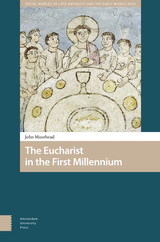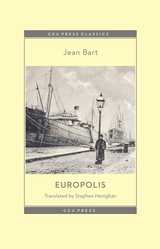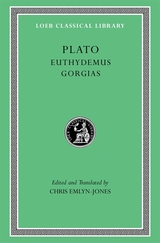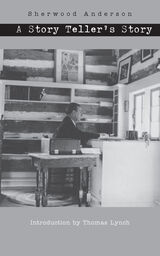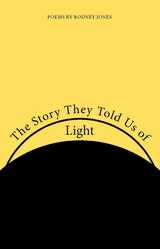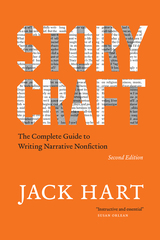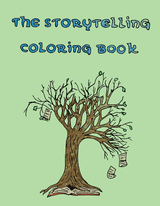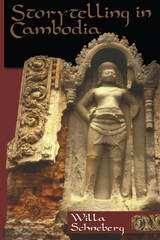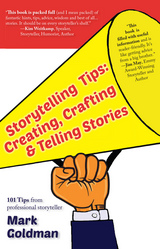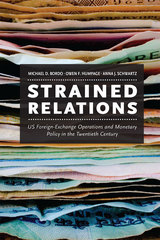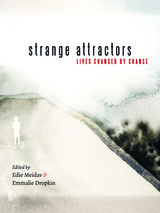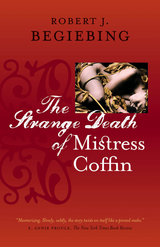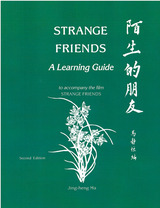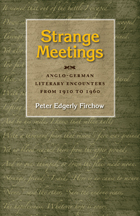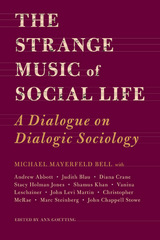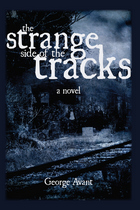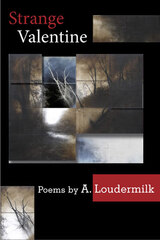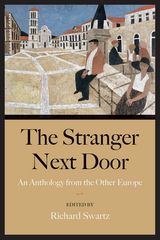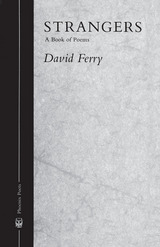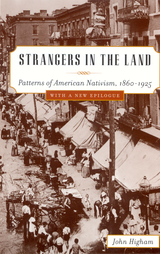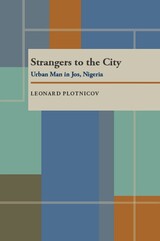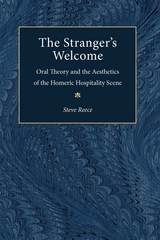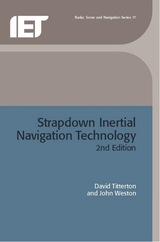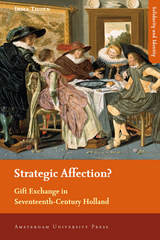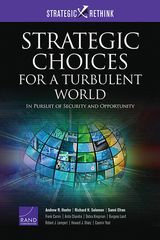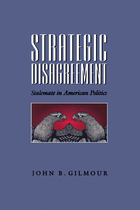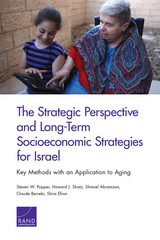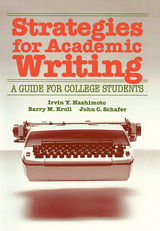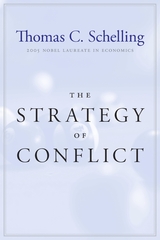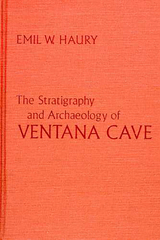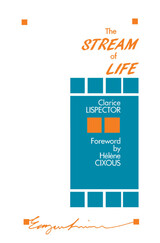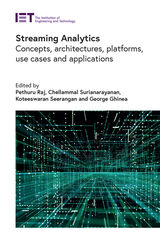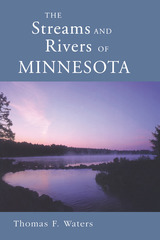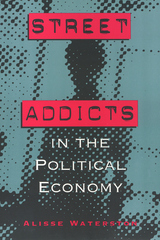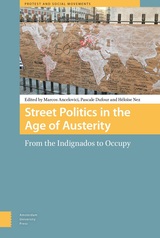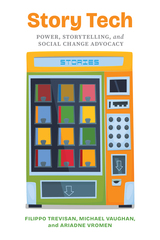 Story Tech: Power, Storytelling, and Social Change Advocacy
Filippo Trevisan, Michael Vaughan, and Ariadne Vromen
University of Michigan Press, 2025 Personal stories have the power to stir the heart, compel us to act, and spark social change. While advocacy organizations have long used storytelling in campaigns, the role technology plays has increased. Today, invitations to “share your story” are widespread on advocacy organizations and political campaign websites, calls to action, and social media pages. But what happens after one clicks “share”? And how does this affect which voices we hear—and which we don’t—in public discourse?
Story Tech explores the increasingly influential impact of technologies—such as databases, algorithms, and digital story banks—that are usually invisible to the public. It shows that hidden “story tech” enables political organizations to treat stories as data that can be queried for storylines and used to intervene in news and information cycles in real time. In particular, the authors review successful story-centered campaigns that helped change dominant narratives on disability rights, marriage equality, and essential workers’ rights in the United States and Australia. They compare the use of storytelling advocacy across different types of organizations including volunteer grassroots groups, large national advocacy coalitions, and trade unions, and examine how trends differ for storytellers, organizers, and their technology partners. As political stories shift to being “on demand,” they reshape power relationships in key public debates in ways that produce moments of tension as well as positive narrative change. Story Tech examines these trends and illustrates how storytelling success can—and should—be achieved in conjunction with personal dignity, privacy, and empowerment for storytellers and their communities, particularly marginalized ones.
A Story Teller's Story: A Memoir
Sherwood Anderson
University of Michigan Press, 2005 The tale of an American writer's journey through his own imaginative world and through the world of facts, with many of his experiences and impressions among other writers—told in many notes—in four books—and an Epilogue. This is a memoir of Midwestern life and culture from the author of Winesburg, Ohio.
"The voice of the soliloquist . . . amplifies the drama of A Story Teller's Story, as does the persistent theme of escape, from an America of fact and factories, marketing and manufacturing, to the borderless Ohios of imagination and creation."
—From the introduction by Thomas Lynch
The Story They Told Us of Light: Poems
Rodney Jones
University of Alabama Press, 1980 Jones has a lyrical mind and meanders through memory and imagination in his poems, fusing them and making them work to surprise the reader with intriguing and challenging images. The collection builds beautifully, each section nurturing the others, and all of it displays Jones’s fine talent—keenly intelligent, human, and compassionate. His quick, splendid sense of humor surprises the reader, playing one image off another that is seemingly unrelated to the first, yet achieving a sense of rightness in poem after poem.
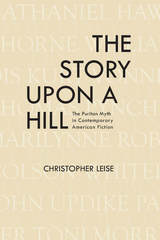 The Story upon a Hill: The Puritan Myth in Contemporary American Fiction
Christopher Leise
University of Alabama Press, 2017 In this provocative and thought-provoking volume, Christopher Leise sheds new light on modern American novelists who question not only the assumption that Puritans founded New England—and, by extension, American identity—but also whether Puritanism ever existed in the United States at all.
The Story upon a Hill: The Puritan Myth in Contemporary American Fiction analyzes the work of several of the most important contemporary writers in the United States as reinterpreting commonplace narratives of the country’s origins with a keen eye on the effects of inclusion and exclusion that Puritan myths promote. In 1989, Ronald Reagan recalled the words of Massachusetts Bay Colony governor John Winthrop, who imagined the colony as a “city upon a hill” for future nations to emulate. In Reagan’s speech, Winthrop’s signature rhetoric became an emblem of American idealism, and for many Americans, the Puritans’ New England was the place where the United States forged its original identity.
But what if Winthrop never gave that speech? What if he did not even write it? Historians cannot definitively answer these questions. In fact, no group that we refer to as American Puritans thought of themselves as Puritans. Rather, they were a group of dissident Christians often better defined by their disagreements than their shared beliefs.
Literary scholars interested in Anglo-American literary production from the seventeenth century through the present, historians, and readers interested in how ideas about Christianity circulate in popular culture will find fascinating the ways in which William Gaddis, Kurt Vonnegut, Thomas Pynchon, and Marilynne Robinson repurpose so-called Puritan forms of expression to forge a new narrative of New England’s Congregationalist legacy in American letters. Works by Colson Whitehead, Paul Auster, Toni Morrison, and others are also considered. The Story upon a Hill raises a provocative question: if the Puritans never existed as we understand them, what might American history look like in that context?
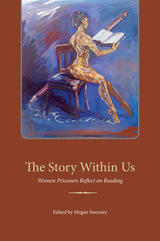 The Story Within Us: Women Prisoners Reflect on Reading
Edited by Megan Sweeney
University of Illinois Press, 2012 This volume features in-depth, oral interviews with eleven incarcerated women, each of whom offers a narrative of her life and her reading experiences within prison walls. The women share powerful stories about their complex and diverse efforts to negotiate difficult relationships, exercise agency in restrictive circumstances, and find meaning and beauty in the midst of pain. Their shared emphases on abuse, poverty, addiction, and mental illness illuminate the pathways that lead many women to prison and suggest possibilities for addressing the profound social problems that fuel crime.
Framing the narratives within an analytic introduction and reflective afterword, Megan Sweeney highlights the crucial intellectual work that the incarcerated women perform despite myriad restrictions on reading and education in U.S. prisons. These women use the limited reading materials available to them as sources of guidance and support and as tools for self-reflection and self-education. Through their creative engagements with books, the women learn to reframe their own life stories, situate their experiences in relation to broader social patterns, deepen their understanding of others, experiment with new ways of being, and maintain a sense of connection with their fellow citizens on both sides of the prison fence.
Storycraft, Second Edition: The Complete Guide to Writing Narrative Nonfiction
Jack Hart
University of Chicago Press, 2021 Jack Hart, master writing coach and former managing editor of the Oregonian, has guided several Pulitzer Prize–winning narratives to publication. Since its publication in 2011, his book Storycraft has become the definitive guide to crafting narrative nonfiction. This is the book to read to learn the art of storytelling as embodied in the work of writers such as David Grann, Mary Roach, Tracy Kidder, and John McPhee.
In this new edition, Hart has expanded the book’s range to delve into podcasting and has incorporated new insights from recent research into storytelling and the brain. He has also added dozens of new examples that illustrate effective narrative nonfiction.
This edition of Storycraft is also paired with Wordcraft, a new incarnation of Hart’s earlier book A Writer’s Coach, now also available from Chicago.
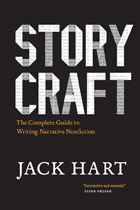 Storycraft: The Complete Guide to Writing Narrative Nonfiction
Jack Hart
University of Chicago Press, 2011
From the work of the New Journalists in the 1960s, to the New Yorker essays of John McPhee, Susan Orlean, Atul Gawande, and a host of others, to blockbuster book-length narratives such as Mary Roach’s Stiff or Erik Larson’s Devil in the White City, narrative nonfiction has come into its own. Yet writers looking for guidance on reporting and writing true stories have had few places to turn for advice. Now in Storycraft, Jack Hart, a former managing editor of the Oregonian who guided several Pulitzer Prize–winning narratives to publication, delivers what will certainly become the definitive guide to the methods and mechanics of crafting narrative nonfiction.
Hart covers what writers in this genre need to know, from understanding story theory and structure, to mastering point of view and such basic elements as scene, action, and character, to drafting, revising, and editing work for publication. Revealing the stories behind the stories, Hart brings readers into the process of developing nonfiction narratives by sharing tips, anecdotes, and recommendations he forged during his decades-long career in journalism. From there, he expands the discussion to other well-known writers to show the broad range of texts, styles, genres, and media to which his advice applies. With examples that draw from magazine essays, book-length nonfiction narratives, documentaries, and radio programs, Storycraft will be an indispensable resource for years to come.
 Storying the Self: Performance and Communities
Jess Moriarty and Ross Adamson
Intellect Books, 2023 Using writing and narrative to make sociopolitical meaning from autobiography.
Through a wide array of texts and methodologies, Storying the Self spotlights autoethnographic research—and pushes the discipline in new directions. This edited volume aims to explore critical and creative approaches to understanding the self in relation to vital social, cultural, and political spheres. Chapters touch on memory and nostalgia, voluntourism in Malawi, the importance of intersectionality, documentary filmmaking, epilepsy, and other experiences to examine the role of the self, as both researcher and storyteller.
Storying the Self features contributions by Ross Adamson, Suzy Bamblett, Emily Bell, Jenni Cresswell, Hannah Davita Ludikhuijze, Sandra Lyndon, Vanessa Marr, Éva Mikuska, Jess Moriarty, Deirdre Russell, Louise Spiers, Holly Stewart, and Lucianna Whittle. It is the first book in Intellect’s innovative new series Performance and Communities, which celebrates, challenges, and researches performance in the real world.
Storying Writing Center Labor for Anti-Capitalist Futures
Genie Nicole Giaimo
University Press of Colorado, 2025 Rooted in storying and testimony, Storying Writing Center Labor offers an inclusive, theoretically grounded, labor-oriented approach to writing center scholarship and praxis. While emotional labor and other wellness-related topics have long received attention in the field, issues of precarity, austerity, workism, and related concerns remain under-examined. Marrying ethnography and storying to uncover trends and circumstances related to writing center labor, this book offers insights into the lived working experiences of writing center professionals along with actionable items for creating just, sustainable, and intentional workspaces. Importantly, Storying Writing Center Labor tackles long-established labor issues in the field that have been and continue to be exacerbated by higher education’s austerity politics and reliance on disaster capitalism to inform decision making.
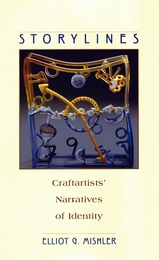 Storylines: Craftartists’ Narratives of Identity
Elliot G. Mishler
Harvard University Press, 2004 What do we mean when we refer to our “identity,” and how do we represent it in the stories we tell about our lives? Is “identity” a sustained private core, or does it change as circumstances and relationships shift? In this thoughtful and learned book, a recognized master of research interviewing explores these questions through analyses of in-depth interviews with five craftartists, who reflect on their lives and their efforts to sustain their form of work as committed artists in a world of mass production and standardization.
The artists describe their families of origin and the families they have created, and the conscious decisions, chance events, and life experiences that entered into the ways they achieved their adult artistic identities. Exploring these continuities, discontinuities, and unresolvable tensions in an analysis that brings new sophistication to a much-used term, Elliot Mishler suggests that “identity” is always dialogic and relational, a complex of partial subidentities rather than a unitary monad. More a verb than a noun, it reflects an individual’s modes of adaptation, appropriation, and resistance to sociocultural plots and roles.
With its critical review of narrative research methods, model of analysis for the systematic study of life stories and identity, and vision of how narrative studies may contribute to theory and research in the social sciences, Storylines is an eloquent and important book for narrative psychology and lifespan development.
 The Storytellers' Journey: AN AMERICAN REVIVAL
Joseph Daniel Sobol
University of Illinois Press, 1999 This is the seed of The Storytellers' Journey, Joseph Daniel Sobol's history of the past thirty years of American storytelling. In this compelling examination of the contemporary search for myth, Sobol explores the social and psychological roots of the storytelling revival and the ever-resurgent power of the storyteller.
Drawing on interviews with dozens of storytellers around the country, Sobol paints the revival as part of a larger process of cultural revitalization. He traces the growth of the preeminent revival organization, the National Association for the Preservation and Perpetuation of Storytelling (NAPPS), and details the individual passions, the organizational politics, and the economic, social, and mythic forces that have combined to transform a ragtag assemblage of enthusiasts into a national and international network of arts professionals.
A seemingly chance encounter between a restlessly ambitious high school teacher and a coonhunting tale on the car radio sets off a chain of inspirations that changes the face of a small southern town, touches lives across America, and revitalizes a homely but treasured art form.
Storytellers of Art Histories: Living and Sustaining a Creative Life
Edited by Yasmeen Siddiqui and Alpesh Kantilal Patel
Intellect Books, 2021 An anthology amplifying the voices of the figures reshaping art histories across disciplines and a range of fluid practices.
With a focus on gender, race (including whiteness), class, sexuality, and transnationality—all of which are often marginalized in dominant art histories—each individual has provided short, often personal contributions detailing how they become passionate about their practice. The contributors’ offerings are varied and surprising, appealing equally to people enmeshed in the field through their work as well as those with a beginner’s interest. Their pieces take various forms—epistolary, children’s fable, interview, coauthored narrative, pastiche, memoir, manifesto, and apology—and a number of the essays perform in their structure or content the theories they explore about publishing, curating, and archival work.
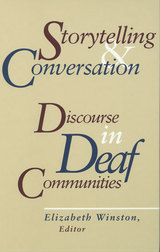 Storytelling and Conversation: Discourse in Deaf Communities
Elizabeth A. Winston
Gallaudet University Press, 1999 In this intriguing book, renowned sociolinguistics experts explore the importance of discourse analysis, a process that examines patterns of language to understand how users build cooperative understanding in dialogues. It presents discourse analyses of sign languages native to Bali, Italy, England, and the United States. Studies of internal context review the use of space in ASL to discuss space, how space in BSL is used to “package” complex narrative tasks, how signers choose linguistic tools to structure storytelling, and how affect, emphasis, and comment are added in text telephone conversations. Inquiries into external contexts observe the integration of deaf people and sign language into language communities in Bali, and the language mixing that occurs between deaf parents and their hearing children. Both external and internal contexts are viewed together, first in an examination of applying internal ASL text styles to teaching written English to Deaf students and then in a consideration of the language choices of interpreters who must shift footing to manage the “interpreter’s paradox.” Storytelling and Conversation casts new light on discourse analysis, which will make it a welcome addition to the sociolinguistics canon.
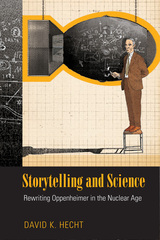 Storytelling and Science: Rewriting Oppenheimer in the Nuclear Age
David K. Hecht
University of Massachusetts Press, 2015 No single figure embodies Cold War science more than the renowned physicist J. Robert Oppenheimer. Although other scientists may have been more influential in establishing the institutions and policies of the nuclear age, none has loomed larger in the popular imagination than the “father of the atomic bomb.” Americans have been drawn to the story of the Manhattan Project Oppenheimer helped lead and riveted by the McCarthy-era politics that caught him in its crosshairs. Journalists and politicians, writers and artists have told Oppenheimer’s story in many different ways since he first gained notoriety in 1945. In Storytelling and Science, David K. Hecht examines why they did so, and what they hoped to achieve through their stories. From the outset, accounts of Oppenheimer’s life and work were deployed for multiple ends: to trumpet or denigrate the value of science, to settle old scores or advocate new policies, to register dissent or express anxieties. In these different renditions, Oppenheimer was alternately portrayed as hero and villain, establishment figure and principled outsider, “destroyer of worlds” and humanist critic. Yet beneath the varying details of these stories, Hecht discerns important patterns in the way that audiences interpret, and often misinterpret, news about science. In the end, he argues, we find that science itself has surprisingly little to do with how its truths are assimilated by the public. Instead its meaning is shaped by narrative traditions and myths that frame how we think and write about it.
The Storytelling Coloring Book: Ojibwe Traditions Coloring Book Series
Cassie Brown
Wisconsin Historical Society Press, 2018 This series offers children and their families the opportunity to learn about Ojibwe lifeways and teachings in an engaging and accessible manner. Included in each coloring book are word scrambles, mazes, and other activities to help children and their families engage more deeply with the information and have fun at the same time. While younger children (3+) can enjoy simply coloring the images, older children (6+) can also use the stories and glossaries to start learning more about the language and traditions of the Ojibwe people. The four books in this series focus on different aspects of Ojibwe life and traditions, from the powwow to wild ricing.
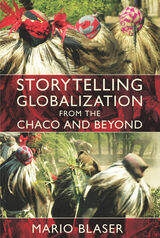 Storytelling Globalization from the Chaco and Beyond
Mario Blaser
Duke University Press, 2010 For more than fifteen years, Mario Blaser has been involved with the Yshiro people of the Paraguayan Chaco as they have sought to maintain their world in the face of conservation and development programs promoted by the state and various nongovernmental organizations. In this ethnography of the encounter between modernizing visions of development, the place-based “life projects” of the Yshiro, and the agendas of scholars and activists, Blaser argues for an understanding of the political mobilization of the Yshiro and other indigenous peoples as part of a struggle to make the global age hospitable to a “pluriverse” containing multiple worlds or realities. As he explains, most knowledge about the Yshiro produced by non-indigenous “experts” has been based on modern Cartesian dualisms separating subject and object, mind and body, and nature and culture. Such thinking differs profoundly from the relational ontology enacted by the Yshiro and other indigenous peoples. Attentive to people’s unique experiences of place and self, the Yshiro reject universal knowledge claims, unlike Western modernity, which assumes the existence of a universal reality and refuses the existence of other ontologies or realities. In Storytelling Globalization from the Chaco and Beyond, Blaser engages in storytelling as a knowledge practice grounded in a relational ontology and attuned to the ongoing struggle for a pluriversal globality.
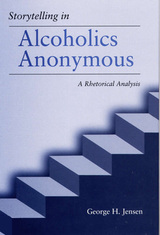 Storytelling in Alcoholics Anonymous: A Rhetorical Analysis
George H. Jensen
Southern Illinois University Press, 2000 Based on an ethnographic study spanning four years, George H. Jensen’s Storytelling in Alcoholics Anonymous: A Rhetorical Analysis calls upon Bakhtinian theory to analyze storytelling in AA. Jensen introduces his study with an analysis of “Bill W.’s Story” as it appears in the first chapter of AA’s central text, Alcoholics Anonymous. Drawing on Walter Ong’s work on orality and literacy, he argues that “Bill W.’s Story” as it appears in print cannot fully capture the oral tradition of storytelling as it occurs in AA meetings. In his first section, Jensen discusses storytelling as practiced by the Washingtonians, a temperance organization much like AA. He also discusses the influence of the Oxford Group’s (an international and interdenominational religious movement seeking to recapture the enthusiasm and dedication of first-century Christianity) spiritual program to the development of AA’s Twelve Steps. The remainder of the first section serves as an introduction of the culture of AA to outsiders. In the second section, Jensen covers Bakhtin’s theory of the relationship between the author and the hero of a text, using Lillian Roth’s autobiographies as counterexamples of AA talks. He devotes an entire chapter in this section to explaining how AA meetings provide an example of what Bakhtin meant by carnival, a process through which humor, irony, and parody supply a mechanism for questioning commonly held beliefs. He shows how newcomers to AA move away from their egocentric personae as practicing alcoholics to adopt a new identity within AA. Drawing further on Bakhtin, he examines the autobiographical moments of AA talks, stressing that these moments never become fully autobiographical. AA talks, Jensen argues, are fragmented, yet achieve coherence through the interweaving of two important chronotopes. Finally, using Bakhtin’s discussion of heroes in autobiography, Jensen discusses the kinds of heroes one typically finds in AA talks.
Storytelling in Cambodia
Willa Schneberg
Calyx, 2006 Poetry. Asian Studies. This moving, rich cycle of linked poems journeys from Cambodia's ancient mythic times to the killing fields and to the UN presence during Cambodia's first free elections. It bears witness to the plight of the Cambodian people and to all who have endured holocausts. The reader viscerally experiences the sweet-sour tastes of both jungle fruits and blackened, dead potato patches; the sights and sounds of the bombed Cambodian countryside and its fecund cities--as well as the humanity of others and ourselves.
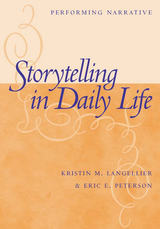 Storytelling In Daily Life: Performing Narrative
Kristin M. Langellier and Eric E. Peterson
Temple University Press, 2004 Storytelling is perhaps the most common way people make sense of their experiences, claim identities, and "get a life." So much of our daily life consists of writing or telling our stories and listening to and reading the stories of others. But we rarely stop to ask: what are these stories? How do they shape our lives? And why do they matter?The authors ably guide readers through the complex world of performing narrative. Along the way they show the embodied contexts of storytelling, the material constraints on narrative performances, and the myriad ways storytelling orders information and tasks, constitutes meanings, and positions speaking subjects. Readers will also learn that narrative performance is consequential as well as pervasive, as storytelling opens up experience and identities to legitimization and critique. The authors' multi-leveled model of strategy and tactics considers how relations of power in a system are produced, reproduced, and altered in performing narrative.The authors explain this strategic model through an extended discussion of family storytelling, using Franco Americans in Maine as their exemplar. They explore what stories families tell, how they tell them, and how storytelling creates family identities. Then, they show the range and reach of this strategic model by examining storytelling in diverse contexts: a breast cancer narrative, a weblog on the Internet, and an autobiographical performance on the public stage. Readers are left with a clear understanding of how and why the performance of narrative is the primary communicative practice shaping our lives today.
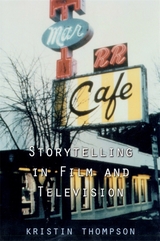 Storytelling in Film and Television
Kristin Thompson
Harvard University Press, 2003 Derided as simple, dismissed as inferior to film, famously characterized as a vast wasteland, television nonetheless exerts an undeniable, apparently inescapable power in our culture. The secret of television's success may well lie in the remarkable narrative complexities underlying its seeming simplicity, complexities Kristin Thompson unmasks in this engaging analysis of the narrative workings of television and film.
After first looking at the narrative techniques the two media share, Thompson focuses on the specific challenges that series television presents and the tactics writers have devised to meet them--tactics that sustain interest and maintain sense across multiple plots and subplots and in spite of frequent interruptions as well as weeklong and seasonal breaks. Beyond adapting the techniques of film, Thompson argues, television has wrought its own changes in traditional narrative form. Drawing on classics of film and television, as well as recent and current series like Buffy the Vampire Slayer, The Sopranos, and The Simpsons, she shows how adaptations, sequels, series, and sagas have altered long-standing notions of closure and single authorship. And in a comparison of David Lynch's Blue Velvet and Twin Peaks, she asks whether there can be an "art television" comparable to the more familiar "art cinema."
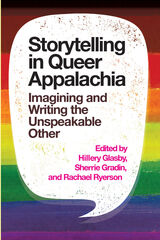 Storytelling in Queer Appalachia: Imagining and Writing the Unspeakable Other
Hillery Glasby
West Virginia University Press, 2020 In one of the first collections of scholarship at the intersection of LGBTQ studies and Appalachian studies, voices from the region’s valleys, hollers, mountains, and campuses blend personal stories with scholarly and creative examinations of living and surviving as queers in Appalachia. The essayists collected in Storytelling in Queer Appalachia are academics, social workers, riot grrrl activists, teachers, students, practitioners, scholars of divinity, and boundary crossers, all imagining how to make legible the unspeakable other of Appalachian queerness.
Focusing especially on disciplinary approaches from rhetoric and composition, the volume explores sexual identities in rural places, community and individual meaning-making among the Appalachian diaspora, the storytelling infrastructure of queer Appalachia, and the role of the metronormative in discourses of difference. Storytelling in Queer Appalachia affirms queer people, fights for queer visibility over queer erasure, seeks intersectional understanding, and imagines radically embodied queer selves through social media.
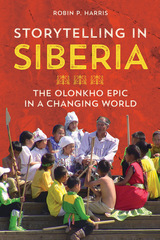 Storytelling in Siberia: The Olonkho Epic in a Changing World
Robin P. Harris
University of Illinois Press, 2017 Olonkho, the epic narrative and song tradition of Siberia’s Sakha people, declined to the brink of extinction during the Soviet era. In 2005, UNESCO’s Masterpiece Proclamation sparked a resurgence of interest in olonkho by recognizing its important role in humanity’s oral and intangible heritage. Drawing on her ten years of living in the Russian North, Robin P. Harris documents how the Sakha have used the Masterpiece program to revive olonkho and strengthen their cultural identity. Harris’s personal relationships with and primary research among Sakha people provide vivid insights into understanding olonkho and the attenuation, revitalization, transformation, and sustainability of the Sakha’s cultural reemergence. Interdisciplinary in scope, Storytelling in Siberia considers the nature of folklore alongside ethnomusicology, anthropology, comparative literature, and cultural studies to shed light on how marginalized peoples are revitalizing their own intangible cultural heritage.
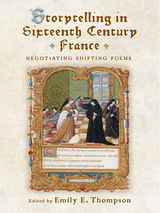 Storytelling in Sixteenth-Century France: Negotiating Shifting Forms
Emily E. Thompson
University of Delaware Press, 2022 Storytelling in Sixteenth-Century France is an innovative, interdisciplinary examination of parallels between the early modern era and the world in which we live today. Readers are invited to look to the past to see how then, as now, people turned to storytelling to integrate and adapt to rapid social change, to reinforce or restructure community, to sell new ideas, and to refashion the past. This collection explores different modalities of storytelling in sixteenth-century France and emphasizes shared techniques and themes rather than attempting to define narrow kinds of narrative categories. Through studies of storytelling in tapestries, stone, and music as well as distinct genres of historical, professional, and literary writing (addressing both erudite and more common readers), the contributors to this collection evoke a society in transition, wherein traditional techniques and materials were manipulated to express new realities.
Published by the University of Delaware Press. Distributed worldwide by Rutgers University Press.
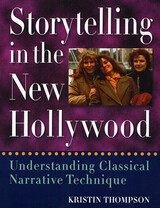 Storytelling in the New Hollywood: Understanding Classical Narrative Technique
Kristin Thompson
Harvard University Press, 1999 In a book as entertaining as it is enlightening, Kristin Thompson offers the first in-depth analysis of Hollywood's storytelling techniques and how they are used to make complex, easily comprehensible, entertaining films. She also takes on the myth that modern Hollywood films are based on a narrative system radically different from the one in use during the Golden Age of the studio system.
Drawing on a wide range of films from the 1920s to the 1990s--from Keaton's Our Hospitality to Casablanca to Terminator 2--Thompson explains such staples of narrative as the goal-oriented protagonist, the double plot-line, and dialogue hooks. She domonstrates that the "three-act structure," a concept widely used by practitioners and media commentators, fails to explain how Hollywood stories are put together.
Thompson then demonstrates in detail how classical narrative techniques work in ten box-office and critical successes made since the New Hollywood began in the 1970s: Tootsie, Back to the Future, The Silence of the Lambs, Groundhog Day, Desperately Seeking Susan, Amadeus, The Hunt for Red October, Parenthood, Alien, and Hannah and Her Sisters. In passing, she suggests reasons for the apparent slump in quality in Hollywood films of the 1990s. The results will be of interest to movie fans, scholars, and film practitioners alike.
Storytelling Tips: Creating, Crafting & Telling Stories
Mark Goldman
Parkhurst Brothers, Inc., 2015 “Mark's 101 snippets of sound advice are clearly written, touched with humor, offered in a common-sense, easily accessible format. This book is a quick yet worthwhile read, gleaned from Mark's own steady growth and experience as a successful storyteller and educator. Gather a tip or two at a time, or make this book your evening's entertainment; it can become a self-coaching guide for any new or learning storyteller and a great enrichment tool for the experienced raconteur.” --Lynette Ford, storyteller and author of Affrilachian Tales: Tales from the African-American Tradition in Appalachia
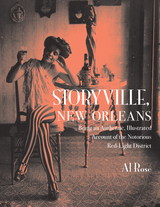 Storyville, New Orleans: Being an Authentic, Illustrated Account of the Notorious Red-Light District
Al Rose
University of Alabama Press, 1978 A true-to-life impression of Storyville, the only legally established red light district in the US
At the turn of the twentieth-century, there were hundreds of red-light districts in the United States, ranging in size from a discreet “house” or two in or near small towns and cities to block after bawdy block of brothels in larger cities such as Chicago and San Francisco. Storyville, New Orleans: Being an Authentic, Illustrated Account of the Notorious Red Light District seeks to offer the reader a reasonably true-to-life impression of Storyville, the most famous of the large districts and the only such district in the United States that was legally established.
Storyville was an area, carefully defined by law, outside of which prostitutes or women “notoriously abandoned to lewdness” were not permitted to live or work. Prostitutes working within the District were considered to be engaged in legal enterprises so long as they confined themselves to prostitution and other related activities such as dispensing food and drink to their customers.
From the early days of the French colony of Louisiana, a great number of prostitutes, women from correctional centers, and those with so-called “loose morals” were transported to the New World, resulting in a large proportion of the earliest female residents in New Orleans engaging in prostitution. During the course of Storyville’s legal existence from January 1, 1898 to November 12, 1917—it is evident that in establishing this district the New Orleans city council acted out of a sense of frustration after decades of attempting to deal rationally with a serious social problem. As the author says in the preface, “You may see this as a disorderly book about disorderly houses—and so it may be. But I doubt you will find it dull.”
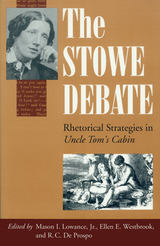 The Stowe Debate: Rhetorical Strategies in "Uncle Tom's Cabin"
Mason I. Lowance
University of Massachusetts Press, 1994 This collection of essays addresses the continuing controversy surrounding Uncle Tom's Cabin. On publication in 1852, Harriet Beecher Stowe's novel sparked a national debate about the nature of slavery and the character of those who embraced it. Since then, critics have used the book to illuminate a host of issues dealing with race, gender, politics, and religion in antebellum America. They have also argued about Stowe's rhetorical strategies and the literary conventions she appropriated to give her book such unique force.
The thirteen contributors to this volume enter these debates from a variety of critical perspectives. They address questions of language and ideology, the tradition of the sentimental novel, biblical influences, and the rhetoric of antislavery discourse. As much as they disagree on various points, they share a keen interest in the cultural work that texts can do and an appreciation of the enduring power of Uncle Tom's Cabin.
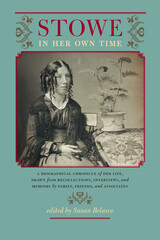 Stowe in Her Own Time: A Biographical Chronicle of Her Life, Drawn from Recollections, Interviews, and Memoirs by Family, F
Susan Belasco
University of Iowa Press, 2009 One of the first celebrity authors, Harriet Beecher Stowe (1811–1896) became famous almost overnight when Uncle Tom’s Cabin—which sold more than 300,000 copies in its first year of publication—appeared in 1852. Known by virtually all famous writers in the United States and many in England and regarded by many women writers as a role model because of her influence in the literary marketplace, Stowe herself was the subject of many books, articles, essays, and poems during her lifetime. This volume brings together for the first time a range of primary materials about Stowe’s private and public life written by family members, friends, and fellow writers who knew or were influenced by her before and after Uncle Tom’s Cabin catapulted her to fame. Included are periodical articles by Fanny Fern and Charles Dudley Warner; biographical essays by Sarah Josepha Hale and Rose Terry Cooke; letters by Oliver Wendell Holmes, Elizabeth Barrett Browning, and Harriet Jacobs; recollections by Frederick Douglass, Annie Adams Fields, Isabella Beecher Hooker, and Charles Beecher; and poems by Paul Laurence Dunbar and John Greenleaf Whittier. An introduction at the beginning of each essay connects it to its historical and cultural context, explanatory notes provide information about people and places, and the book includes a detailed introduction and a chronology of Stowe’s life. The thirty-eight recollections gathered in Stowe in Her Own Time form a biographical narrative designed to provide several perspectives on the famous author, sometimes in conflict and sometimes in agreement but always perceptive. The figure who emerges from this insightful, analytical collection is far more complex than the image she helped construct in her lifetime.
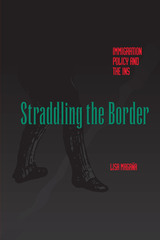 Straddling the Border: Immigration Policy and the INS
By Lisa Magaña
University of Texas Press, 2003 With the dual and often conflicting responsibilities of deterring illegal immigration and providing services to legal immigrants, the U. S. Immigration and Naturalization Service (INS) is a bureaucracy beset with contradictions. Critics fault the agency for failing to stop the entry of undocumented workers from Mexico. Agency staff complain that harsh enforcement policies discourage legal immigrants from seeking INS aid, while ever-changing policy mandates from Congress and a lack of funding hinder both enforcement and service activities. In this book, Lisa Magaña convincingly argues that a profound disconnection between national-level policymaking and local-level policy implementation prevents the INS from effectively fulfilling either its enforcement or its service mission. She begins with a history and analysis of the making of immigration policy which reveals that federal and state lawmakers respond more to the concerns, fears, and prejudices of the public than to the realities of immigration or the needs of the INS. She then illustrates the effects of shifting and conflicting mandates through case studies of INS implementation of the Immigration Reform and Control Act of 1986, Proposition 187, and the 1996 Welfare Reform and Responsibility Act and their impact on Mexican immigrants. Magaña concludes with fact-based recommendations to improve the agency's performance.
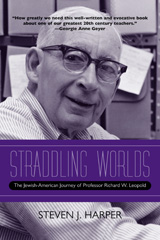 Straddling Worlds: The Jewish-American Journey of Professor Richard W. Leopold
Steven J. Harper
Northwestern University Press, 2008 Author Steven J. Harper pays tribute to a well-respected teacher with this biography of a distinguished William Smith Mason Professor of History at Northwestern University, Richard W. Leopold. Harper had maintained contact with his former professor, as had hundreds of other alumni, meeting with him in the apartment to which his age and health confined him. When Leopold invited him to review his biographical materials to prepare a New York Times obituary, Harper began to catch glimpses of a deeper history in Leopold’s life: that of Jews in America after the turn of the century. Across two years of Sundays, Leopold’s life came together and Harper began to notice parallels between the life of his professor and the life of his recently deceased father-in-law. Both grew up in less orthodox households but were still identified as Jewish by others; both attended Ivy League colleges, fighting (and beating) anti-Semitism there; and both served their country with distinction in World War II. The two men persevered through a twentieth century Jewish-American experience that they and many others shared, but rarely discussed. Steven Harper has caught them both on the page just in time to document their lives, their culture, and the nation that grew and changed alongside them.
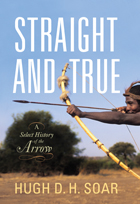 Straight and True: A Select History of the Arrow
Hugh D. H. Soar
Westholme Publishing, 2012 From Spears and Blowpipe Darts to the Ultimate Human-Powered Projectile
The arrow, essentially a specialized spear, is among the most ancient human inventions and can be found in cultures throughout the world. The need to launch a projectile farther and with greater accuracy than is possible with the human arm gave rise to a variety of solutions. Spearthrowers which extend the length of the user’s arm and therefore transfer greater power to the projectile were developed far back in prehistory, and both the American Indian atlatl and the Australian woomera are examples of this technology. Blowpipes, too, are recorded in various cultures and represent another ancient technology. It was soon discovered that a stringed bow could launch a small spearlike projectile we now know as the arrow, and this combination became the dominant method for shooting projectiles for tens of thousands of years. A wonderfully simple device, the arrow and bow revolutionized both hunting and warfare, not only because of the speed, force, and accuracy that could be achieved, but by the fact that the arrow makes almost no sound as it flies toward its target, providing an essential element of surprise. In Straight and True: A Select History of the Arrow, Hugh D. H. Soar describes the transition from hand-thrown spear to bow-launched arrow and then follows the arrow’s developments in cultures around the world and across time. The book describes arrows found in Neolithic sites; those used by North and South American Indians—including a detailed discussion of poison-tipped arrows; arrows used in China, Japan, and Mongolia; and finally the arrow in Europe, where it was successfully paired with the longbow during the Middle Ages. After discussing the development of the arrow for sport and recreation, the author completes his survey with the changes in technology introduced during the twentieth century though the use of the alloy of aluminum with other lightweight metals as well as synthetic materials to construct parts of the arrow. Relying on his considerable knowledge accumulated through decades of research, the author provides the reader with an appreciation for a humble device that, coupled with the bow, changed the history of the world.
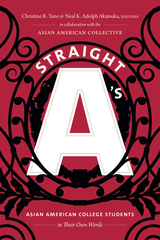 Straight A's: Asian American College Students in Their Own Words
Christine R. Yano and Neal K. Adolph Akatsuka, editors
Duke University Press, 2018 The American Dream of success for many Asian Americans includes the highest levels of education. But what does it mean to live that success? In Straight A’s Asian American students at Harvard reflect on their common experiences with discrimination, immigrant communities, their relationships to their Asian heritage, and their place in the university. They also explore the difficulties of living up to family expectations and the real-world effects of the "model minority" stereotype. While many of the issues they face are familiar to a wide swath of college students, their examinations of race, ethnicity, gender and sexuality, and culture directly speak to the Asian American experience in U.S. higher education. Unique and revealing, intimate and unreserved, Straight A’s furthers the conversation about immigrant histories, racial and ethnic stereotypes, and multiculturalism in contemporary American society.
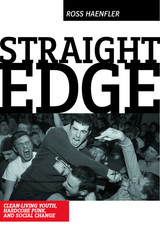 Straight Edge: Hardcore Punk, Clean Living Youth, and Social Change
Haenfler, Ross
Rutgers University Press, 2006 Straight edge is a clean-living youth movement that emerged from the punk rock subculture in the early 1980s. Its basic tenets promote a drug-free, tobacco-free, and sexually responsible lifestyle—tenets that, on the surface, seem counter to those typical of teenage rebellion. For many straight-edge kids, however, being clean and sober was (and still is) the ultimate expression of resistance—resistance to the consumerist and self-indulgent ethos that defines mainstream U.S. culture. In this first in-depth sociological analysis of the movement, Ross Haenfler follows the lives of dozens of straight-edge youths, showing how for these young men and women, and thousands of others worldwide, the adoption of the straight-edge doctrine as a way to better themselves evolved into a broader mission to improve the world in which they live. Straight edge used to signify a rejection of mind-altering substances and promiscuous sex, yet modern interpretations include a vegetarian (or vegan) diet and an increasing involvement in environmental and political issues. The narrative moves seamlessly between the author’s personal experiences and theoretical concerns, including how members of subcultures define “resistance,” the role of collective identity in social movements, how young men experience multiple masculinities in their quest to redefine manhood, and how young women establish their roles in subcultures. This book provides fresh perspectives on the meaning of resistance and identity in any subculture.
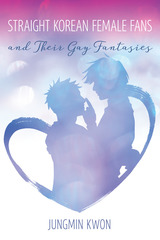 Straight Korean Female Fans and Their Gay Fantasies
Jungmin Kwon
University of Iowa Press, 2019 This book is about ardent Korean female fans of gay representation in the media, their status in contemporary Korean society, their relationship with other groups such as the gay population, and, above all, their contribution to reshaping the Korean media’s portrayal of gay people. Jungmin Kwon names the Korean female fandom for gay portrayals as “FANtasy” subculture, and argues that it adds to the present visibility of the gay body in Korean mainstream media, thus helping to change the public’s perspective toward sexually marginalized groups.
The FANtasy subculture started forming around text-based media, such as yaoi, fan fiction, and U.S. gay-themed dramas (like Will & Grace), and has been influenced by diverse social, political, and economic conditions, such as the democratization of Korea, an open policy toward foreign media products, the diffusion of consumerism, government investment in the culture, the Hollywoodization of the film industry, and the popularity of Korean culture abroad. While much scholarly attention has been paid to female fandom for homoerotic cultural texts in many countries, this book seeks to explore a relatively neglected aspect of the subculture: its location in and influence on Korean society at large.
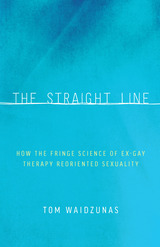 The Straight Line: How the Fringe Science of Ex-Gay Therapy Reoriented Sexuality
Tom Waidzunas
University of Minnesota Press, 2015 To be taken seriously, therapies that claim to “cure” homosexuality wrap themselves in lab coats. Even though the fit is bad, and such therapies and their theorists now inhabit the scientific fringe, the science of sexuality has made some adjustments, too, Tom Waidzunas tells us in this provocative work. Intervening in the politics of sexuality and science, The Straight Line argues that scientific definitions of sexual orientation do not merely reflect the results of investigations into human nature, but rather emerge through a process of social negotiation between opposing groups. The demedicalization of homosexuality and the discrediting of reparative therapies, ex-gay ministries, and reorientation research have, Waidzunas contends, required scientists to enforce key boundaries around scientific expertise and research methods. Drawing on extensive participant observation at conferences for ex-gays, reorientation therapists, mainstream psychologists, and survivors of ex-gay therapy, as well as interviews with experts and activists, The Straight Line traces reorientation debates in the United States from the 1950s to the present, following homosexuality therapies from the mainstream to the margins. As the ex-gay movement has become increasingly transnational in recent years, Waidzunas turns to Uganda, where ideas about the scientific nature of homosexuality influenced the passage of the Anti-Homosexuality Act of 2014. While most studies treat the ex-gay movement as a religious phenomenon, this book looks at how the movement, in its attempts to establish legitimacy, has engaged with scientific institutions, shaping virulent anti-gay public policy.
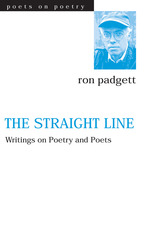 The Straight Line: Writing on Poetry and Poets
Ron Padgett
University of Michigan Press, 2000 The Straight Line brings together memoir, informal talks, autobiographical essays, unconventional book reviews, instructional pieces, imaginative speculations on the nature of reading, and poems about writing. What distinguishes these pieces is Ron Padgett's refreshing sense of humor and the changing, unexpected angles on his point of view. He pokes fun at the concept of "finding one's poetic voice," has a dream conversation with a Russian poet, talks to his typewriter, parodies Robert Frost, deconstructs the haiku, finds weird word lists in the dictionary, and extols the pleasures of mistakes in writing.
But along with the playful wit comes Padgett's serious fascination with how words work. Essays discuss such subjects as the otherness of languages; French poets and their relationship to Cubist painters; an afternoon with the poet Edwin Denby; a tribute to Ted Berrigan; twentieth-century modernism; and suggestions for using the computer to write poetry.
The book concludes with pieces that Padgett has written during his thirty years as a teacher of poetry. Essays explore the unexpected relationships between poetry and dance; the practical value of using "gimmicks" to inspire poetry writing; and some radical and entertaining ideas for innovative ways to read creatively.
Ron Padgett is Publications Director, Teachers and Writers Collaborative. His books include Albanian Diary, Creative Reading, and Old Faithful: 18 Writers Present Their Favorite Writing Assignments.
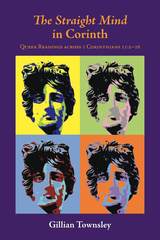 The Straight Mind in Corinth: Queer Readings across 1 Corinthians 11:2-16
Gillian Townsley
SBL Press, 2017 A new reading that troubles and transgresses the normal with regard to biblical studies and our understandings of gender and sexuality
Despite its lack of both historical and exegetical clarity, 1 Corinthians 11:2-16 has often been fundamental to understandings of gender and sexuality in many Christian traditions. In particular, a hierarchical model of gender and a heterosexual model of sexuality tend to dominate and are presented as “natural” and “God-ordained.” With the materialist lesbian theory of Monique Wittig providing the theoretical basis for discussion, this book intersects various biblical, theological, and queer lines of inquiry across 1 Corinthians 11:2-16 in order to reveal and challenge these models of gender and sexuality that lie behind both the text itself and its various interpretations.
Features
- Reveals the complex relationship between effeminacy, masculinity and sexual relations in the first century Greco-Roman environment of the New Testament
- Explores the ideologies of sexuality that underlie much of the debate within evangelical circles
- Examines Karl Barth’s theology on the binary pairing of “man and woman” as asymmetrically related to each other and to God through the notion of the imago dei, revealing and challenging the ways in which this reflects androcentric and patriarchal ideologies
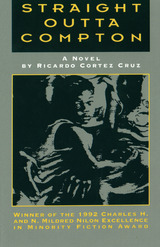 Straight Outta Compton
Ricardo Cortez Cruz
University of Alabama Press, 1992 Samples from all aspects of black life in its search to have its characters find what rapper Heavy D. would call a “Peaceful Journey”
Straight Outta Compton is about living large, living in the fast lane. It raps to its readers about being black, being born and raised in the L.A. ghetto, being so-called "Niggaz 4-Life," being sweet on black life (for those in it, the beat goes on). It focuses on the lives of two black men, Rooster and Clive-nem, who grow up together in Compton. He and Rooster split up, fall into rival gangs-the Bloods and the Crips-and being to hate each other. Clive has other problems besides Rooster-namely, Compton. He thinks that he's made a girl pregnant. He's involved with gangs.
Straight Outta Compton samples from all aspects of black life in its search to have its characters find what rapper Heavy D. would call a, "Peaceful Journey." It wasn't just written; it was mixed by a DJ, and the result is hyped!
 Straight Power Concepts in the Middle East: US Foreign Policy, Israel and World History
Gregory Harms
Pluto Press, 2010 How did the US become a world power? How did it become involved in the Middle East? What is the history and nature of its 'special relationship' with Israel?
Given the increase in tensions in the Middle East, and the United States' involvement in them, news coverage is in abundance. Yet, the reportage and discussion of American foreign policy is often narrow in scope, offering little background or context. The subject is routinely treated with the vocabulary provided by government officials, presenting best intentions while conceding occasional mistakes and unfortunate incidents. As Gregory Harms demonstrates in Straight Power Concepts, the historical record bears out a different vocabulary and tells a story that sharply contrasts with the common assumptions.
In this brief and accessible account, the reader is guided through the panoramic sweep of world and American history, reviewing how the US became a world power, how the Middle East became 'modern' and how Israel became an American 'strategic asset.' In so doing, the book provides a broad frame of reference, illustrating that recent developments are closer to business-as-usual and nothing resembling the rhetoric commonly used by heads of state, press secretaries, news media, and commentators.
As in his highly successful book The Palestine-Israel Conflict, Harms makes complex subjects accessible to everyone, without sacrificing analytical rigour. This book should be the first port of call for students and anyone seeking clarity and a historical elucidation of current events involving the United States, Israel, and the Middle East.
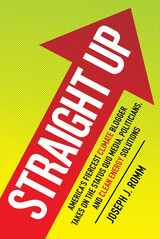 Straight Up: America's Fiercest Climate Blogger Takes on the Status Quo Media, Politicians, and Clean Energy Solutions
Joseph J. Romm
Island Press, 2010 In 2009, Rolling Stone named Joe Romm to its list of "100 People Who Are Changing America." Romm is a climate expert, physicist, energy consultant, and former official in the Department of Energy. But it’s his influential blog, one of the "Top Fifteen Green Websites" according to Time magazine, that’s caught national attention. Climate change is far more urgent than people understand, Romm says, and traditional media, scientists, and politicians are missing the story.
Straight Up draws on Romm’s most important posts to explain the dangers of and solutions to climate change that you won’t find in newspapers, in journals, or on T.V. Compared to coverage of Jay-Z or the latest philandering politician, climate change makes up a pathetically small share of news reports. And when journalists do try to tackle this complex issue, they often lack the background to tell the full story. Despite the dearth of reporting, polls show that two in five Americans think the press is actually exaggerating the threat of climate change. That gives Big Oil, and others with a vested interest in the status quo, a huge opportunity to mislead the public.
Romm cuts through the misinformation and presents the truth about humanity’s most dire threat. His analysis is based on sophisticated knowledge of renewable technologies, climate impacts, and government policy, written in a style everyone can understand. Romm shows how a 20 percent reduction in global emissions over the next quarter century could improve the economy; how we can replace most coal and with what technologies; why Sarah Palin wears a polar bear pin; and why controversial, emerging technologies like biochar have to be part of the solution.
The ultimate solution, Romm argues, is bigger than any individual technology: it’s citizen action. Without public pressure, Washington and industry don’t budge. With it, our grandkids might just have a habitable place to live.
“The Web’s most influential climate-change blogger” and “Hero of the Environment 2009”
—Time Magazine
“I trust Joe Romm on climate.”
—Paul Krugman, New York Times
“America’s fiercest climate-change activist-blogger” and one of “The 100 People Who Are Changing America”
— Rolling Stone
“One of the most influential energy and environmental policy makers in the Obama era”
— U.S. News & World Report
“The indispensable blog”
—Thomas Friedman, New York Times
“One of the most influential energy and environmental policy makers in the Obama era”
— U.S. News & World Report
“The indispensable blog”
—Thomas Friedman, New York Times
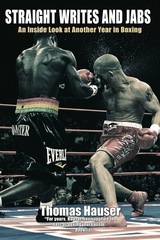 Straight Writes and Jabs: An Inside Look at Another Year in Boxing
Thomas Hauser
University of Arkansas Press, 2013 Commenting on Thomas Hauser's annual collections of articles on boxing, Ring Magazine declared, "What makes Hauser's stories so extraordinary is that the man many consider 'The Dean of Boxing Writers' refuses to allow his admiration for the sport to blind him to its dark side. His annual volumes on boxing have become required reading for hardcore and casual fans alike." Straight Writes and Jabs is the latest in the popular series. It brings readers into the dressing room with elite champions in the moments before some of 2012's biggest fights. Hauser's award-winning investigative journalism is on display in a groundbreaking exposé of the use of performance-enhancing drugs. There's a look back in time at the incomparable Archie Moore and much more. Thomas Hauser is the author of forty-five books. His first work, Missing, was made into an Academy Award–winning film. He later authored Muhammad Ali: His Life and Times, the definitive biography of the most famous fighter ever. In 2004, the Boxing Writers Association of America honored Hauser with the Nat Fleischer Award for Career Excellence in Boxing Journalism.
Strained Relations: US Foreign-Exchange Operations and Monetary Policy in the Twentieth Century
Michael D. Bordo, Owen F. Humpage, and Anna J. Schwartz
University of Chicago Press, 2015 During the twentieth century, foreign-exchange intervention was sometimes used in an attempt to solve the fundamental trilemma of international finance, which holds that countries cannot simultaneously pursue independent monetary policies, stabilize their exchange rates, and benefit from free cross-border financial flows. Drawing on a trove of previously confidential data, Strained Relations reveals the evolution of US policy regarding currency market intervention, and its interaction with monetary policy. The authors consider how foreign-exchange intervention was affected by changing economic and institutional circumstances—most notably the abandonment of the international gold standard—and how political and bureaucratic factors affected this aspect of public policy.
Strained Silicon Heterostructures: Materials and devices
C.K. Maiti
The Institution of Engineering and Technology, 2001 This book comprehensively covers the areas of materials growth, characterisation and descriptions for the new devices in siliconheterostructure material systems. In recent years, the development of powerful epitaxial growth techniques such as molecular beam epitaxy (MBE), ultra-high vacuum chemical vapour deposition (UHVCVD) and other low temperature epitaxy techniques has given rise to a new area of research of bandgap engineering in silicon-based materials. This has paved the way not only for heterojunction bipolar and field effect transistors, but also for other fascinating novel quantum devices. This book provides an excellent introduction and valuable references for postgraduate students and research scientists.
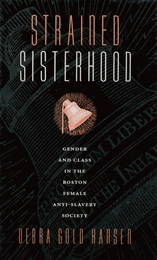 Strained Sisterhood: Gender and Class in the Boston Female Anti-Slavery Society
Debra Gold Hansen
University of Massachusetts Press, 2009 Why do some feminists advocate male-female equality while others remain committed to gender difference? What are the sociocultural foundations of these seemingly opposing gender constructs and why has the American feminist movement failed to articulate an ideology that encompasses both?
Debra Gold Hansen explores the origins of the equality-versus-difference debate by examining the Boston Female Anti-Slavery Society, which disbanded in 1840 over this very issue. After establishing a historical framework for women's lives in early nineteenth-century Boston, Hansen analyzes the membership of the Society along the lines of race, religion, and socioeconomic status. Through her findings, she concludes that many of the issues that estranged female abolitionists in antebellum Boston continue to divide women today, testifying not to the strength of the bonds between women but to the fragility of those ties.
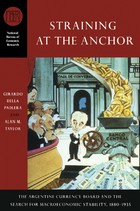 Straining at the Anchor: The Argentine Currency Board and the Search for Macroeconomic Stability, 1880-1935
Gerardo della Paolera and Alan M. Taylor
University of Chicago Press, 2001 The "Argentine disappointment"—why Argentina persistently failed to achieve sustained economic stability during the twentieth century—is an issue that has mystified scholars for decades. In Straining the Anchor, Gerardo della Paolera and Alan M. Taylor provide many of the missing links that help explain this important historical episode. Written chronologically, this book follows the various fluctuations of the Argentine economy from its postrevolutionary volatility to a period of unprecedented prosperity to a dramatic decline from which the country has never fully recovered. The authors examine in depth the solutions that Argentina has tried to implement such as the Caja de Conversión, the nation's first currency board which favored a strict gold-standard monetary regime, the forerunner of the convertibility plan the nation has recently adopted.
With many countries now using—or seriously contemplating—monetary arrangements similar to Argentina's, this important and persuasive study maps out one of history's most interesting monetary experiments to show what works and what doesn't.
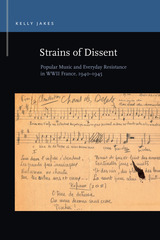 Strains of Dissent: Popular Music and Everyday Resistance in WWII France, 1940 - 1945
Kelly Jakes
Michigan State University Press, 2019 During the German Occupation from 1940 to 1944, Resistance fighters, Parisian youth, and French prisoners of war mined a vast repertoire from a long national musical tradition and a burgeoning international entertainment industry, embracing music as a rhetorical resource with which to destabilize Nazi ideology and contest collaborationist Vichy propaganda. After the Liberation of 1944, popular music continued to mediate French political life, helping citizens to challenge American hegemony and recuperate their nation’s lost international standing. Ultimately, through song, French dissidents rejected Nazi subordination, the politics of collaboration, and American intervention and insisted upon a return to that trinity of traditional French values, liberté, egalité, fraternité. Strains of Dissent recovers the significance of music as a rhetorical means of survival, subversion, and national identity construction and illuminates the creative and cunning ways that individual citizens defied the Occupation outside of formal resistance networks and movements.
 The Strains of Economic Growth: Labor Unrest and Social Dissatisfaction in Korea
David L. Lindauer, Jong-Gie Kim, Joung-Woo Lee, Hy-Sop Lim, Jae-Young Son, and Ezra F. Vogel
Harvard University Press, 1997 By the mid-1980s, Korea's economic and political situation was becoming volatile. Labor relations were especially contentious. The Strains of Economic Growth, a collaborative research project between the Harvard Institute for International Development and the Korea Development Institute provides an analytic history of the economic causes of the labor unrest and popular discontent of the late 1980s. Set against rapid increases in wages and employment, worker dissatisfaction is traced to patterns of income inequality and to non-pecuniary dimensions of working life, including the suppression of labor organizations. The desire for greater political freedom also played an important role in the unprecedented unrest of this period.
The conclusions of this volume are essential for understanding the labor struggles that continue in Korea today and are highly relevant for policy makers from other emerging economies that wish to benefit from both the successes and failures of Korea's experience.
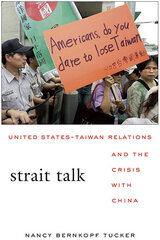 Strait Talk: United States-Taiwan Relations and the Crisis with China
Nancy Bernkopf Tucker
Harvard University Press, 2011 Relations among the United States, Taiwan, and China challenge policymakers, international relations specialists, and a concerned public to examine their assumptions about security, sovereignty, and peace. Only a Taiwan Straits conflict could plunge Americans into war with a nuclear-armed great power. In a timely and deeply informed book, Nancy Bernkopf Tucker traces the thorny relationship between the United States and Taiwan as both watch China’s power grow.
Although Taiwan–U.S. security has been intertwined since the 1950s, neither Taipei nor Washington ever fully embraced the other. Differences in priorities and perspectives repeatedly raised questions about the wisdom of the alignment. Tucker discusses the nature of U.S. commitments to Taiwan; the intricacies of policy decisions; the intentions of critical actors; the impact of Taiwan’s democratization; the role of lobbying; and the accelerating difficulty of balancing Taiwan against China. In particular, she examines the destructive mistrust that undermines U.S. cooperation with Taiwan, stymieing efforts to resolve cross-Strait tensions.
Strait Talk offers valuable historical context for understanding U.S.–Taiwan ties and is essential reading for anyone interested in international relations and security issues today.
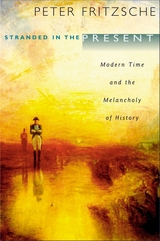 Stranded in the Present: Modern Time and the Melancholy of History
Peter Fritzsche
Harvard University Press, 2004 In this inventive book, Peter Fritzsche explores how Europeans and Americans saw themselves in the drama of history, how they took possession of a past thought to be slipping away, and how they generated countless stories about the sorrowful, eventful paths they chose to follow.
In the aftermath of the French Revolution, contemporaries saw themselves as occupants of an utterly new period. Increasingly disconnected from an irretrievable past, worried about an unknown and dangerous future, they described themselves as indisputably modern. To be cast in the new time of the nineteenth century was to recognize the weird shapes of historical change, to see landscapes scattered with ruins, and to mourn the remains of a bygone era.
Tracing the scars of history, writers and painters, revolutionaries and exiles, soldiers and widows, and ordinary home dwellers took a passionate, even flamboyant, interest in the past. They argued politics, wrote diaries, devoured memoirs, and collected antiques, all the time charting their private paths against the tremors of public life. These nostalgic histories take place on battlefields trampled by Napoleon, along bucolic English hedges, against the fairytale silhouettes of the Grimms' beloved Germany, and in the newly constructed parlors of America's western territories.
This eloquent book takes a surprising, completely original look at the modern age: our possessions, our heritage, and our newly considered selves.
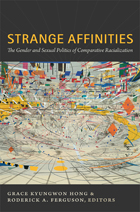 Strange Affinities: The Gender and Sexual Politics of Comparative Racialization
Grace Kyungwon Hong and Roderick A. Ferguson, eds.
Duke University Press, 2011 Representing some of the most exciting work in critical ethnic studies, the essays in this collection examine the production of racialized, gendered, and sexualized difference, and the possibilities for progressive coalitions, or the “strange affinities,” afforded by nuanced comparative analyses of racial formations. The nationalist and identity-based concepts of race underlying the mid-twentieth-century movements for decolonization and social change are not adequate to the tasks of critiquing the racial configurations generated by neocolonialism and contesting its inequities. Contemporary regimes of power produce racialized, gendered, and sexualized violence and labor exploitation, and they render subjects redundant and disposable by creating new, nominally nonracialized categories of privilege and stigma. The editors of Strange Affinities contend that the greatest potential for developing much-needed alternative comparative methods lies in women of color feminism, and the related intellectual tradition that Roderick A. Ferguson has called queer of color critique. Exemplified by the work of Audre Lorde, Cherríe Moraga, Barbara Smith, and the Combahee River Collective, these critiques do not presume homogeneity across racial or national groups. Instead, they offer powerful relational analyses of the racialized, gendered, and sexualized valuation and devaluation of human life. Contributors
Victor Bascara
Lisa Marie Cacho
M. Bianet Castellanos
Martha Chew Sánchez
Roderick A. Ferguson
Grace Kyungwon Hong
Helen H. Jun
Kara Keeling
Sanda Mayzaw Lwin
Jodi Melamed
Chandan Reddy
Ruby C. Tapia
Cynthia Tolentino
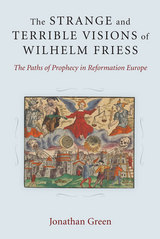 The Strange and Terrible Visions of Wilhelm Friess: The Paths of Prophecy in Reformation Europe
Jonathan Green
University of Michigan Press, 2014 Although nearly forgotten today, the prophetic writing of Wilhelm Friess was the most popular work of its kind in Germany in the second half of the sixteenth century. While the author “Wilhelm Friess” was a convenient fiction, his text had a long and remarkable history as it moved from the papal court in fourteenth-century Avignon, to Antwerp under Habsburg oppression, to Nuremberg as it was still reeling from Lutheran failures in the Schmalkaldic War, and then back to Antwerp at the outbreak of the Dutch revolt. Dutch scholars have recognized that Frans Fraet was executed for printing a prognostication by Willem de Vriese, but this prognostication was thought to be lost. A few scholars of sixteenth-century German apocalypticism have briefly noted the prophecies of Wilhelm Friess but have not studied them in depth. The Strange and Terrible Visions of Wilhelm Friess is the first to connect de Vriese and Friess, as well as recognize the prophecy of Wilhelm Friess as an adaptation of a French version of theVademecum of Johannes de Rupescissa, making these pamphlets by far the most widespread source for Rupescissa’s apocalyptic thought in Reformation Germany. The book explains the connection between the first and second prophecies of Wilhelm Friess and discovers the Calvinist context of the second prophecy and its connection to Johann Fischart, one of the most important German writers of the time. Jonathan Green provides a study of how textual history interacts with print history in early modern pamphlets and proposes a model of how early modern prophecies were created and transmitted. The Strange and Terrible Visions of Wilhelm Friess makes important contributions to the study of early modern German and Dutch literature, apocalypticism and confessionalization during the Reformation, and the history of printing in the sixteenth century.
 The Strange and True Tale of Horace Wells, Surgeon Dentist: A Novel
Michael Downs
Acre Books, 2018 In 1844, Horace Wells, a Connecticut dentist, encountered nitrous oxide, or laughing gas—then an entertainment for performers in carnival-like theatrical acts—and began administering the gas as the first true anesthetic. His discovery would change the world, reshaping medicine and humanity’s relationship with pain.
But that discovery would also thrust Wells into scandals that threatened his reputation, his family, and his sanity—hardships and triumphs that resonate in today’s struggles with what hurts us and what we take to stop the hurt.
In this novel, Michael Downs mines the gaps in the historical record and imagines the motivations and mysteries behind Wells’s morbid fascination with pain, as well as the price he and his wife, Elizabeth, paid—first through his obsession, then his addiction.
The book is a love story, but also a story of what love can’t redeem; of narcotic dreams and waking insanity; of humbug and miracle; of pain’s destruction and what pains can never be eased. Following Wells throughout New England and across the ocean to Paris, the novel immerses the reader in the nineteenth century, conveying through rich physical description and telling dialogue the tragic life of a dentist who gave everything to rid the world of suffering.
Strange Attractors: Lives Changed by Chance
Edie Meidav
University of Massachusetts Press, 2019 Has a stunning surprise or lucky encounter ever propelled you in an unanticipated direction? Are you doing what you always thought you would be doing with your life or has some unseen magnetism changed your course? And has that redirection come to seem inevitable? Edie Meidav and Emmalie Dropkin asked leading contemporary writers to consider these questions, which they characterize through the metaphor of "the strange attractor," a scientific theory describing an inevitable occurrence that arises out of chaos. Meidav's introduction and the thirty-five pieces collected here offer imaginative, arresting, and memorable replies to this query, including guidance from a yellow fish, a typewriter repairman, a cat, a moose, a bicycle, and a stranger on a train. Absorbing and provocative, this is nonfiction to be read in batches and bursts and returned to again and again.
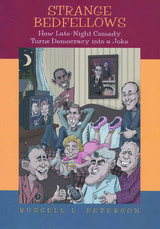 Strange Bedfellows: How Late-Night Comedy Turns Democracy into a Joke
Peterson, Russell
Rutgers University Press, 2008 It is no coincidence that presidential candidates have been making it a point to add the late-night comedy circuit to the campaign trail in recent years. In 2004, when John Kerry decided it was time to do his first national television interview, he did not choose CBS’s 60 Minutes, ABC’s Nightline, or NBC Nightly News. Kerry picked Comedy Central’s The Daily Show. When George W. Bush was lagging in the polls, his appearance on the David Letterman Show gave him a measurable boost. Candidates for the 2008 presidential election began their late-night bookings almost as soon as they launched their campaigns.
How can this be? The reason is that polls have been consistently finding that a significant number of Americans—and an even larger proportion of those under the age of thirty—get at least some of their “news” about politics and national affairs from comedy shows. While this trend toward what some have called “infotainment” seems to herald the descent of our national discourse—the triumph of entertainment over substance—the reality, according to Russell L. Peterson, is more complex. He explains that this programming is more than a mere replacement for traditional news outlets; it plays its own role in shaping public perception of government and the political process.
From Johnny Carson to Jon Stewart, from Chevy Chase’s spoofing of President Ford on Saturday Night Live to Stephen Colbert’s roasting of President Bush at the White House Correspondents Dinner, Strange Bedfellows explores what Americans have found so funny about our political institutions and the people who inhabit them, and asks what this says about the health of our democracy. Comparing the mainstream network hosts—Jay, Dave, Conan, and Johnny before them—who have always strived to be “equal opportunity offenders” to the newer, edgier crop of comedians on cable networks, Peterson shows how each brand of satire plays off a different level of Americans’ frustrations with politics.
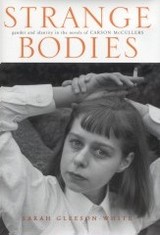 Strange Bodies: Gender and Identity in the Novels of Carson McCullers
Sarah Gleeson-White
University of Alabama Press, 2003 Adapts Mikhail Bakhtin's theory of the grotesque, as well as the latest in gender and psychoanalytic theory, to the major works of acclaimed southern writer Carson McCullers.
This innovative reconsideration of the themes of Carson McCullers's fiction argues that her work has heretofore suffered under the pall of narrow gothic interpretations, obscuring a more subversive agenda. By examining McCullers’s major novels—The Heart is a Lonely Hunter, Reflections in a Golden Eye, The Member of the Wedding, and The Ballad of the Sad Café—Gleeson-White locates a radical and specific form of the grotesque in the author's fiction: the liberating and redemptive possibilities of errant gender roles and shifting sexuality. She does this by employing Bakhtin's theory of the grotesque, which is both affirming and revolutionary, and thereby moves McCullers's texts beyond the 'gloom and doom' with which they have been charged for over fifty years. The first chapter explores female adolescence by focusing on McCullers's tomboys in the context of oppressive southern womanhood. The second chapter analyzes McCullers's fascinating struggle to depict homosexual desire outside of traditional stereotypes. Gleeson-White then examines McCullers's portrayals of feminine and masculine gender through the tropes of cross-dressing, transvestism, and masquerade. The final chapter takes issue with earlier readings of androgyny in the texts to suggest a more useful concept McCullers herself called "the hybrid." Underpinning the whole study is the idea of a provocative, dynamic form of the grotesque that challenges traditional categories of normal and abnormal. Because the characters and themes of McCullers's fiction were created in the 1940s and 1950s, a time of tension between the changing status of women and the southern ideal of womanhood, they are particularly fertile ground for a modern reexamination of this nature. Gleeson-White's study will be valued by scholars of American literature and gender and queer studies, by students of psychology, by academic libraries, and by readers of Carson McCullers. Strange Bodies is a thoughtful, highly credible analysis that adds dimension to the study of southern literature.
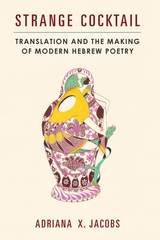 Strange Cocktail: Translation and the Making of Modern Hebrew Poetry
Adriana X. Jacobs
University of Michigan Press, 2018 For centuries, poets have turned to translation for creative inspiration. Through and in translation, poets have introduced new poetic styles, languages, and forms into their own writing, sometimes changing the course of literary history in the process. Strange Cocktail is the first comprehensive study of this phenomenon in modern Hebrew literature of the late nineteenth century to the present day. Its chapters on Esther Raab, Leah Goldberg, Avot Yeshurun, and Harold Schimmel offer close readings that examine the distinct poetics of translation that emerge from reciprocal practices of writing and translating. Working in a minor literary vernacular, the translation strategies that these poets employed allowed them to create and participate in transnational and multilingual poetic networks. Strange Cocktail thereby advances a comparative and multilingual reframing of modern Hebrew literature that considers how canons change and are undone when translation occupies a central position—how lines of influence and affiliation are redrawn and literary historiographies are revised when the work of translation occupies the same status as an original text, when translating and writing go hand in hand.
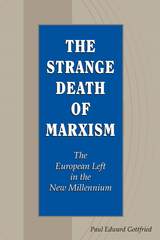 The Strange Death of Marxism: The European Left in the New Millennium
Paul Edward Gottrfied
University of Missouri Press, 2005 The Strange Death of Marxism seeks to refute certain misconceptions about the current European Left and its relation to Marxist and Marxist-Leninist parties that existed in the recent past. Among the misconceptions that the book treats critically and in detail is that the Post-Marxist Left (a term the book uses to describe this phenomenon) springs from a distinctly Marxist tradition of thought and that it represents an unqualified rejection of American capitalist values and practices. Three distinctive features of the book are the attempts to dissociate the present European Left from Marxism, the presentation of this Left as something that developed independently of the fall of the Soviet empire, and the emphasis on the specifically American roots of the European Left. Gottfried examines the multicultural orientation of this Left and concludes that it has little or nothing to do with Marxism as an economic-historical theory. It does, however, owe a great deal to American social engineering and pluralist ideology and to the spread of American thought and political culture to Europe. American culture and American political reform have foreshadowed related developments in Europe by years or even whole decades. Contrary to the impression that the United States has taken antibourgeois attitudes from Europeans, the author argues exactly the opposite. Since the end of World War II, Europe has lived in the shadow of an American empire that has affected the Old World, including its self-described anti-Americans. Gottfried believes that this influence goes back to who reads or watches whom more than to economic and military disparities. It is the awareness of American cultural as well as material dominance that fuels the anti-Americanism that is particularly strong on the European Left. That part of the European spectrum has, however, reproduced in a more extreme form what began as an American leap into multiculturalism. Hostility toward America, however, can be transformed quickly into extreme affection for the United States, which occurred during the Clinton administration and during the international efforts to bring a multicultural society to the Balkans. Clearly written and well conceived, The Strange Death of Marxism will be of special interest to political scientists, historians of contemporary Europe, and those critical of multicultural trends, particularly among Euro-American conservatives.
The Strange Death of Mistress Coffin
Robert J. Begiebing
University Press of New England, 2012 New England. 1648. The Piscataqua Settlement. A young woman has been found dead, her violated body stripped naked and thrown in a river. Her husband, a reclusive and learned man, has mysteriously halted his legal proceedings against the most likely suspect, who has disappeared into the wilderness. The settlement’s elders call on a young Englishman, Richard Browne, to discover the truth about what happened. But the more he learns, the more puzzling the crime becomes, and the more he finds himself drawn to the wife of the missing suspect.
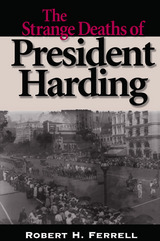 The Strange Deaths of President Harding
Robert H. Ferrell
University of Missouri Press, 1998 Available for the first time in paperback, The Strange Deaths of President Harding challenges readers to reexamine Warren G. Harding's rightful place in American history. For nearly half a century, the twenty-ninth president of the United States has consistently finished last in polls ranking the presidents. After Harding's untimely death in 1923, a variety of attacks and unsubstantiated claims left the public with a tainted impression of him. In this meticulously researched scrutiny of the mystery surrounding Harding's death, Robert H. Ferrell, distinguished presidential historian, examines the claims against this unpopular president and uses new material to counter those accusations. At the time of Harding's death there was talk of his similarity, personally if not politically, to Abraham Lincoln. Secretary of State Charles Evans Hughes described Harding as one of nature's noblemen, truehearted and generous. But soon after Harding's death, his reputation began to spiral downward. Rumors circulated of the president's death by poison, either by his own hand or by that of his wife; allegations of an illegitimate daughter were made; and question were raised concerning the extent of Harding's knowledge of the Teapot Dome scandal and of irregularities in the Veterans' Bureau, as well as his tolerance of a corrupt attorney general who was an Ohio political fixer. Journalists and historians of the time added to his tarnished reputation by using sources that were easily available but not factually accurate. In The Strange Deaths of President Harding, Ferrell lays out the facts behind these allegations for the reader to ponder. Making the most of the recently opened papers of assistant White House physician Dr. Joel T. Boone, Ferrell shows that for years Harding suffered from high blood pressure, was under a great deal of stress, and overexerted himself; it was a heart attack that caused his death, not poison. There was no proof of an illegitimate child. And Harding did not know much about the scandals intensifying in the White House at the time of his death. In fact, these events were not as scandalous as they have since been made to seem. In this meticulously researched and eminently readable scrutiny of the mystery surrounding Harding's death, as well as the deathblows dealt his reputation by journalists, Ferrell asks for a reexamination of Harding's place in American history.
 Strange Dislocations: Childhood and the Idea of Human Interiority, 1780–1930
Carolyn Steedman
Harvard University Press, 1995 Strange, deformed, and piercingly beautiful, the child acrobat Mignon sprang onto the public stage in 1795. No child at all, but a figment of Goethe’s fiction, Mignon appeared and reappeared in countless forms and guises over the next century. The meaning of this compelling creature is at the center of Carolyn Steedman’s book, a brilliant account of how nineteenth-century notions of childhood, like those expressed in the figure of Mignon, gave birth to the modern idea of a self.
During the nineteenth century, a change took place in the way people in Western societies understood themselves—the way they understood the self and how it came into being. Steedman tracks this development through changing attitudes about children and childhood as these appear in literature and law, medicine, science, and social history. Moving from the world of German fiction to that of child acrobats and “street arabs” in nineteenth-century Britain, from the theories of Freud to those of Foucault, she shows how the individual and personal history that a child embodied came to represent human “insideness.” Particularly important for understanding this change is the part that Freudian psychoanalysis played, between 1900 and 1920, in summarizing and reformulating the Victorian idea that the core of an individual’s psychic identity was his or her own lost past, or childhood.
Using the perspectives of social and cultural history, and the history of psychology and physiology, Strange Dislocations traces a search for the self, for a past that is lost and gone, and the ways in which, over the last hundred years, the lost vision has come to assume the form of a child.
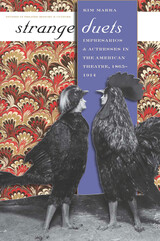 Strange Duets: Impresarios and Actresses in the American Theatre, 1865-1914
Kim Marra
University of Iowa Press, 2006 Autocratic male impresarios increasingly dominated the American stage between 1865 and 1914. Many rose from poor immigrant roots and built their own careers by making huge stars out of “undiscovered,” Anglo-identified actresses. Reflecting the antics of self-made industrial empire-builders and independent, challenging New Women, these theatrical potentates and their protégées gained a level of wealth and celebrity comparable to that of Hollywood stars today. In her engaging and provocative Strange Duets, Kim Marra spotlights three passionate impresario-actress relationships of exceptional duration that encapsulated the social tensions of the day and strongly influenced the theatre of the twentieth century. Augustin Daly and Ada Rehan, Charles Frohman and Maude Adams, and David Belasco and Mrs. Leslie Carter reigned over “legitimate” Broadway theatre, the venue of greatest social cachet for the monied classes. Unlike impresarios and actresses in vaudeville and burlesque, they produced full-length spoken drama that involved special rigors of training and rehearsal to sustain a character’s emotional “truth” as well as a high level of physical athleticism and endurance. Their efforts compelled fascination at a time when most people believed women’s emotions were seated primarily in the reproductive organs and thus were fundamentally embodied and sexual in nature. While the impresario ostensibly exercised full control over his leading lady, showing fashionable audiences that the exciting but unruly New Woman could be both tamed and enjoyed, she acquired a power of her own that could bring him to his knees.Kim Marra combines methods of cultural, gender, and sexuality studies with theatre history to explore the vexed mutual dependency between these status-seeking Svengalis and their alternately willing and resistant leading ladies. She illuminates how their on- and off-stage performances, highly charged in this Darwinian era with “racial” as well as gender, sexual, and class dynamics, tapped into the contradictory fantasies and aspirations of their audiences. Played out against a backdrop of enormous cultural and institutional transformation, the volatile romance of Daly and Rehan, closeted homosexuality of Frohman and Adams, and carnal expiations of Belasco and Carter produced strange duets indeed.
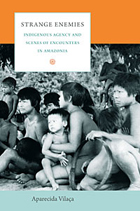 Strange Enemies: Indigenous Agency and Scenes of Encounters in Amazonia
Aparecida Vilaça
Duke University Press, 2010 In 1956, in the Brazilian state of Rondônia, a group of Wari’ Indians had their first peaceful contact with whites: Protestant missionaries and officers from the national Indian Protection Service. On returning to their villages, the Wari’ announced, “We touched their bodies!” Meanwhile the whites reported to their own people that “the region’s most warlike tribe has entered the pacification phase!” Initially published in Brazil, Strange Enemies is an ethnographic narrative of the first encounters between these peoples with radically different worldviews. During the 1940s and 1950s, white rubber tappers invading the Wari’ lands raided the native villages, shooting and killing their victims as they slept. These massacres prompted the Wari’ to initiate a period of intense retaliatory warfare. The national government and religious organizations subsequently intervened, seeking to “pacify” the Indians. Aparecida Vilaça was able to interview both Wari’ and non-Wari’ participants in these encounters, and here she shares their firsthand narratives of the dramatic events. Taking the Wari’ perspective as its starting point, Strange Enemies combines a detailed examination of these cross-cultural encounters with analyses of classic ethnological themes such as kinship, shamanism, cannibalism, warfare, and mythology.
 Strange Eventful Histories: Identity, Performance, and Xu Wei's Four Cries of a Gibbon
Shiamin Kwa
Harvard University Press, 2012 When it comes to really knowing a person, is what you see really what you get? Is it ever all you get? In this first critical study and annotated translation of the dramatic masterpiece Four Cries of a Gibbon by the late-Ming dynasty Chinese playwright Xu Wei, author Shiamin Kwa considers the ways that people encounter and understand each other in extraordinary circumstances. With its tales of crimes redressed in the next world and girls masquerading as men to achieve everlasting fame, Four Cries of a Gibbon complicated issues of self and identity when it appeared in the late Ming dynasty, paving the way for increasingly nuanced reflections on such questions in late Ming and early Qing fiction and drama. Beyond their historical context, Xu Wei’s influential plays serve as testimony to what Kwa argues are universal strategies found within drama. The heroes and heroines in these plays glide back and forth across the borders of life and death, of male and female, as they seek to articulate who they truly are. As the actors sort out these truths onstage, the members of the audience are invited to consider the truths that they live with offstage.
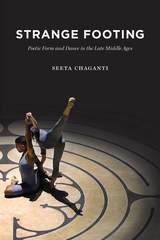 Strange Footing: Poetic Form and Dance in the Late Middle Ages
Seeta Chaganti
University of Chicago Press, 2018 For premodern audiences, poetic form did not exist solely as meter, stanzas, or rhyme scheme. Rather, the form of a poem emerged as an experience, one generated when an audience immersed in a culture of dance encountered a poetic text.
Exploring the complex relationship between medieval dance and medieval poetry, Strange Footing argues that the intersection of texts and dance produced an experience of poetic form based in disorientation, asymmetry, and even misstep. Medieval dance guided audiences to approach poetry not in terms of the body’s regular marking of time and space, but rather in the irregular and surprising forces of virtual motion around, ahead of, and behind the dancing body. Reading medieval poems through artworks, paintings, and sculptures depicting dance, Seeta Chaganti illuminates texts that have long eluded our full understanding, inviting us to inhabit their strange footings askew of conventional space and time.
Strange Footing deploys the motion of dance to change how we read medieval poetry, generating a new theory of poetic form for medieval studies and beyond.
“Strange Friends”: A Learning Guide
Jing-heng Ma
University of Michigan Press, 1991 The Chinese film Moshengde Pengyou follows the adventures of three strangers with mysterious pasts who meet on a train. For intermediate students. The new edition incorporates script, vocabulary, and exercises into a single volume and includes a new section that provides a scene-by-scene description of the action using simple vocabulary and grammar.
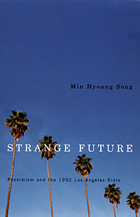 Strange Future: Pessimism and the 1992 Los Angeles Riots
Min Hyoung Song
Duke University Press, 2005 Sometime near the start of the 1990s, the future became a place of national decline. The United States had entered a period of great anxiety fueled by the shrinking of the white middle class, the increasingly visible misery of poor urban blacks, and the mass immigration of nonwhites. Perhaps more than any other event marking the passage through these dark years, the 1992 Los Angeles riots have sparked imaginative and critical works reacting to this profound pessimism. Focusing on a wide range of these creative works, Min Hyoung Song shows how the L.A. riots have become a cultural-literary event—an important reference and resource for imagining the social problems plaguing the United States and its possible futures. Song considers works that address the riots and often the traumatic place of the Korean American community within them: the independent documentary Sa-I-Gu (Korean for April 29, the date the riots began), Chang-rae Lee’s novel Native Speaker, the commercial film Strange Days, and the experimental drama of Anna Deavere Smith, among many others. He describes how cultural producers have used the riots to examine the narrative of national decline, manipulating language and visual elements, borrowing and refashioning familiar tropes, and, perhaps most significantly, repeatedly turning to metaphors of bodily suffering to convey a sense of an unraveling social fabric. Song argues that these aesthetic experiments offer ways of revisiting the traumas of the past in order to imagine more survivable futures.
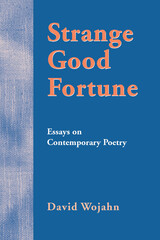 Strange Good Fortune: Essays on Contemporary Poetry
David Wojahn
University of Arkansas Press, 2000 Strange Good Fortune is a collection of fifteen essays on the state of American verse, written by a well-known American poet whose criticism has also attracted considerable attention. Passionate in his engagement with both the practice of poetry and in the observation of verse as it exists within an increasingly professionalized and sometimes perplexing scene, Wojahn follows in the tradition of poet-critics such as Randall Jarrell and Delmore Schwartz, offering provocative and insightful observations about such topics as the persistence of autobiographical poetry, poetry and politics, the creative writing industry, American poets and travel, recent literary hoaxes, and the poetry of depression and invective. The essays discuss not only familiar figures such as Elizabeth Bishop, James Wright, and Robert Lowell but also under-appreciated poets such as Weldon Kees, Frederick Seidel, and Armand Schwerner, as well as younger poets such as Mark Doty, Susan Mitchell, and Denis Johnson. Wojahn's is a humanistic and practical criticism, devoid of theoretical cant, and capable of both acute analysis of individual poems and larger generalizations about poetic method. Forceful, readable, and unflappable, Strange Good Fortune is the work of a poet writing about what he cares about; it is not hobbled by jargon or addled by theory.
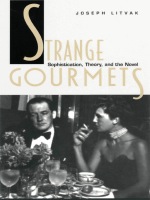 Strange Gourmets: Sophistication, Theory, and the Novel
Joseph Litvak
Duke University Press, 1997 Theoretically sophisticated: How often has this term been used to distinguish a work of contemporary criticism, and what, exactly, does it mean? In Strange Gourmets, Joseph Litvak reclaims sophistication from its negative connotations and turns the spotlight on those who, even as they demonize sophistication, surreptitiously and extensively use it.
Though commonly thought of as a kind of worldliness at its best and an elitist snobbery at its worst, sophistication, Litvak reminds us, remains tied to its earlier, if forgotten, meaning of "perversion"—a perversion whose avatars are the homosexual and the intellectual. Proceeding with his investigations from a specifically gay academic perspective, Litvak presents thoroughly inventive readings of novels by Austen, Thackeray, and Proust, and of theoretical works by Adorno and Barthes, each text epitomizing sophistication in one of its more familiar modes. Among the issues he explores are the ways in which these texts teach sophistication, the embarrassment that sophistication causes the sophisticated, and how the class politics of sophistication are inseparable from its sexual politics. Helping gay, queer, feminist, and other provocative critics to make the most of their bad publicity, Litvak mindfully celebrates sophistication’s economy of taste and pleasure.
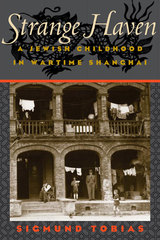 Strange Haven: A Jewish Childhood in Wartime Shanghai
Sigmund Tobias
University of Illinois Press, 1998 In the wake of Kristallnacht, November 9, 1938, Sigmund Tobias and his parents fled their home in Germany and relocated to one of the few cities in the world that offered shelter without requiring a visa: the notorious pleasure capital, Shanghai. Seventeen thousand Jewish refugees flocked to Hongkew, a section of Shanghai ruled by the Japanese, and they created an active community that continued to exist through the end of the war. Tobias's coming-of-age story unfolds within his descriptions of Jewish life in the exotic sanctuary of Shanghai. Depleted by disease and hunger, constantly struggling with primitive and crowded conditions, the refugees faced shortages of food, clothing, and medicine. Tobias also observes the underlife of Shanghai: the prostitution and black market profiteering, the brutal lives of the Chinese workers, the tensions between Chinese and Japanese during the war, and the paralyzing inflation and the approach of the communist "liberators" afterward. Richly detailed, Strange Haven opens a little-documented chapter of the Holocaust and provides a fascinating glimpse of life for these foreigners in a foreign land. An epilogue describes the changes Tobias observed when he returned to Shanghai forty years later as a visiting professor.
 Strange Hymn: Poems
Carlene Kucharczyk
University of Massachusetts Press, 2025 “I’ll tell you everything I know. Though there might not be much to tell,” confesses the speaker in Strange Hymn by Carlene Kucharczyk, in a meticulously crafted lyrical journey exploring morality and humanity. The poems here grapple with understanding physical loss: “I wanted / to know at once and definitively our animal bodies / were not all we were. It is shameful to be this fragile.” They also engage with the more abstract slipping away of memory and time: “Since I was born, I have been forgetting. Forgetting what I have wanted to remember.” Kucharczyk’s insightful poems blur the lines between history and myth, love and grief, song and silence.
Caught between lamenting the passage of time and rejoicing in small beauties, she writes, “I tell you, I wish we could stay here longer / in this hotel of lost grandeur, this palace of interesting disarray, / and stay here with these pieces of the impersonal past / that have somehow not yet outlasted their small lights.” Each moment reflects on our ephemeral lives from musings on art and nature to reflections on the self, asking “Is a mirror a sort of glass house? / And, is there a way to see ourselves besides through the glass?”
As readers traverse this collection, they learn how the body sings, the many iterations of Mary, what sirens truly think of Odysseus, how a Morning Glory unfurls, and lessons in orthodontics, but most importantly, how to live with absence. Kucharczyk is a master of manipulating time and space through her dynamic use of form, creating a narrative that begs, “After I’m gone, don’t bury my body— / Burn it, and turn it into song.”
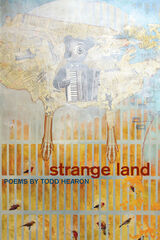 Strange Land
Todd Hearon
Southern Illinois University Press, 2010 Todd Hearon’s haunting debut collection chronicles the twin paths of isolation and desire in the search for meaning and union with others. On his pilgrimage through the lost worlds of earth and the soul, the speaker encounters drought in both the literal and spiritual sense as he confronts desolate landscapes, from the brown remnants of ruined cities, to the depths of the human heart and man’s capacity for utter destruction. Yet even though he frequently encounters darkness, he never ceases to seek beauty. He is a man who wears many faces, from Adam, staring down a bleak future bereft of Paradise, to the doomed poet Shelley, drowned off the coast of Italy. He speaks as a man adrift in his own life, seeking an answer to his emptiness, an estranged traveler through memory and longing. Lyrical and intense, Strange Land is a quest for understanding and human connection. Strange Land It goes without saying a word: the world under cover of midnight snow, what we have known of pageantry and lilac, leaf and song subsumed in starless silence. Waking at dawn into the tremulous blue of the room, as in earth’s afterglow, we lie, lidless, listening, as crows call out the ear’s horizons. What year is it? Into what country were we born and now must make our way? Outside the pane the stillness feels ancestral but the ghosts not yours, not mine. My émigré, we are cut off. An ocean to the east churns in chiaroscuro while unseen ranges to the south deflect our passage, what passage might have been. This country seems the passing of a dream to a moonscape’s still immitigable white, a land’s amnesia where against the sky three needling black birds fly and slip like an ellipsis out of sight.
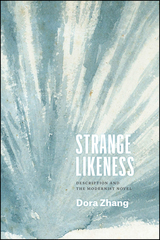 Strange Likeness: Description and the Modernist Novel
Dora Zhang
University of Chicago Press, 2020 The modern novel, so the story goes, thinks poorly of mere description—what Virginia Woolf called “that ugly, that clumsy, that incongruous tool.” As a result, critics have largely neglected description as a feature of novelistic innovation during the twentieth century. Dora Zhang argues that descriptive practices were in fact a crucial site of attention and experimentation for a number of early modernist writers, centrally Woolf, Henry James, and Marcel Proust.
Description is the novelistic technique charged with establishing a common world, but in the early twentieth century, there was little agreement about how a common world could be known and represented. Zhang argues that the protagonists in her study responded by shifting description away from visualizing objects to revealing relations—social, formal, and experiential—between disparate phenomena. In addition to shedding new light on some of the best-known works of modernism, Zhang opens up new ways of thinking about description more broadly. She moves us beyond the classic binary of narrate-or-describe and reinvigorates our thinking about the novel. Strange Likeness will enliven conversations around narrative theory, affect theory, philosophy and literature, and reading practices in the academy.
Strange Meetings: Anglo-German Literary Encounters from 1910 to 1960
Peter Edgerly Firchow
Catholic University of America Press, 2008 Building upon his earlier book The Death of the German Cousin (1986), renowned author Peter Edgerly Firchow focuses Strange Meetings on major modern British writers from Eliot to Auden and explores the development of British conceptions and misconceptions of Germany and Germans from 1910 to 1960.
The Strange Music of Social Life: A Dialogue on Dialogic Sociology
Authored by Michael Mayerfeld Bell, edited by Ann Goetting
Temple University Press, 2011 The Strange Music of Social Life presents a dialogue on dialogic sociology, explored through the medium of music. Sociologist and composer Michael Mayerfeld Bell presents an argument that both sociology and classical music remain largely in the grip of a nineteenth-century totalizing ambition of prediction and control. He provides the refreshing approach of "strangency" to explain a sociology that tries to understand not only the regularities of social life but also the social conditions in which people do what we do not expect. Nine important sociologists and musicians respond-often vigorously-to the conversation Bell initiates by raising pivotal questions. The Strange Music of Social Life concludes with Bell's reply to those responses and offers new insight into sociology and music sociology.
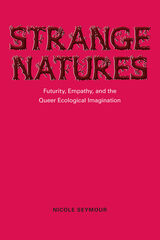 Strange Natures: Futurity, Empathy, and the Queer Ecological Imagination
Nicole Seymour
University of Illinois Press, 2013 In Strange Natures, Nicole Seymour investigates the ways in which contemporary queer fictions offer insight on environmental issues through their performance of a specifically queer understanding of nature, the nonhuman, and environmental degradation. By drawing upon queer theory and ecocriticism, Seymour examines how contemporary queer fictions extend their critique of "natural" categories of gender and sexuality to the nonhuman natural world, thus constructing a queer environmentalism. Seymour's thoughtful analyses of works such as Leslie Feinberg's Stone Butch Blues, Todd Haynes's Safe, and Ang Lee's Brokeback Mountain illustrate how homophobia, classism, racism, sexism, and xenophobia inform dominant views of the environment and help to justify its exploitation. Calling for a queer environmental ethics, she delineates the discourses that have worked to prevent such an ethics and argues for a concept of queerness that is attuned to environmentalism's urgent futurity, and an environmentalism that is attuned to queer sensibilities.
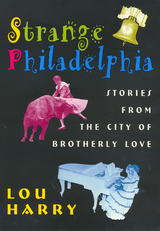 Strange Philadelphia: Stories from the City of Brotherly Love
Lou Harry
Temple University Press, 1995 Most history books paint Philadelphia as a place of revolutionary greatness, but there exists a forgotten, alternative history of the City of Brotherly Love. For example, did you know that • when Ben Franklin was Deputy Postmaster General for the American colonies, he ignored rival printers' requests for mailing priveleges. Instead, he loaded down the mail carriers with his own papers and enjoyed the use of a private delivery system that cut off the competition. • the Slinky was created by a marine engineer stationed in Philadelphia, who later became an evangelist and Bible salesman in Bolivia, leaving behind his wife, his children, and the Slinky fortune. • 50,000 people gathered in Fairmount Park in 1953 hoping to see a vision of the Virgin Mary, who three schoolgirls claimed to have seen near a park bush. Though the Blessed Mother never did appear, visitors to the site left behind offerings of rosaries, flowers, crutches, and over $6,000. • while 11,000 spectators sat in the Spectrum waiting for the Ice Capades to begin, 32-mile-an-hour winds blew a chunk of the roof off the city's newly constructed stadium. Find these and a hundred more "strange" and fascinating stories in this collection of vignettes. These pieces of the past can't be found in history books—they are surprising side bars to the famous and not-so-famous events and people of historical Philadelphia.
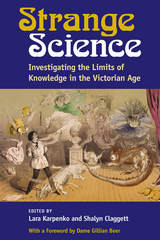 Strange Science: Investigating the Limits of Knowledge in the Victorian Age
Edited by Lara Karpenko and Shalyn Claggett
University of Michigan Press, 2017 The essays in Strange Science examine marginal, fringe, and unconventional forms of scientific inquiry, as well as their cultural representations, in the Victorian period. Although now relegated to the category of the pseudoscientific, fields like mesmerism and psychical research captured the imagination of the Victorian public. Conversely, many branches of science now viewed as uncontroversial, such as physics and botany, were often associated with unorthodox methods of inquiry. Whether ultimately incorporated into mainstream scientific thought or categorized by 21st century historians as pseudo- or even anti-scientific, these sciences generated conversation, enthusiasm, and controversy within Victorian society.
To date, scholarship addressing Victorian pseudoscience tends to focus either on a particular popular science within its social context or on how mainstream scientific practice distinguished itself from more contested forms. Strange Science takes a different approach by placing a range of sciences in conversation with one another and examining the similar unconventional methods of inquiry adopted by both now-established scientific fields and their marginalized counterparts during the Victorian period. In doing so, Strange Science reveals the degree to which scientific discourse of this period was radically speculative, frequently attempting to challenge or extend the apparent boundaries of the natural world. This interdisciplinary collection will appeal to scholars in the fields of Victorian literature, cultural studies, the history of the body, and the history of science.
The Strange Side of the Tracks
George Avant
Parkhurst Brothers, Inc., 2015 Some kids have to grow up fast. This is the story of Lonnie Tobin, one such young man. Weary of the physical abuse his mother is subjected to from his father, he takes matt ers into his own hands. Convincing her to flee their fearful home life, son and mother sneak away in the night to the small town of Rocky Branch, where they find peace with her family. It is a corner of the world he thought they had left behind forever. But mysteries abound in this little wooded village, and an unexpected adventure begins when word of a nightly monster on the loose stirs fear among the residents. Young Lonnie soon forgets about his father and becomes fascinated by the story, only to find he might be spending a litt le too much time on The Strange Side of the Tracks.
 Strange Stability: How Cold War Scientists Set Out to Control the Arms Race and Ended Up Serving the Military-Industrial Complex
Benjamin Wilson
Harvard University Press, 2025 An eye-opening reconsideration of the Cold War arms control movement, showing how scientists who presented themselves as independent-minded opponents of the arms race in fact functioned as agents of the military-industrial complex that profited from it.
Do scientists speak truth to power? During the Cold War, a group of elite American strategists and science advisors claimed to do precisely that. Styling themselves as figures of rationality and restraint, they insisted that mutual assured destruction was the natural logic of the atomic age: as long as nuclear deterrence was credible, no one would ever shoot first. This doctrine, known as “strategic stability,” became the foundation of the arms control movement, earning its promoters widespread admiration as independent thinkers and steadfast peacemakers. But in this crucial counterhistory, Benjamin Wilson shows that we have misunderstood them and their efforts. Arms controllers, he reveals, worked not to restrain the nuclear arms race but to marginalize more radical approaches to disarmament.
As Wilson makes clear, strategic stability was never the objective condition the analysts presented it as. It was a flexible, contested metaphor based on ideas from physics, economics, and cybernetics, capable of justifying a wide range of policies. Yet the advisors insisted on one upshot above all: constant military research and development and the continuous upgrading of America’s strategic arsenal. That these policies benefited the military-industrial complex is no surprise, since many arms control thinkers were creatures of the Pentagon and corporate defense contractors. Some even spoke out against missile development in public while backing lavish funding behind closed doors.
Strange Stability powerfully corrects decades of mythmaking surrounding arms control. At the same time, Wilson offers a sobering reflection on the dream of technocratic restraint. The well-placed insider who resists powerful institutions is an enticing character, but more fictional than real.
 Strange Tales from Edo: Rewriting Chinese Fiction in Early Modern Japan
William D. Fleming
Harvard University Press, 2023 In Strange Tales from Edo, William Fleming paints a sweeping picture of Japan’s engagement with Chinese fiction in the early modern period (1600–1868). Large-scale analyses of the full historical and bibliographical record—the first of their kind—document in detail the wholesale importation of Chinese fiction, the market for imported books and domestic reprint editions, and the critical role of manuscript practices—the ascendance of print culture notwithstanding—in the circulation of Chinese texts among Japanese readers and writers.
Bringing this big picture to life, Fleming also traces the journey of a text rarely mentioned in studies of early modern Japanese literature: Pu Songling’s Liaozhai zhiyi (Strange Tales from Liaozhai Studio). An immediate favorite of readers on the continent, Liaozhai was long thought to have been virtually unknown in Japan until the modern period. Copies were imported in vanishingly small numbers, and the collection was never reprinted domestically. Yet beneath this surface of apparent neglect lies a rich hidden history of engagement and rewriting—hand-copying, annotation, criticism, translation, and adaptation—that opens up new perspectives on both the Chinese strange tale and its Japanese counterparts.
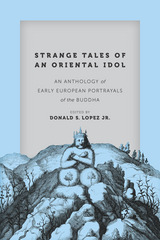 Strange Tales of an Oriental Idol: An Anthology of Early European Portrayals of the Buddha
Edited by Donald S. Lopez Jr.
University of Chicago Press, 2016 We tend to think that the Buddha has always been seen as the compassionate sage admired around the world today, but until the nineteenth century, Europeans often regarded him as a nefarious figure, an idol worshipped by the pagans of the Orient. Donald S. Lopez Jr. offers here a rich sourcebook of European fantasies about the Buddha drawn from the works of dozens of authors over fifteen hundred years, including Clement of Alexandria, Marco Polo, St. Francis Xavier, Voltaire, and Sir William Jones.
Featuring writings by soldiers, adventurers, merchants, missionaries, theologians, and colonial officers, this volume contains a wide range of portraits of the Buddha. The descriptions are rarely flattering, as all manner of reports—some accurate, some inaccurate, and some garbled—came to circulate among European savants and eccentrics, many of whom were famous in their day but are long forgotten in ours. Taken together, these accounts present a fascinating picture, not only of the Buddha as he was understood and misunderstood for centuries, but also of his portrayers.
 Strange Tastes: Aesthetics and the Public in Latin American and Latinx Feminisms
Monique Roelofs
Duke University Press, 2026 Strange Tastes is a philosophical excursion into aesthetic experience and the public through the works of contemporary Latin American and Latinx women writers and artists. In a careful study of this revelatory archive, Monique Roelofs shows how life lived aesthetically can embrace public space instead of surrendering it to the constrictive forces of gendering and racial capital. Joining notions of sensibility grounded in Enlightenment aesthetics with the creative capabilities of a decolonial aesthetics, Roelofs looks to practices that animate the public through intimate, social, and political registers, particularly by engaging the historical and critical potentialities of disinterested play and what she calls “strange tastes,” or the unusual, uncanny, and nonnormative desires and sensations of marginalized individuals. Through sustained attention to materiality and lived experience, Roelofs offers a feminist philosophy of aesthetics that takes seriously the role of the public, where strange tastes turn aesthetic imaginaries into powerful possibilities to remake self, city, nation, and world.
Strange Valentine
A. Loudermilk
Southern Illinois University Press, 2005 A. Loudermilk utilizes confessional, persona, and third-person poems throughout this intimate yet socially conscious first collection. Strange Valentine is an indictment of love, fixating on the paranoid relationship between body and state, on the dangerous relationship between family history and sexual history, and on the elusive relationship between gender and sexuality—specifically as experienced in the working-class towns of the southernmost Midwest. Riding highly crafted rhythms in sound, line, and invented form, Loudermilk’s multivoiced storytelling resounds with the characters and heartbreaks of the heartland.
 Strange Words: Retelling and Reception in the Medieval Roland Textual Tradition
Margaret Jewett Burland
University of Notre Dame Press, 2007
Strange Words offers separate but interrelated close readings of four medieval Roland texts in French and Occitan, paying particular attention to scenes in which the speeches of various characters perform or mirror narrative functions. In this clearly written and accessible book, Margaret Jewett Burland focuses on discourse and narrative within the fictional universe to argue persuasively that medieval authors and audiences understood the battle of Roncevaux and its aftermath as an appropriate story in which to incorporate implicit commentaries about contemporary issues. It allows readers to interpret the well-known Oxford version, TheSong of Roland, within the expanded context of its larger medieval textual tradition. The similarities and differences among the four versions Burland analyzes help modern readers to better appreciate which aspects of a given Roland text are most innovative and thus most suggestive of its particular political, social, or literary agenda.
Strange Words is the first book in fifty years to compare multiple medieval Roland texts, and the first to do so in English. It will be welcomed by students and scholars of French and medieval studies.
“Strange Words: Retelling And Reception In The Medieval Roland Textual Tradition makes an original contribution to the field of studies on the textual tradition of the Chanson de Roland, and beyond that to studies of the medieval French epic and of medieval French literature. It is the only study of its kind since Jules Horrent’s 1951 book La Chanson de Roland dans les littératures française et espagnole au moyen áge.” —Joseph J. Duggan, University of California, Berkeley
“Strange Words offers the first major monograph on the French Roland corpus in all of its fascinating variety. Margaret Jewett Burland argues compellingly for understanding the Roland narratives as a group of self-conscious literary creations, written by people deeply concerned about the place of historical memory in their respective cultural milieus. Strange Words will surely become an obligatory starting point for future studies of Roncevaux.” —Michelle Warren, Dartmouth College
"Margaret Jewett Burland’s Strange Words: Retelling and Reception in the Medieval Roland Textual Tradition offers a perceptive and persuasive look not just at the Oxford Roland, but more importantly at what she terms the “Roncevaux tradition” that follows in its wake. Understanding the subsequent reception of the Roland material produces not only provocative insights into important but long overlooked avatars of Oxford, but also fresh angles on the masterpiece itself by placing it firmly within the tradition of medieval rewriting." —William W. Kibler, emeritus, University of Texas at Austin
“By focusing on the strangeness of words that report and reinterpret the Roncevaux legend, as retold by characters within the narrative or by multiple authors across the centuries from the Oxford Roland to the fifteenth-century Galien restoré, Margaret Burland provides an indispensable guide to the rewriting and multi-layered reception characteristic of the Roland textual tradition. Strange Words should be required reading for anyone who wants to teach or read the Song of Roland within its medieval context. Burland’s study of the Roncevaux tradition is no less essential for scholars working in a variety of fields where rewriting is the usual mode of literary production, whether in the multiple traditions of saints’ lives and Arthurian romance or in the self-conscious play and replay of postmodern fiction.” —Matilda Tomaryn Bruckner, Boston College
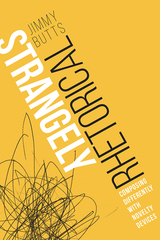 Strangely Rhetorical: Composing Differently With Novelty Devices
by Jimmy Butts
Utah State University Press, 2022 Strangely Rhetorical establishes the groundwork for strangeness as a lens under the broader interdisciplinary umbrella of rhetoric and composition and shares a series of rhetorical devices for practically thinking about how compositions are made unique. Jimmy Butts explores how strange, novel, weird, and interesting texts work and offers insight into how and why these forms can be invented, created, and stylized to generate the effective delivery of rhetorical messages in fun, divergent ways.
Using a new theoretical framework—that strangeness is inherent within all rhetorical interactions and is potentially useful—Butts demonstrates how rhetoric is always already coming from an Other, offering an ethical context for how defamiliarized texts work with different audiences. Applying examples of seven figures for composing in and across written, aural, visual, electronic, and spatial texts (the WAVES of media), Butts shows how divergence is possible in all sorts of refigured multimodal ways.
Strangely Rhetorical rethinks what exactly rhetoric is and does, considering the ways that strange compositions help rhetors connect across a broad range of networks in a world haunted by distance. This is a book about strange rhetoric for makers and creatives, for students and teachers, and for composers of all sorts.
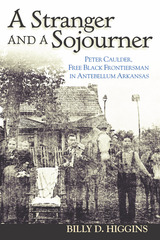 A Stranger and a Sojourner: Peter Caulder, Free Black Frontiersman in Antebellum Arkansas
Billy D. Higgins
University of Arkansas Press, 2004 A Stranger and a Sojourner: Peter Caulder, Free Black Frontiersman in Antebellum Arkansas tells the extraordinary story of Peter Caulder, a free African American settler in the Arkansas Territory. After serving as a rifleman in the war of 1812, Caulder established a community of free-born African Americans in northern Arkansas and was largely accepted by his white neighbors until an 1859 expulsion law forced the community to flee the state and settle in Missouri. Like many frontier people, Peter Caulder was unschooled and signed his name only with a mark. To document such a man’s life, and to determine how he thrived within a slave society and came to join a free black backwoods community, Billy Higgins has skillfully interwoven oft-neglected primary sources—many of which are reproduced here—from around the country; and through the information revealed in censuses, tax records, sutler’s account books, army returns, folk stories, land warrants, traveler’s journals, and newspaper notices, a fascinating—and groundbreaking—account of Caulder, his family, his friends, and his community has emerged.
 The Stranger from Omaha: Travel Narratives in the Cinema of Alexander Payne
Jason Sperb
University of Texas Press, 2025 The first in-depth analysis of the films of Alexander Payne through the lenses of authorship, tourism, and leisure. With the films Election, About Schmidt, Sideways, Nebraska, and The Holdovers, Alexander Payne has carved out an unusual role in American cinema as a bankable auteur. There is something about Payne’s neurotics and searchers, his working stiffs and disillusioned idealists—something funny, moving, and filled with insight. Jason Sperb dissects Payne’s oeuvre, focusing on the director’s penchant for travel narratives. Payne’s films usually center on male protagonists discontent with the emotional and material realities of the day-to-day and seeking satisfaction in some literal or metaphorical elsewhere. But their attempts to escape wind up perpetuating, rather than alleviating, the imbalance between labor and leisure that structures modern life. In this sense, Sperb argues, Payne’s characters are akin to tourists, searching for fleeting glimpses of the fulfillment they dream about. Examining themes of masculinity, nostalgia, whiteness, and class, The Stranger from Omaha is the first auteur study devoted to Payne’s delicately balanced cinematic world. An outsider even in his own heartland, Payne proves to be an artist working at a clarifying remove—a witness to the American condition, observing from just enough distance.
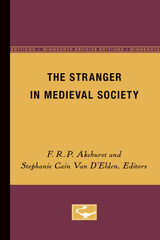 The Stranger in Medieval Society
Frank. R. P. Akehurst and Stephanie Cain Van D’Elden, Editors
University of Minnesota Press, 1998 The Stranger in Medieval Society was first published in 1998. Minnesota Archive Editions uses digital technology to make long-unavailable books once again accessible, and are published unaltered from the original University of Minnesota Press editions. The Stranger in Medieval Society examines the presence of outsiders in medieval Europe. Whether welcome or unwelcome, voluntary or involuntary, strangers appear in every society; they leave their own communities, venture into new environments, confront differences, and often spark changes. The first collection in medieval studies to concentrate on the notion of the stranger, these essays show how outsiders influenced the culture of Europe in the Middle Ages. Among the topics explored are Edward III and Sir Gawain and the Green Knight as historical and literary instances of chivalric skill and courage; political conflict in the late French epic Renaut de Montauban; and a group of people who were doubly strangers-some thirty thousand Jews, who after being expelled from France in 1306 returned under an experimental agreement a few years later. Contributors: William Calin, U of Florida; Susan Crane, Rutgers; Maria Dobozy, U of Utah; Edward R. Haymes, Cleveland State U; William Chester Jordan, Princeton U; Derek Pearsall, Harvard U; William D. Phillips Jr., U of Minnesota; Kathryn L. Reyerson, U of Minnesota; and Janet L. Solberg, Kalamazoo College. F. R. P. Akehurst is professor of French in the Department of French and Italian at the University of Minnesota. Stephanie Cain Van D'Elden is director of graduate studies for the program in Germanic philology at the University of Minnesota. This is volume 12 in the Medieval Cultures Series
 A Stranger in My Own Land: Sofia Casanova, a Spanish Writer in the European Fin de Siecle
Kirsty Hooper
Vanderbilt University Press, 2008 This is the first in-depth analysis of the works of the Galician-Spanish expatriate writer Sofía Casanova (1861-1958), a transnational poet, novelist, journalist, playwright, campaigner, translator, historian and intellectual, and one of the first Spanish women to support herself as a professional writer. Casanova, born in Galicia in rural northwest Spain, married a Pole and spent over seventy years traveling between Spain and Poland. A challenging writer and thinker who witnessed the First World War, the Russian Revolution and the rise of Franco at first hand, moved in the highest political and intellectual circles on both sides of Europe and blazed a trail as one of Spain's first female foreign correspondents, her remarkable achievements were gradually sidelined at home in increasingly reactionary Spain until, by the time of her death, she was remembered only as a perfectly patriotic wife and mother and icon of Francoist femininity.
This study addresses the scandalous disappearance of Casanova and her female contemporaries from accounts of the emergence of the modern Spanish nation. Arguing that women's perceived silence during this critical period in the formation of modern Iberian identities has significant repercussions even today, it takes her works as a case study for modeling a radical rethinking of the way we teach and research the crucial years around the turn of the twentieth century. The first study of Casanova's radical and compelling, but now forgotten, early narrative, it explores the Galician, Polish and Spanish context of her work, arguing that her transnational career demonstrates the inadequacies of existing models of national literary history. At the same time, recognizing Casanova's innovative and strategic use of literary genres and techniques traditionally denominated as "feminine" (and therefore excluded from discussions of "serious" national literature), it provides a model for re-evaluating the vast cultural store of popular and sentimental literature as a key part of the debates about the transition to modernity, in Spain and beyond.
 A Stranger in the Hague: The Letters of Queen Sophie of the Netherlands to Lady Malet, 1842–1877
S. W. Jackman and Hella Haasse, eds.
Duke University Press, 1989 Princess Sophie Frederika Mathilde of Wurttemberg (1818-1877) married William, Prince of Orange (and her first cousin) in 1839. Sophie (as she was known) was alert, well-educated, and ambitious, far the intellectual superior of her husband; as the great-granddaughter of Catherine the Great of Russia, she may have aspired to play an important role in guiding the affairs of the House of Orange. This was not to be. After the birth of two sons, her relations with her husband cooled, and with a few important exceptions she became isolated from the other members of the family at the Hague. Partly to overcome the resulting personal and intellectual isolation she turned to an extensive correspondence with heads of state, royal relatives, aristocratic acquaintances, political leaders, and intellectual figures. Family difficulties continued and even increased after William ascended the throne in 1849.
Sophie met her friend and confidant Marina Dora Spading, Lady Malt, when the latter was at the Hague with her diplomat husband in 1842. A lifelong friendship ensued, although they saw each other only infrequently thereafter. Sophie’s letters to Lady Malt are an extraordinary combination of comments on her personal situation and shrewd analyses of the European political arena. This selection of her surviving correspondence is opinionated, frank, and perceptive, and her letters are a unique commentary on the affairs of the Europe of the mid-nineteenth century.
 Stranger Magic: Charmed States and the Arabian Nights
Marina Warner
Harvard University Press, 2012 Our foremost theorist of myth, fairytales, and folktales explores the magical realm of the imagination where carpets fly, objects speak, dreams reveal hidden truths, and genies grant prophetic wishes. Stranger Magic examines the wondrous tales of the Arabian Nights, their profound impact on the West, and the progressive exoticization of magic since the eighteenth century, when the first European translations appeared.
The Nights seized European readers' imaginations during the siècle des Lumières, inspiring imitations, spoofs, turqueries, extravaganzas, pantomimes, and mauresque tastes in dress and furniture. Writers from Voltaire to Goethe to Borges, filmmakers from Raoul Walsh on, and countless authors of children's books have adapted its stories. What gives these tales their enduring power to bring pleasure to readers and audiences? Their appeal, Marina Warner suggests, lies in how the stories' magic stimulates the creative activity of the imagination. Their popularity during the Enlightenment was no accident: dreams, projections, and fantasies are essential to making the leap beyond the frontiers of accepted knowledge into new scientific and literary spheres. The magical tradition, so long disavowed by Western rationality, underlies modernity's most characteristic developments, including the charmed states of brand-name luxury goods, paper money, and psychoanalytic dream interpretation.
In Warner's hands, the Nights reveal the underappreciated cultural exchanges between East and West, Islam and Christianity, and cast light on the magical underpinnings of contemporary experience, where mythical principles, as distinct from religious belief, enjoy growing acceptance. These tales meet the need for enchantment, in the safe guise of oriental costume.
The Stranger Next Door: An Anthology from the Other Europe
Richard Swartz
Northwestern University Press, 2013 The Balkans have been so troubled by violence and misunderstanding that we have the verb “balkanize,” meaning to break up into smaller, warring components. While some of the region’s artists and thinkers have invariably fallen into nationalistic tendencies, the twenty-two prominent authors represented here, from the erstwhile Yugoslavia and its neighbors Albania and Bulgaria, have chosen to attempt to bridge these divides. The essays, biographical sketches, and stories in The Stranger Next Door form a project of understanding that picks up where politics fail. The English-language translation joins editions of the book that appeared concurrently in all of the participating countries.
 The Stranger, the Tears, the Photograph, the Touch: Divine Presence in Spain and Europe since 1500
William A. Christian Jr.
Central European University Press, 2017 This book is an expanded, larger-format, and more highly illustrated version of a smaller book released by CEU Press in 2011. It presents and comments on an extensive set of religious and personal photographs and illustrations that depict people along with divine beings or absent loved ones. First, Christian examines the periodic appearances of Christ-like strangers in the Spanish countryside through the vision of a woman in La Mancha in 1931. Then he considers the long history of images with liquids on them not only for early modern Spain, but also in the United States, Italy and France in the 1940s and 1950s. The third and most extensive chapter addresses the iconography of illustrated depictions of divine and spirit beings in conjunction with humans and how its conventions were incorporated into commercial postcards and personal photographs, culminating in photo montages of families and their absent soldiers in World War I. The fourth theme is new to this edition. It compares the electric moments in Spanish communities when people ritually come into physical contact with saints and with animals, or transform themselves into saints or animals for ritual purposes. Over 50 of the color photographs by Spain's preeminent documentary photographer, Cristina García Rodero, are included.
 The Stranger Within Sarah Stein
Thane Rosenbaum
Texas Tech University Press, 2012 Twelve-year-old Sarah Stein loves life in New York. Who wouldn’t, growing up in a cool TriBeCa loft with an artist dad and a chocolate-maker mom, rollerblading in Central Park, hanging out with friends? That is, until the day her parents tell her they’re divorcing. Forced to shuttle each day by bicycle between their separate residences on either side of the Brooklyn Bridge, Sarah soon discovers that the parents she thought she knew are as opposite as their new homes. She takes on a bizarrely split identity—one day she’s the daughter of the prim, social-climbing chocolatier, the next the streetwise, smart-aleck child of the downtown abstract painter. Sarah Stein becomes a stranger to herself. But that’s not the only thing that’s strange. Colliding with the cart of a homeless man one day while pedaling across the bridge, Sarah tumbles through a magical portal and into an upside-down world of double identities and second chances. Through her friendship with the homeless Clarence Wind, a disgraced fireman missing since 9/11, and the love of her grandmother, a wise Holocaust survivor with her own hidden past, Sarah unlocks the mysteries behind the strangeness that she and Clarence share. In this witty, wonder-filled novel about broken homes and disconnected lives, with the majestic Brooklyn Bridge as backdrop and the legacies of the Holocaust and the Twin Towers as backstory, Sarah Stein’s adventures prove both heartbreaking and heartwarming, an enchantment for readers of all ages.
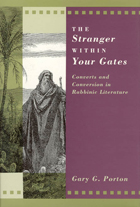 The Stranger within Your Gates: Converts and Conversion in Rabbinic Literature
Gary G. Porton
University of Chicago Press, 1994 If the People of Israel understood themselves to share a common ancestry as well as a common religion, how could a convert to their faith who did not share their ethnicity fit into the ancient Israelite community? While it is comparatively simple to declare religious beliefs, it is much more difficult to enter a group whose membership is defined in ethnic terms. In showing how the rabbis struggled continually with the dual nature of the Israelite community and the dilemma posed by converts, Gary G. Porton explains aspects of their debates which previous scholars have either ignored or minimized.
The Stranger within Your Gates analyzes virtually every reference to converts in the full corpus of rabbinic literature. The intellectual dilemma that converts posed for classical Judaism played itself out in discussions of marriage, religious practice, inheritance of property, and much else. Reviewing the rabbinic literature text by text, Porton exposes the rabbis' frequently ambivalent and ambiguous views.
The Stranger within Your Gates is the only examination of conversion in rabbinic literature to draw upon the full scope of contemporary anthropological and sociological studies of conversion. It is also unique in its focus on the opinions of the community into which the convert enters, rather than on the testimony of the convert. By approaching data with new methods, Porton heightens our understanding of conversion and the nature of the People of Israel in rabbinic literature.
Strangers: A Book of Poems
David Ferry
University of Chicago Press, 1983 "David Ferry must have had something up his sleeve when he called his book "Strangers," because his is a poetry of intimacy and familiarity. More than that, Mr. Ferry's short, sparse lyrics are as perfectly and simply composed as Japanese haiku—a rare accomplishment in poetry written in English."—Andy Brumer, New York Times Book Review
"Strangers is a remarkably good book for a reader sufficiently attentive to hear its quiet power, to let it work in its distinctive way."—Boston Globe
"The poems of David Ferry's Strangers are in fact one book, and it is a splendid one. There is the same austere and poignant voice throughout, asking the unanswerable things, speaking of all that is withheld from us, confronting the unknownness that dwells even in the familiar and dear. Painful and touching, the book offers a distinctive vision which is at the same time inescapably true."—Richard Wilbur
 Strangers and Kin: The American Way of Adoption
Barbara Melosh
Harvard University Press, 2002 Strangers and Kin is the history of adoption, a quintessentially American institution in its buoyant optimism, generous spirit, and confidence in social engineering. An adoptive mother herself, Barbara Melosh tells the story of how married couples without children sought to care for and nurture other people's children as their own. It says much about the American experience of family across the twentieth century and our shifting notions of kinship and assimilation. Above all, it speaks of real people striving to make families out of strangers.
In the early twentieth century, childless adults confronted orphanages reluctant to entrust their wards to the kindness of strangers. By the 1930s, however, the recently formed profession of social work claimed a new expertise--the science and art of child placement--and adoption became codified in law. It flourished in the United States, reflecting our ethnic diversity, pluralist ideals, and pragmatic approach to family. Then, in the 1960s, as the sexual revolution reshaped marriage, motherhood, and women's work, adoption became a less attractive option and the number of adoptive families precipitously declined. Taking this history into the early twenty-first century, Melosh offers unflinching insight to the contemporary debates that swirl around adoption: the challenges to adoption secrecy; the ethics and geopolitics of international adoption; and the conflicts over transracial adoption.
This gripping history is told through poignant stories of individuals, garnered from case records long inaccessible to others, and captures the profound losses and joys that make adoption a lifelong process.
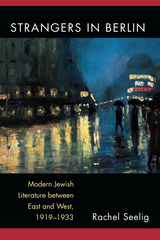 Strangers in Berlin: Modern Jewish Literature between East and West, 1919–1933
Rachel Seelig
University of Michigan Press, 2016 Berlin in the 1920s was a cosmopolitan hub where for a brief, vibrant moment German-Jewish writers crossed paths with Hebrew and Yiddish migrant writers. Working against the prevailing tendency to view German and East European Jewish cultures as separate fields of study, Strangers in Berlin is the first book to present Jewish literature in the Weimar Republic as the product of the dynamic encounter between East and West. Whether they were native to Germany or sojourners from abroad, Jewish writers responded to their exclusion from rising nationalist movements by cultivating their own images of homeland in verse, and they did so in three languages: German, Hebrew, and Yiddish.
Author Rachel Seelig portrays Berlin during the Weimar Republic as a “threshold” between exile and homeland in which national and artistic commitments were reexamined, reclaimed, and rebuilt. In the pulsating yet precarious capital of Germany’s first fledgling democracy, the collision of East and West engendered a broad spectrum of poetic styles and Jewish national identities.
 Strangers in High Places: The Story of the Great Smoky Mountains
Michael Frome
University of Tennessee Press, 1994 In this expanded edition of his classic Strangers in High Places, Michael Frome continues to capture the attention and admiration of nature lovers, environmentalists, and professionals as he reviews the last quarter-century in and around the Great Smoky Mountains National Park. Frome's superbly written account tells the story of the Great Smoky Mountains and their inhabitants—Eastern Cherokee, back-country settlers, lumbermen, moonshiners, bears and boars. Frome chronicles the power struggles, legislation, and land transactions surrounding the creation of the national park and discusses the continuing threats to the park's natural beauty.
Frome's recent conversations with residents, new and old, along with a complement of historic and contemporary photographs, confirm the views stated in the book's original 1966 edition.
The author brings his knowledge, experience, and insights to bear on "one of God's special places." He suggests alternatives to commercial overdevelopment and the destruction of the Great Smokies' flora and fauna, citing recent cases such as the Tellico Dam project and the continuing pollution of the Pigeon River. Always emphasizing our inevitable relationship with our surroundings, Frome relates the story of the Great Smoky Mountains with respect and affection for the region, its people, and their history.
Michael Frome ranks among the foremost American authors on travel and conservation. His interests are closely associated with national parks, national forests, and natural beauty in the United States and other countries. He has been a columnist and correspondent for major newspapers and magazines and a university lecturer. He is author of Conscience of a Conservationist: Selected Essays.
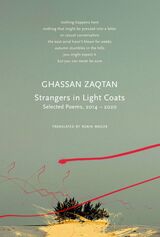 Strangers in Light Coats: Selected Poems, 2014–2020
Ghassan Zaqtan
Seagull Books, 2023 A highly anticipated edition of Zaqtan’s work from 2014 to 2020, all in English for the first time.
Ghassan Zaqtan is not only one of the most significant Palestinian poets at work today, but one of the most important poets writing in Arabic. Since the publication of his first collection in 1980, Zaqtan’s presence as a poet has evolved with the same branching and cumulative complexity as his poems—an invisible system of roots insistently pushing through the impacted soil of political and national narratives.
Strangers in Light Coats is the third collection of Zaqtan’s poetry to appear in English. It brings together poems written between 2014 and 2020 drawn from six volumes of poetry. Catching and holding the smallest particles of observation and experience in their gravity, the poems sprout and grow as though compelled, a trance of process in which fable, myth, and elegy take form only to fall apart and reconfigure, each line picked apart by the next and brought into the new body.
 Strangers in Our Midst: The Political Philosophy of Immigration
David Miller
Harvard University Press, 2016 How should Western democracies respond to the many millions of people who want to settle in their societies? Economists and human rights advocates tend to downplay the considerable cultural and demographic impact of immigration on host societies. Seeking to balance the rights of immigrants with the legitimate concerns of citizens, Strangers in Our Midst brings a bracing dose of realism to this debate. David Miller defends the right of democratic states to control their borders and decide upon the future size, shape, and cultural make-up of their populations.
“A cool dissection of some of the main moral issues surrounding immigration and worth reading for its introductory chapter alone. Moreover, unlike many progressive intellectuals, Miller gives due weight to the rights and preferences of existing citizens and does not believe an immigrant has an automatic right to enter a country…Full of balanced judgments and tragic dilemmas.”
—David Goodhart, Evening Standard
“A lean and judicious defense of national interest…In Miller’s view, controlling immigration is one way for a country to control its public expenditures, and such control is essential to democracy.”
—Kelefa Sanneh, New Yorker
 Strangers in Paradise: Impact And Management Of Nonindigenous Species In Florida
Edited by Daniel Simberloff, Don C. Schmitz, and Tom C. Brown; Foreword by Edward O. Wilson
Island Press, 1997 Invasive nonindigenous species -- plants and animals that have been introduced to an ecosystem from someplace else -- are wreaking havoc around the globe. Because they did not co-evolve with species already in the ecosystem, they can profoundly disturb species interactions and ecosystem function.The state of Florida has one of the most severe exotic species problems in the country; as much as a quarter of many taxa in Florida are nonnative, and millions of acres of land and water are dominated by nonindigenous species. Strangers in Paradise provides an in-depth examination of the Florida experience and of the ongoing efforts to eradicate or manage introduced species. Chapters consider: natural disturbance and the spread of nonindigenous species case studies of insects, freshwater invertebrates, fishes, amphibians and reptiles, birds, marine invertebrates and algae, and mammals methods of managing nonindigenous species including ecological restoration, eradication, "maintenance control," and biological control management on public lands the regulatory framework including the role of the federal government as well as state authorities and responsibilities Strangers in Paradise is the first comprehensive volume to address a large, diverse region and the full range of nonindigenous species, the problems they cause, and the methods and impediments to dealing with them. Throughout, contributors emphasize solutions and relate the situation in Florida to problems faced by other states, making the book an important guide for anyone involved with control and management of invasive species.
 Strangers in the Land: Blacks, Jews, Post-Holocaust America
Eric J. Sundquist
Harvard University Press, 2005 In a culture deeply divided along ethnic lines, the idea that the relationship between blacks and Jews was once thought special—indeed, critical to the cause of civil rights—might seem strange. Yet the importance of blacks for Jews and Jews for blacks in conceiving of themselves as Americans, when both remained outsiders to the privileges of full citizenship, is a matter of voluminous but perplexing record. It is this record, written across the annals of American history and literature, culture and society, that Eric Sundquist investigates. A monumental work of literary criticism and cultural history, Strangers in the Land draws upon politics, sociology, law, religion, and popular culture to illuminate a vital, highly conflicted interethnic partnership over the course of a century.
Sundquist explores how reactions to several interlocking issues—the biblical Exodus, the Holocaust, Zionism, and the state of Israel—became critical to black–Jewish relations. He charts volatile debates over social justice and liberalism, anti-Semitism and racism, through extended analyses of fiction by Bernard Malamud, Paule Marshall, Harper Lee, and William Melvin Kelley, as well as the juxtaposition of authors such as Saul Bellow and John A. Williams, Lori Segal and Anna Deavere Smith, Julius Lester and Philip Roth. Engaging a wide range of thinkers and writers on race, civil rights, the Holocaust, slavery, and related topics, and cutting across disciplines to set works of literature in historical context, Strangers in the Land offers an encyclopedic account of questions central to modern American culture.
Strangers in the Land: Patterns of American Nativism, 1860-1925
Higham, John
Rutgers University Press, 1988 Nativism has been hard for historians to define. The word is distinctively American, a product of a specific chain of events in eastern American cities in the late 1830's and early 1840's. Yet it has a meaning so broad and indefinite that sometimes it seems to refer to a perennial human experience. Does nativism consist only of a particular complex of attitudes dominant in the anti-foreign crusade of the mid-nineteenth century? Or does it extend to every occasion when native inhabitants of a country turn their faces or raise their hands against strangers in their midst? What is nativism?
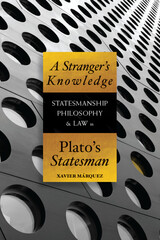 A Stranger's Knowledge: Statesmanship, Philosophy, and Law in Plato's Statesman
Xavier Márquez
Parmenides Publishing, 2012 The Statesman is a difficult and puzzling Platonic dialogue. In A Stranger's Knowledge Marquez argues that Plato abandons here the classic idea, prominent in the Republic, that the philosopher, qua philosopher, is qualified to rule. Instead, the dialogue presents the statesman as different from the philosopher, the possessor of a specialist expertise that cannot be reduced to philosophy. The expertise is of how to make a city resilient against internal and external conflict in light of the imperfect sociality of human beings and the poverty of their reason. This expertise, however, cannot be produced on demand: one cannot train statesmen like one might train carpenters. Worse, it cannot be made acceptable to the citizens, or operate in ways that are not deeply destructive to the city’s stability. Even as the political community requires his knowledge for its preservation, the genuine statesman must remain a stranger to the city. Marquez shows how this impasse is the key to understanding the ambiguous reevaluation of the rule of law that is the most striking feature of the political philosophy of the Statesman. The law appears here as a mere approximation of the expertise of the inevitably absent statesman, dim images and static snapshots of the clear and dynamic expertise required to steer the ship of state across the storms of the political world. Yet such laws, even when they are not created by genuine statesmen, can often provide the city with a limited form of cognitive capital that enables it to preserve itself in the long run, so long as citizens, and especially leaders, retain a “philosophical” attitude towards them. It is only when rulers know that they do not know better than the laws what is just or good (and yet want to know what is just and good) that the city can be preserved. The dialogue is thus, in a sense, the vindication of the philosopher-king in the absence of genuine political knowledge.
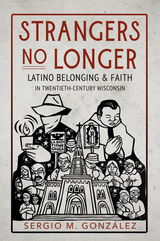 Strangers No Longer: Latino Belonging and Faith in Twentieth-Century Wisconsin
Sergio M. González
University of Illinois Press, 2024 Hospitality practices grounded in religious belief have long exercised a profound influence on Wisconsin’s Latino communities. Sergio M. González examines the power relations at work behind the types of hospitality--welcoming and otherwise--practiced on newcomers in both Milwaukee and rural areas of the Badger State. González’s analysis addresses central issues like the foundational role played by religion and sacred spaces in shaping experiences and facilitating collaboration among disparate Latino groups and across ethnic lines; the connections between sacred spaces and the moral justification for social justice movements; and the ways sacred spaces evolved into places for mitigating prejudice and social alienation, providing sanctuary from nativism and repression, and fostering local and transnational community building. Perceptive and original, Strangers No Longer reframes the history of Latinos in Wisconsin by revealing religion’s central role in the settlement experience of immigrants, migrants, and refugees.
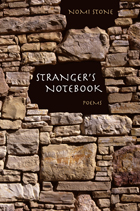 Stranger's Notebook: Poems
Nomi Stone
Northwestern University Press, 2008 Stone's moving debut collection of verse is inspired by her encounter with perhaps the last cohesive, traditional Jewish community in the Middle East and North Africa. According to their story of origin, a handful of exiles arrived on the island of Djerba, Tunisia, in 586 B.C., carrying a single stone from the destroyed Temple in Jerusalem. Drawing from this cosmology, the poems follow a stranger who arrives into an ancient community that is both at home and deeply estranged on the island. Its people occupy the uneasy space of all insular communities, deciding when to let the world in and when to shut it out. The poems are about the daily lives and deeper cosmos of the Jews of Djerba as well as the Muslims next door. In her exploration, Stone sees vivid recurring images of keys, stones, homes, the laughter of girls, the eyes of men, the color blue, and the force of blood or bombs. With this journey of faith, doubt, longing, and home, Stone has brought readers a rare look into a story that resonates powerfully with questions of cultural preservation and coexistence.
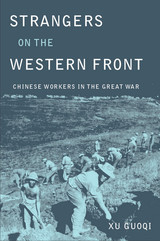 Strangers on the Western Front: Chinese Workers in the Great War
Xu Guoqi
Harvard University Press, 2011 During World War I, Britain and France imported workers from their colonies to labor behind the front lines. The single largest group of support labor came not from imperial colonies, however, but from China. Xu Guoqi tells the remarkable story of the 140,000 Chinese men recruited for the Allied war effort.
These laborers, mostly illiterate peasants from north China, came voluntarily and worked in Europe longer than any other group. Xu explores China’s reasons for sending its citizens to help the British and French (and, later, the Americans), the backgrounds of the workers, their difficult transit to Europe—across the Pacific, through Canada, and over the Atlantic—and their experiences with the Allied armies. It was the first encounter with Westerners for most of these Chinese peasants, and Xu also considers the story from their perspective: how they understood this distant war, the racism and suspicion they faced, and their attempts to hold on to their culture so far from home.
In recovering this fascinating lost story, Xu highlights the Chinese contribution to World War I and illuminates the essential role these unsung laborers played in modern China’s search for a new national identity on the global stage.
 Strangers Religion
Lannstrom
University of Notre Dame Press, 2004 Volume 25 in the Boston University Studies in Philosophy and Religion series brings together distinguished scholars to reflect on the fascination and fear that humans inevitably experience when confronted with diverse religious beliefs and practices. Contributors argue that fear of the "stranger" and his or her religion can only be overcome through education, and they suggest ways in which we can better understand one another and the world in which we live.
Part one of the collection, entitled "Talking with Strangers," explores avenues for finding common ground between "religious strangers." In this section Stephen Prothero examines the American reception of Hinduism, John de Gruchy analyzes the relationship between Christianity, Judaism, and Islam in South Africa, and Bhikhu Parekh imagines a dialogue between Osama bin Laden and Mahatma Gandhi. The second set of essays addresses the theme of understanding difference, with a particular focus on methodological approaches within philosophy of religion. Wendy Doniger argues for an approach to cross-cultural studies that recognizes both the similarities and the differences between us and the other, and that encourages us to think and feel with the alien tradition. Eliot Deutsch advocates a pluralistic approach to religion, which encourages cross-religious dialogue. Robert Neville's essay challenges the tendency to view other religions through a lens shaped by one's own faith tradition. The final set of essays discusses religious conversions and converts. It includes a piece by John Carman on conversion from Hinduism to Christianity, an essay by Werner Gundersheimer on crossing the border between Christianity and Judaism, and Pravrajika Vrajaprana's description of her experience as a Caucasian American who became a Hindu nun.
Collectively these essays reveal the importance of learning about, listening to, and empathizing with the "stranger's religion." This book will appeal to anyone who is interested in cross-religious and cultural dialogue.
ANNA LANNSTROM is assistant professor of philosophy at Stonehill College.
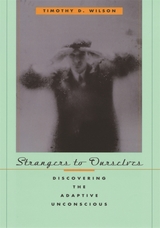 Strangers to Ourselves: Discovering the Adaptive Unconscious
Timothy D. Wilson
Harvard University Press, 2004 "Know thyself," a precept as old as Socrates, is still good advice. But is introspection the best path to self-knowledge? What are we trying to discover, anyway? In an eye-opening tour of the unconscious, as contemporary psychological science has redefined it, Timothy D. Wilson introduces us to a hidden mental world of judgments, feelings, and motives that introspection may never show us.
This is not your psychoanalyst's unconscious. The adaptive unconscious that empirical psychology has revealed, and that Wilson describes, is much more than a repository of primitive drives and conflict-ridden memories. It is a set of pervasive, sophisticated mental processes that size up our worlds, set goals, and initiate action, all while we are consciously thinking about something else.
If we don't know ourselves—our potentials, feelings, or motives—it is most often, Wilson tells us, because we have developed a plausible story about ourselves that is out of touch with our adaptive unconscious. Citing evidence that too much introspection can actually do damage, Wilson makes the case for better ways of discovering our unconscious selves. If you want to know who you are or what you feel or what you're like, Wilson advises, pay attention to what you actually do and what other people think about you. Showing us an unconscious more powerful than Freud's, and even more pervasive in our daily life, Strangers to Ourselves marks a revolution in how we know ourselves.
Strangers to the City: Urban Man in Jos, Nigeria
Leonard Plotnicov
University of Pittsburgh Press, 1967 Leonard Plotnicov offers a fascinating study of the urbanization of tribal Africans. His study is based on extensive interviews with residents of Jos, Nigeria over a two-year period. The participants come from a variety of social and cultural backgrounds, and Plotnicov portrays the difficulties associated with assimilation into a Westernized society.
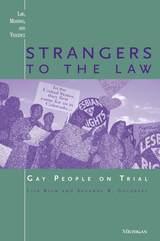 Strangers to the Law: Gay People on Trial
Lisa Keen and Suzanne B. Goldberg
University of Michigan Press, 2000 In 1992, the voters of Colorado passed a ballot initiative amending the state constitution to prevent the state or any local government from adopting any law or policy that protected a person with a homosexual, lesbian, or bisexual orientation from discrimination. This amendment was immediately challenged in the courts as a denial of equal protection of the laws under the United States Constitution. This litigation ultimately led to a landmark decision by the United States Supreme Court invalidating the Colorado ballot initiative. Suzanne Goldberg, an attorney involved in the case from the beginning on behalf of the Lambda Legal Defense and Education Fund, and Lisa Keen, a journalist who covered the initiative campaign and litigation, tell the story of this case, providing an inside view of this complex and important litigation.
Starting with the background of the initiative, the authors tell us about the debates over strategy, the court proceedings, and the impact of each stage of the litigation on the parties involved. The authors explore the meaning of legal protection for gay people and the arguments for and against the Colorado initiative.
This book is essential reading for anyone interested in the development of civil rights protections for gay people and the evolution of what it means to be gay in contemporary American society and politics. In addition, it is a rich story well told, and will be of interest to the general reader and scholars working on issues of civil rights, majority-minority relations, and the meaning of equal rights in a democratic society.
Suzanne Goldberg is an attorney with the Lambda Legal Defense and Education Fund. Lisa Keen is Senior Editor at the Washington Blade newspaper.
 Strangers to the Law: Gay People on Trial
Lisa Keen and Suzanne B. Goldberg
University of Michigan Press, 1998 In 1992, the voters of Colorado passed a ballot initiative amending the state constitution to prevent the state or any local government from adopting any law or policy that protected a person with a homosexual, lesbian, or bisexual orientation from discrimination. This amendment was immediately challenged in the courts as a denial of equal protection of the laws under the United States Constitution. This litigation ultimately led to a landmark decision by the United States Supreme Court invalidating the Colorado ballot initiative. Suzanne Goldberg, an attorney involved in the case from the beginning on behalf of the Lambda Legal Defense and Education Fund, and Lisa Keen, a journalist who covered the initiative campaign and litigation, tell the story of this case, providing an inside view of this complex and important litigation.
Starting with the background of the initiative, the authors tell us about the debates over strategy, the court proceedings, and the impact of each stage of the litigation on the parties involved. The authors explore the meaning of legal protection for gay people and the arguments for and against the Colorado initiative.
This book is essential reading for anyone interested in the development of civil rights protections for gay people and the evolution of what it means to be gay in contemporary American society and politics. In addition, it is a rich story well told, and will be of interest to the general reader and scholars working on issues of civil rights, majority-minority relations, and the meaning of equal rights in a democratic society.
Suzanne Goldberg is an attorney with the Lambda Legal Defense and Education Fund. Lisa Keen is Senior Editor at the Washington Blade newspaper.
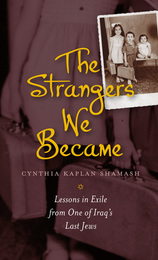 The Strangers We Became: Lessons in Exile from One of Iraq's Last Jews
Cynthia Kaplan Shamash
Brandeis University Press, 2015 This riveting and utterly unique memoir chronicles the coming of age of Cynthia Shamash, an Iraqi Jew born in Baghdad in 1963. When she was eight, her family tried to escape Iraq over the Iranian border, but they were captured and jailed for five weeks. Upon release, they were returned to their home in Baghdad, where most of their belongings had been confiscated and the door of their home sealed with wax. They moved in with friends and applied for passports to spend a ten-day vacation in Istanbul, although they never intended to return. From Turkey, the family fled to Tel Aviv and then to Amsterdam, where Cynthia’s father soon died of a heart attack. At the age of twelve, Sanuti (as her mother called her) was sent to London for schooling, where she lived in an Orthodox Jewish enclave with the chief rabbi and his family. At the end of the school year, she returned to Holland to navigate her teen years in a culture that was much more sexually liberal than the one she had been born into, or indeed the one she was experiencing among Orthodox Jews in London. Shortly after finishing her schooling as a dentist, Cynthia moved to the United States in an attempt to start over. This vivid, beautiful, and very funny memoir will appeal to readers intrigued by spirituality, tolerance, the personal ramifications of statelessness and exile, the clashes of cultures, and the future of Iraq and its Jews.
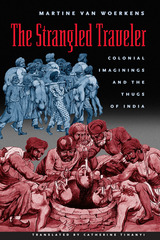 The Strangled Traveler: Colonial Imaginings and the Thugs of India
Martine van Woerkens
University of Chicago Press, 2002 British colonists in 1830s India lived in terror of the Thugs. Reputed to be brutal criminals, the Thugs supposedly strangled, beheaded, and robbed thousands of travelers in the goddess Kali's name. The British responded with equally brutal repression of the Thugs and developed a compulsive fascination with tales of their monstrous deeds.
Did the Thugs really exist, or did the British invent them as an excuse to seize tighter control of India? Drawing on historical and anthropological accounts, Indian tales and sacred texts, and detailed analyses of the secret Thug language, Martine van Woerkens reveals for the first time the real story of the Thugs. Many different groups of Thugs actually did exist over the centuries, but the monsters the British made of them had much more to do with colonial imaginings of India than with the real Thugs. Tracing these imaginings down to the present, van Woerkens reveals the ongoing roles of the Thugs in fiction and film from Frankenstein to Indiana Jones and the Temple of Doom.
Stránská skála: Origins of the Upper Paleolithic in the Brno Basin, Moravia, Czech Republic
Jirí Svoboda
Harvard University Press, 2003 In this volume, an international and interdisciplinary team of scholars—Czech and American archaeologists, paleoanthropologists, geologists, and biologists—report on the results of the investigations from 1980 through the 1990s at Stránská skála, a complex of open-air loess sites on the outskirts of the Brno Basin in the Czech Republic.
The volume presents in-depth studies of the geology, paleopedology, frost processes, vegetation, fauna, and archaeological features of Stránská skála that break new ground in our understanding of early modern humans in central Europe.
Strapdown Inertial Navigation Technology
David Titterton
The Institution of Engineering and Technology, 2004 Inertial navigation is widely used for the guidance of aircraft, missiles, ships and land vehicles, as well as in a number of novel applications such as surveying underground pipelines in drilling operations. This book sets out to provide a clear and concise description of the physical principles of inertial navigation, the associated growth of errors and their compensation. There is also detailed treatment of recent developments in inertial sensor technology and a description of techniques for implementing and evaluating such systems. This new edition includes a number of refinements covering sensor technology, geodesy and error modelling, plus new chapters on MEMS technology and inertial systems applications.
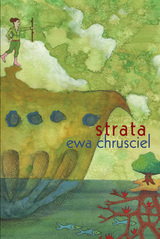 Strata
Ewa Chrusciel
Omnidawn, 2018 In Ewa Chrusciel’s first book in English, Strata, an exile’s memories are . . . at once a rapture of possession (of being possessed) and defeatingly untotalizable. Strata is . . . a tumultuous revelation of how much of the past there still is, right here in the near flight of letters, and of the burn of being in time at all, the difficulty of catching up with oneself in a universe that is never one, but always scattered. Strata is a book of concuspiscences, of combings for pleasures, yes, but even more for the Sacred Book it wants to be. In its every line, it shows that the rhapsodic is the right approach to the truth about the world. —from the foreword by Calvin Bedient Praise for Ewa Chrusciel’s poetry “With a wonderful insistence, each phrase in Ewa Chrusciel’s prose poetry can be experienced as a moment of transition, of what Emerson would have called a darting aim. “Whenever we visited, my grandfather would put his chair on the road and wait,” Chrusciel writes. “Kraina na Bosaka. We were the apparition of deer. Pray, why chase each stalk of wounded light?”’ —Tony Brinkley, Boston Review
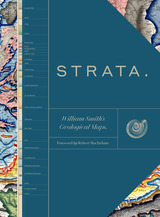 Strata: William Smith’s Geological Maps
Edited by the Oxford University Museum of Natural History
University of Chicago Press, 2020 Lavishly illustrated with full-color geological maps, tables of strata, geological cross-sections, photographs, and fossil illustrations from the archives of the Oxford University Museum of Natural History, the Geological Society, the London Natural History Museum, and others, Strata provides the first complete presentation of the revolutionary work of nineteenth-century geologist William Smith, the so-called father of English geology. It illustrates the story of his career, from apprentice to surveyor for hire and fossil collector, from his 1799 geological map of Bath and table of strata to his groundbreaking 1815 geological strata map, and from his imprisonment for debt to his detailed stratigraphical county maps.
This sumptuous volume begins with an introduction by Douglas Palmer that places Smith’s work in the context of earlier, concurrent, and subsequent ideas regarding the structure and natural processes of the earth, geographical mapping, and biostratigraphical theories. The book is then organized into four parts, each beginning with four sheets from Smith’s hand-colored, 1815 strata map, accompanied by related geological cross-sections and county maps, and followed by fossil illustrations by Smith contemporary James Sowerby, all organized by strata. Essays between each section explore the aims of Smith’s work and its application in the fields of mining, agriculture, cartography and hydrology. Strata concludes with reflections on Smith’s later years as an itinerant geologist and surveyor, plagiarism by a rival, receipt of the first Wollaston Medal in recognition of his achievements, and the influence of his geological mapping and biostratigraphical theories on the sciences—all of which culminated in the establishment of the modern geological timescale.
Featuring a foreword by Robert Macfarlane, Strata is a glorious testament to the lasting geological and illustrative genius of William Smith, a collection as colossal and awe-inspiring as the layers of the Earth themselves.
 Stratagems. Aqueducts of Rome
Frontinus
Harvard University Press, 1993 Ancient expertise on water and warfare.
Frontinus, Sextus Iulius, ca. AD 35–103, was a capable Roman civil officer and military commander. Praetor of the city in 70 and consul in 73 or 74, 98 and 100, he was, about the year 76, sent to Britain as governor. He quelled the Silures of Wales, and began to build a road through their territory; his place was taken by Agricola in 78. In 97 he was given the highly esteemed office of Manager of Aqueducts at Rome. He is known to have been an augur, being succeeded by his friend Pliny the Younger.
The two sides of Frontinus’ public career are reflected in his two surviving works. Stratagems, written after 84, gives examples of military stratagems from Greek and Roman history, for the instruction of Roman officers, in three books; the fourth book is concerned largely with military discipline. The Aqueducts of Rome, written in 97–98, gives some historical details and a description of the aqueducts for the water supply of the city, with laws relating to them. Frontinus aimed at being useful and writes in a rather popular style which is both simple and clear.
 Strategic Advantage: Challengers, Competitors, and Threats to America's Future
Bruce Berkowitz
Georgetown University Press, 2008 By almost any measure, the United States is the most powerful nation in the history of civilization. Our resources are immense. But they are not limitless. Today national security requires agility to stay a step ahead of threats that can rapidly appear and change, and endurance to deal with challengers that are unlikely to disappear anytime soon. The central question for U.S. leaders today is how can we retain our strategic advantage and continue to set the agenda for world affairs? All our other goals—promoting freedom, prosperity, human rights, and ensuring the security of Americans—depend on getting the fundamentals right. Strategic Advantage: Challengers, Competitors, and Threats to America's Future is a concise and provocative analysis of national security policy today—and tomorrow. Drawing on history and contemporary examples, Bruce Berkowitz deftly identifies those countries, groups, and movements that pose the greatest challenges to the United States and suggests ways to deal with them. He lucidly analyzes the components of national power—economic clout, military capability, and cultural influence—that America must sustain if it hopes to maintain its position in the world in the decades ahead. Strategic Advantage outlines how the United States can stay ahead of potential threats by drawing on the distinctively American culture that rewards entrepreneurship and supports a strong military; by promoting economic growth at home and competing for talent and capital from abroad; by fixing the national security command structure; and by adopting a national strategy that balances goals, costs, and risks. With pacing, foresight, and planning, Berkowitz says, the United States can sustain its global leadership for the long haul.
Strategic Advertising Mechanisms: From Copy Strategy to Iconic Brands
Jorge David Fernández Gómez
Intellect Books, 2021 An academic review of the major marketing techniques that transformed advertising communication forever.
This book takes an in-depth look at the most important and transcendent strategic advertising mechanisms to emerge in the twentieth century. Charting trends in classic advertising methodologies, the author explores key concepts from Rosser Reeves’s unique selling proposition and Procter & Gamble’s copy strategy to influential modern approaches including Kevin Roberts’s Lovemarks and Douglas Holt’s iconic brand framework. It also considers European mechanisms, including Jacques Séguéla’s star strategy and Henri Joannis’ psychological axis theory. Practitioners, researchers, scholars, and students will find much to gain from this rich exploration of the strategies that shaped modern advertising and the figures behind them.
Strategic Affection?: Gift Exchange in Seventeenth-Century Holland
Irma Thoen
Amsterdam University Press, 2007 Since the early days of humanity, gifts as varied as valued objects, hospitality, and works of art have been an essential means of establishing and maintaining social ties. Strategic Affection? studies the exchange of gifts in order to explore the nature of seventeenth-century Dutch social relations. Looking at such widely divergent figures as schoolmasters, artisans, poets, and nobles, Irma Thoen compares seventeenth-century Dutch gifts with contemporary gift exchanges to show that both strategy and affection are necessary elements of any social relations—and that what changes most is not the system but the discourse of exchange.
 Strategic Alliances: Coalition Building and Social Movements
Nella Van Dyke
University of Minnesota Press, 2010 Social researchers in the past have paid surprisingly little theoretical or empirical attention to movement alliances. Strategic Alliances provides a pioneering set of in-depth analyses of the circumstances leading to these organizational alliances. Contributors investigate coalition dynamics among social movements, including antiwar, environmental, and labor movements, as well as ethnic organizations and women's groups. While many of the essays examine coalition formation in the United States, others consider coalitions in Britain, the former East Germany, East Asia, and Latin America.
Contributors: Paul Almeida, Texas A&M U; Elizabeth Borland, College of New Jersey; Daniel B. Cornfield, Vanderbilt U; Catherine Corrigall-Brown, U of British Columbia; Mario Diani, U of Trento; Katja M. Guenther, UC Riverside; Larry Isaac, Vanderbilt U; Isobel Lindsay, Biggar, Scotland; David S. Meyer, UC Irvine; Brian Obach, SUNY New Paltz; Dina G. Okamoto, UC Davis; Christine Petit, UC Riverside; Derrick Purdue, U of the West of England; Ellen Reese, UC Riverside; Benita Roth, SUNY Binghamton; Suzanne Staggenborg, U of Pittsburgh; Dawn Wiest, U of Memphis.
 Strategic Challenges in the Baltic Sea Region: Russia, Deterrence, and Reassurance
Ann-Sofie Dahl, Editor. Foreword by Anders Fogh Rasmussen
Georgetown University Press How should the countries in the Baltic Sea region and their allies meet the strategic challenges posed by an openly aggressive and expansionist Russia? NATO and the nonaligned states in the region are now more concerned about an external threat than they have been since the end of the Cold War. Russia has been probing air space, maritime boundaries, and even land borders from the Baltic republics to Sweden. Russia's undermining of Ukraine and annexation of Crimea worries former Soviet republics with Russian minority populations, nonaligned Sweden and Finland are enhancing their cooperation with NATO, and the Trump presidency has created some doubt about America's willingness to follow through on NATO's collective defense commitment. Ann-Sofie Dahl brings together an international group of experts to examine Baltic security issues on a state-by-state basis and to contemplate what is needed to deter Russia in the region. The contributors analyze ways to strengthen regional cooperation, and to ensure that security in the region stays at the top of the agenda at a time of many competing strategic perspectives in the transatlantic community. This book will be of great interest to foreign policy and defense practitioners in the US and Europe as well as scholars and students of international relations.
Strategic Choices for a Turbulent World: In Pursuit of Security and Opportunity
Andrew R. Hoehn
RAND Corporation, 2017 This report is the last of a six-volume series in which RAND explores the elements of a national strategy for the conduct of U.S. foreign policy. It analyzes U.S. strengths and weaknesses, and suggests adaptations for this new era of turbulence and uncertainty. The report offers three alternative strategic concepts and evaluates their underlying assumptions, costs, risks, and constraints.
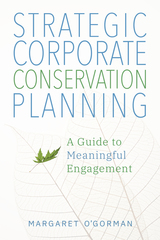 Strategic Corporate Conservation Planning: A Guide to Meaningful Engagement
Margaret O'Gorman
Island Press, 2019 Industries that drive economic growth and support our comfortable modern lifestyles have exploited natural resources to do so. But now there’s growing understanding that business can benefit from a better relationship with the environment. Leading corporations have begun to leverage nature-based remediation, restoration, and enhanced lands management to meet a variety of business needs, such as increasing employee engagement and establishing key performance indicators for reporting and disclosures. Strategic Corporate Conservation Planning offers fresh insights for corporations and environmental groups looking to create mutually beneficial partnerships that use conservation action to address business challenges and realize meaningful environmental outcomes.
Recognizing the long history of mistrust between corporate action and environmental effort, Strategic Corporate Conservation Planning begins by explaining how to identify priorities that will yield a beneficial relationship between a company and nonprofit. Next, O’Gorman offers steps for creating ecologically-focused projects that address key business needs. Chapters highlight existing projects with different scales of engagement, emphasizing that headline-generating, multimillion dollar commitments are not necessarily the most effective approach. Myriad case studies featuring programs from habitat restoration to environmental educational initiatives at companies like Bridgestone USA, General Motors, and CRH Americas are included to help spark new ideas.
With limited government funding available for conservation and increasing competition for grant support, corporate efforts can fill a growing need for environmental stewardship while also providing business benefits. Strategic Corporate Conservation Planning presents a comprehensive approach for effective engagement between the public and private sector, encouraging pragmatic partnerships that benefit us all.
Strategic Disagreement: Stalemate in American Politics
John Gilmour
University of Pittsburgh Press, 1995
Politics may be the art of compromise, but accepting a compromise can be hazardous to a politician’s health. Politicians worry about betraying faithful supporters, about losing the upper hand on an issue before the next election, that accepting half a loaf today can make it harder to get the whole loaf tomorrow. In his original interpretation of competition between parties and between Congress and the president, Gilmour explains the strategies available to politicians who prefer to disagree and uncovers the lost opportunities to pass important legislation that result from this disagreement.
Strategic Disagreement, theoretically solid and rich in evidence, will enlighten Washington observers frustrated by the politics of gridlock and will engage students interested in organizational theory, political parties, and divided government.
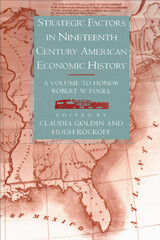 Strategic Factors in Nineteenth Century American Economic History: A Volume to Honor Robert W. Fogel
Edited by Claudia Goldin and Hugh Rockoff
University of Chicago Press, 1992 Offering new research on strategic factors in the development of the nineteenth century American economy—labor, capital, and political structure—the contributors to this volume employ a methodology innovated by Robert W. Fogel, one of the leading pioneers of the "new economic history." Fogel's work is distinguished by the application of economic theory and large-scale quantitative evidence to long-standing historical questions.
These sixteen essays reveal, by example, the continuing vitality of Fogel's approach. The authors use an astonishing variety of data, including genealogies, the U.S. federal population census manuscripts, manumission and probate records, firm accounts, farmers' account books, and slave narratives, to address collectively market integration and its impact on the lives of Americans. The evolution of markets in agricultural and manufacturing labor is considered first; that concerning capital and credit follows. The demography of free and slave populations is the subject of the third section, and the final group of papers examines the extra-market institutions of governments and unions.
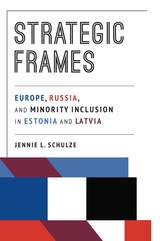 Strategic Frames: Europe, Russia, and Minority Inclusion in Estonia and Latvia
Jennie L. Schulze
University of Pittsburgh Press, 2017 Joseph Rothschild Book Prize Honorable Mention
Strategic Frames analyzes minority policies in Estonia and Latvia following their independence from the Soviet Union. It weighs the powerful influence of both Europe and Russia on their policy choices, and how this intersected with the costs and benefits of policy changes for the politicians in each state.
Prior to EU accession, policymakers were slow to adopt minority-friendly policies for ethnic Russians despite mandates from the European Union. These initiatives faced majority opposition, and politicians sought to maintain the status quo and their positions. As Jennie L. Schulze reveals, despite the credit given to the democratizing influence of European institutions, they have rarely produced significant policy changes alone, and then only when domestic constraints were low. Whenever domestic opposition was high, Russian frames were crucial for the passage of reforms. In these cases, Russia’s activism on behalf of Russian speakers reinforced European frames, providing powerful justifications for reform.
Schulze’s attention to both the strategic framing and counter framing of external actors explains the controversies, delays, and suboptimal outcomes surrounding the passage of “conditional” amendments in both cases, as well as the local political climate postaccession.
Strategic Frames offers a significant reference on recent developments in two former Soviet states and the rapidly evolving spheres of political influence in the postindependence era that will serve students, scholars, and policymakers alike.
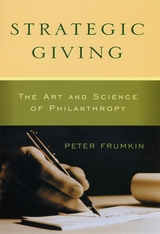 Strategic Giving: The Art and Science of Philanthropy
Peter Frumkin
University of Chicago Press, 2006 The philanthropic landscape is changing dramatically as a new generation of wealthy donors seeks to leave its mark on the public sphere. Peter Frumkin reveals in Strategic Giving why these donors could benefit from having a comprehensive plan to guide their giving. And with this thoughtful and timely book, he provides the much-needed framework to understand and develop this kind of philanthropic strategy.
After listening for years to scores of individual and institutional funders discuss the challenges of giving wisely, Frumkin argues here that contemporary philanthropy requires a thorough rethinking of its underlying logic. Philanthropy should be seen, he contends, as both a powerful way to meet public needs and a meaningful way to express private beliefs and commitments. He demonstrates that finding a way to simultaneously fulfill both of these functions is crucial to the survival of philanthropy and its potential to support pluralism in society. And he goes on to identify the five essential elements donors must consider when developing a philanthropic strategy—the vehicle through which giving will flow, the way impact will be achieved, the level of engagement and profile sought, the time frame for giving, and the underlying purpose of the gift. Frumkin’s point is that donors must understand strategic giving as the integration of these five critical dimensions to giving.
Essential reading for donors, researchers, and anyone involved with the world of philanthropy, Strategic Giving provides a new basis for understanding philanthropic effectiveness and a promising new way for philanthropy to achieve the legitimacy that has at times eluded it.
 Strategic Green Infrastructure Planning: A Multi-Scale Approach
Karen Firehock
Island Press, 2015 From New York City's urban forest and farmland in Virginia to the vast Sonoran Desert of Arizona and riverside parks in Vancouver, Washington, green infrastructure is becoming a priority for cities, counties, and states across America. Recognition of the need to manage our natural assets—trees, soils, water, and habitats—as part of our green infrastructure is vital to creating livable places and healthful landscapes. But the land management decisions about how to create plans, where to invest money, and how to get the most from these investments are complex, influenced by differing landscapes, goals, and stakeholders.
Strategic Green Infrastructure Planning addresses the nuts and bolts of planning and preserving natural assets at a variety of scales—from dense urban environments to scenic rural landscapes. A practical guide to creating effective and well-crafted plans and then implementing them, the book presents a six-step process developed and field-tested by the Green Infrastructure Center in Charlottesville, Virginia. Well-organized chapters explain how each step, from setting goals to implementing opportunities, can be applied to a variety of scenarios, customizable to the reader's target geographical location. Chapters draw on a diverse group of case studies, from the arid open spaces of the Sonoran Desert to the streets of Jersey City. Abundant full color maps, photographs, and illustrations complement the text.
For planners, elected officials, developers, conservationists, and others interested in the creation and maintenance of open space lands and urban green infrastructure projects or promoting a healthy economy, this book offers a comprehensive yet flexible approach to conceiving, refining, and implementing successful projects.
Strategic Newspaper Management
Conrad Fink
Southern Illinois University Press, 1988 The time is right for bright, aggressive newspaper managers to influence and prosper, but bleak indeed for those newspapers whose managers lack the requisite knowledge. Using case studies and examples from the business, Fink shows why some newspapers change with the times and surge ahead and why some continue to publish to an eroding market base and fail. The difference between success and failure, he concludes, is in "long-range planning and in daily operating methodology—in, simply, the professionalism of management at all levels."
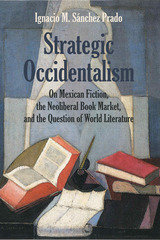 Strategic Occidentalism: On Mexican Fiction, the Neoliberal Book Market, and the Question of World Literature
Ignacio M. Sánchez Prado
Northwestern University Press, 2018 Strategic Occidentalism examines the transformation, in both aesthetics and infrastructure, of Mexican fiction since the late 1970s. During this time a framework has emerged characterized by the corporatization of publishing, a frictional relationship between Mexican literature and global book markets, and the desire of Mexican writers to break from dominant models of national culture.
In the course of this analysis, Ignacio M. Sánchez Prado engages with theories of world literature, proposing that “world literature” is a construction produced at various levels, including the national, that must be studied from its material conditions of production in specific sites. In particular, he argues that Mexican writers have engaged in a “strategic Occidentalism” in which their idiosyncratic connections with world literature have responded to dynamics different from those identified by world-systems or diffusionist theorists.
Strategic Occidentalism identifies three scenes in which a cosmopolitan aesthetics in Mexican world literature has been produced: Sergio Pitol’s translation of Eastern European and marginal British modernist literature; the emergence of the Crack group as a polemic against the legacies of magical realism; and the challenges of writers like Carmen Boullosa, Cristina Rivera Garza, and Ana García Bergua to the roles traditionally assigned to Latin American writers in world literature.
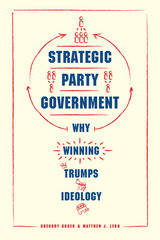 Strategic Party Government: Why Winning Trumps Ideology
Gregory Koger and Matthew J. Lebo
University of Chicago Press, 2017 Why is Congress mired in partisan polarization? The conventional answer is that members of Congress and their constituencies fundamentally disagree with one other along ideological lines. But Gregory Koger and Matthew J. Lebo uncover a more compelling reason that today’s political leaders devote so much time to conveying their party’s positions, even at the expense of basic government functions: Both parties want to win elections.
In Strategic Party Government, Koger and Lebo argue that Congress is now primarily a forum for partisan competition. In order to avoid losing, legislators unite behind strong party leaders, even when they do not fully agree with the policies their party is advocating. They do so in the belief that party leaders and voters will reward them for winning—or at least trying to win—these legislative contests. And as the parties present increasingly united fronts, partisan competition intensifies and pressure continues to mount for a strong party-building strategy—despite considerable disagreement within the parties.
By bringing this powerful but underappreciated force in American politics to the forefront, Koger and Lebo provide a new interpretation of the problems facing Congress that is certain to reset the agenda for legislative studies.
The Strategic Perspective and Long-Term Socioeconomic Strategies for Israel: Key Methods with an Application to Aging
Steven W. Popper
RAND Corporation, 2015 RAND researchers supported a high-level Israeli government team tasked with improving long-term socioeconomic strategy for the state. This report highlights selected inputs made to the government team to summarize the essential mechanics and roles for bringing a strategic perspective to policy consideration. To show how one can use a strategic perspective in an analysis of policy choices, the report uses the example of an aging population.
Strategic Planning for Public Libraries
Joy L. Fuller
American Library Association, 2021 Strategic Planning for Public Libraries is a complete planning toolkit. This book provides a framework that any library, whether it serves urban, suburban, or rural communities, can use as a basis for its strategic planning. Supported by research conducted across more than 200 public library professionals and in-depth interviews with more than twenty library directors and leaders throughout the country, this book addresses some of the key areas of strategic planning that librarians care about most: - Engaging the community
- Measuring progress against the plan
- Reaching non-users
- Creating a living document that can be continually updated
- How to conduct a community assessment
- Engaging staff
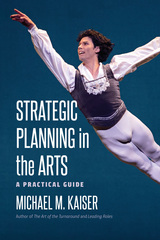 Strategic Planning in the Arts: A Practical Guide
Michael M. Kaiser
Brandeis University Press, 2018 Planning today is more important than ever. Both acquisition and allocation of resources are increasingly difficult for arts organizations as a result of emerging technologies, reduced arts education, aging donors, and the advent of new forms of entertainment. It is essential for arts organizations to take a coherent approach to these issues to remain vibrant over time. In fact, most arts organizations do periodically attempt some kind of planning exercise. But a review of hundreds of such plans suggests that most contain merely a wish list, rather than concrete plans for the future: “We will increase ticket sales!” is a common “strategy” expressed in too many arts plans. In the absence of details about how ticket sales will be increased, it’s an empty promise. In Strategic Planning in the Arts, Michael M. Kaiser, the former head of the Kennedy Center in Washington, DC, and an arts management guru, has produced a clear, concise guide for staff or board members of not-for-profit arts organizations who are responsible for developing, evaluating, or implementing plans. Relying on real-world cases and examples, Kaiser shows how to conceive, assess, and act on every part of the strategic plan, from the mission statement to the financial statement; from managing the board to marketing. Praise for Michael Kaiser: “A rich yet tidy cornucopia of solutions for the challenges facing the American arts scene.”—Washington Post
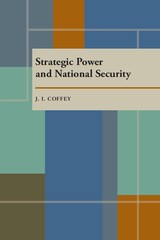 Strategic Power and National Security
J. I. Coffey
University of Pittsburgh Press, 1971
In this closely reasoned and lucid analysis, an important thinker on American strategy surveys weapons technology and its military and political implications for the 1970s. J. I. Coffey refutes the argument that American national security requires “superior” strategic offensive forces or extensive air and missile defenses. In so doing he assesses in simple terms the various factors involved in this complex and difficult subject.
While many books on strategy deal only with a single area or a particular weapons system, this work synthesizes technical and non-technical considerations across the whole range of national security issues affected by strategic power-war-fighting, deterrence, Communist behavior, alliance relationships, nuclear proliferation, and arms control. Its orderly and authoritative marshaling of tabulated data, its citations from Department of Defense documents and congressional hearings, and its classifications of the alternative options which strategy makers can now pursue, are all invaluable to both the student of national security and the professional strategist.
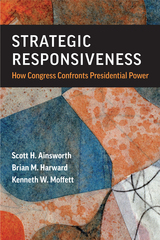 Strategic Responsiveness: How Congress Confronts Presidential Power
Scott H. Ainsworth, Brian M. Harward, and Kenneth W. Moffett
University of Michigan Press, 2025 Because the constitutional separation of powers often leads to delay or obstruction rather than coordinated policymaking, U.S. presidents are increasingly acting unilaterally to move policy. With the issuance of executive orders, signing statements, and policy memoranda, unilateralism has become a defining feature of the American presidency. Can Congress effectively use checks and balances to counter presidential unilateralism?
Strategic Responsiveness takes a theoretically developed and empirically oriented approach— situated within legal and historical contexts—to explore the system of separated powers. The authors find that Congress is not as weak as many perceive it to be and show how members of Congress often anticipate individualized policy loss and choose to respond. These policy struggles shape the constitutional order as surely as broad, statutory constraints might. While the aggrandizement of the presidency and the usurpation of congressional control are not countered, ordinary policy losses are. For members and senators, presidential overreach is fine as long as the policy wins continue, but policy losses may motivate members to reassert congressional prerogatives in policymaking through increased oversight. Strategic Responsiveness reveals how profoundly important policy-level disputes are in the politics of maintaining a particular constitutional order.
 Strategic Warning Intelligence: History, Challenges, and Prospects
John A. Gentry and Joseph S. Gordon
Georgetown University Press, 2019 John A. Gentry and Joseph S. Gordon update our understanding of strategic warning intelligence analysis for the twenty-first century. Strategic warning—the process of long-range analysis to alert senior leaders to trending threats and opportunities that require action—is a critical intelligence function. It also is frequently misunderstood and underappreciated. Gentry and Gordon draw on both their practitioner and academic backgrounds to present a history of the strategic warning function in the US intelligence community. In doing so, they outline the capabilities of analytic methods, explain why strategic warning analysis is so hard, and discuss the special challenges strategic warning encounters from senior decision-makers. They also compare how strategic warning functions in other countries, evaluate why the United States has in recent years emphasized current intelligence instead of strategic warning, and recommend warning-related structural and procedural improvements in the US intelligence community. The authors examine historical case studies, including postmortems of warning failures, to provide examples of the analytic points they make. Strategic Warning Intelligence will interest scholars and practitioners and will be an ideal teaching text for intermediate and advanced students.
Strategies for Academic Writing: A Guide for College Students
Irvin Y. Hashimoto, Barry M. Kroll, and John C. Schafer
University of Michigan Press, 1982 Each chapter of this volume consists of problem-solving exercises aimed at drawing the student's attention to those thought processes that help most in judging cause and effect. Exercises offer students practice in categorizing and sequencing, making comparisons and contrasts, and forming conclusions. These skills help the student writer comprehend and analyze research and organize it into a lucid presentation
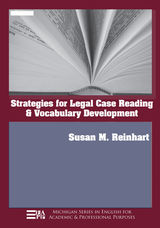 Strategies for Legal Case Reading and Vocabulary Development
Susan M. Reinhart
University of Michigan Press, 2007 Many law students feel that they are learning a new language during their first year of law school. For those students who are not native English speakers this process can be even more overwhelming. Strategies for Legal Case Reading and Vocabulary Development was written for just these students. The goal of the text is to help students develop the case reading and vocabulary strategies they will need to compete and succeed in an American law school.
Strategies for Legal Case Reading and Vocabulary Development begins with an overview of the American legal system and relevant research and guidelines relating to case reading. The book is divided into sections on common law, statutory law, and constitutional law. Approximately twenty cases (some abridged) and eight readings are included in the text. Questions for Discussion follow each case to help students prepare to actively participate in class case discussions. Additional features include hypotheticals (often posed by law professors), vocabulary tasks, and short writing assignments.
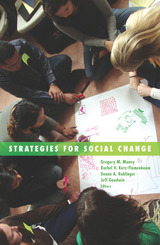 Strategies for Social Change
Gregory M. Maney
University of Minnesota Press, 2012 The theory and practice of social movements come together in strategy—whether, why, and how people can realize their visions of another world by acting together. Strategies for Social Change offers a concise definition of strategy and a framework for differentiating between strategies. Specific chapters address microlevel decision-making processes and creativity, coalition building in Northern Ireland, nonviolent strategies for challenging repressive regimes, identity politics, GLBT rights, the Christian right in Canada and the United States, land struggles in Brazil and India, movement-media publicity, and corporate social movement organizations. Contributors: Jessica Ayo Alabi, Orange Coast College; Kenneth T. Andrews, U of North Carolina at Chapel Hill; Anna-Liisa Aunio, U of Montreal; Linda Blozie; Tina Fetner, McMaster U; James M. Jasper, CUNY; Karen Jeffreys; David S. Meyer, U of California, Irvine; Sharon Erickson Nepstad, U of New Mexico; Francesca Polletta, U of California, Irvine; Belinda Robnett, U of California, Irvine; Charlotte Ryan, U of Massachusetts–Lowell; Carrie Sanders, Wilfrid Laurier U; Kurt Schock, Rutgers U; Jackie Smith, U of Pittsburgh; Suzanne Staggenborg, U of Pittsburgh; Stellan Vinthagen, U West, Sweden; Nancy Whittier, Smith College.
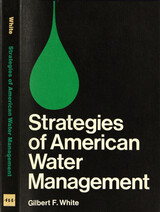 Strategies of American Water Management
Gilbert F. White
University of Michigan Press, 1969 "In a country of parching drought, stinking streams, and muddy floods" (to use the author's words), the management of America's water resources is, and promises to remain, a vital national issue. Yet, while there exist many proposed plans and normative studies in the field of water management little attention has been devoted to the analysis of decisions which have actually been made, and the projects which have actually been undertaken. As Dr. White observes: "... it is not common to analyze water resource activity in terms of the character of decisions made and the strategies they reflect."The theme of this volume is that by examining how people make their choices in managing water from place to place and time to time we can deepen our understanding of the process of water management, and thereby aid in finding more suitable ends and means of manipulating the natural water system."In Strategies of American Water Management, Dr. White outlines a framework in which society's decisions as to water management may be examined, and then discusses six of the major strategies which have been practiced in the United States. Of each strategy the author asks: Who makes what choices? What is the effect upon the public welfare? What is the effect upon the environment? Drawing on personal experience with national and regional water planning efforts, Dr. White in his analysis points up an emerging shift in man's attitude toward nature—the replacement of the view of man as "conqueror" by the view of "harmonizer" and "co-operator." This penetrating and informed study—by an acknowledged authority in the field—constitutes an important contribution toward the intelligent and responsible solution of the problem of American water management.
 Strategies of Commitment and Other Essays
Thomas C. Schelling
Harvard University Press, 2006 All of the essays in this new collection by Thomas Schelling convey his unique perspective on individuals and society. This perspective has several characteristics: it is strategic in that it assumes that an important part of people's behavior is motivated by the thought of influencing other people's expectations; it views the mind as being separable into two or more parts (rational/irrational; present-minded/future-minded); it is motivated by policy concerns--smoking and other addictions, global warming, segregation, nuclear war; and while it accepts many of the basic assumptions of economics--that people are forward-looking, rational decision makers, that resources are scarce, and that incentives are important--it is open to modifying them when appropriate, and open to the findings and insights of other social science disciplines.
Schelling--a 2005 Nobel Prize winner-- has been one of the four or five most important social scientists of the past fifty years, and this collection shows why.
 Strategies of Deconstruction: Derrida and the Myth of the Voice
J. Claude Evans
University of Minnesota Press, 1991 Strategies of Deconstruction was first published in 1991. Minnesota Archive Editions uses digital technology to make long-unavailable books once again accessible, and are published unaltered from the original University of Minnesota Press editions. In the past two decades, the "movement" of deconstruction has bad tremendous impact on a number of academic, disciplines in the United States. However, its force has been rather limited in the field of philosophy, despite the fact that in Europe the practice of deconstruction emerged in the work of philosophers. Although the reasons for this can be debated, two of the more obvious explanations are the mainstream Anglo-American philosophers rarely studied the German and French philosophical traditions in great detail, and deconstruction's focus on discourse and interpretation has made it more attractive to the literary and humanistic disciplines. With this context, Strategies of Deconstruction focuses on the early work of Jacques Derrida, the French philosopher who introduced deconstruction in Speech and Phenomena,his study of Edmund Husserl, and Of Grammatology, and whose philosophical reputation stems in no small part from his work on Husserl. In examining the philosophical import of Derrida's theories of reading, text, and language, specifically as they related to Speech and Phenomena,J. Claude Evans makes careful reference to Husserl's own texts. His analysis indicates that there are many systematic irregularities in Derrida's study and that without those irregularities Derrida's conclusions cannot be substantiated.
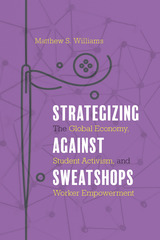 Strategizing against Sweatshops: The Global Economy, Student Activism, and Worker Empowerment
Matthew S. Williams
Temple University Press, 2020 For the past few decades, the U.S. anti-sweatshop movement was bolstered by actions from American college students. United Students Against Sweatshops (USAS) effectively advanced the cause of workers’ rights in sweatshops around the world. Strategizing against Sweatshops chronicles the evolution of student activism and presents an innovative model of how college campuses are a critical site for the advancement of global social justice. Matthew Williams shows how USAS targeted apparel companies outsourcing production to sweatshop factories with weak or non-existent unions. USAS did so by developing a campaign that would support workers organizing by leveraging their college’s partnerships with global apparel firms like Nike and Adidas to abide by pro-labor codes of conduct. Strategizing against Sweatshops exemplifies how organizations and actors cooperate across a movement to formulate a coherent strategy responsive to the conditions in their social environment. Williams also provides a model of political opportunity structure to show how social context shapes the chances of a movement’s success—and how movements can change that political opportunity structure in turn. Ultimately, he shows why progressive student activism remains important.
 Strategy, Evolution, and War: From Apes to Artificial Intelligence
Kenneth Payne
Georgetown University Press, 2018 Decisions about war have always been made by humans, but now intelligent machines are on the cusp of changing things – with dramatic consequences for international affairs. This book explores the evolutionary origins of human strategy, and makes a provocative argument that Artificial Intelligence will radically transform the nature of war by changing the psychological basis of decision-making about violence. Strategy, Evolution, and War is a cautionary preview of how Artificial Intelligence (AI) will revolutionize strategy more than any development in the last three thousand years of military history. Kenneth Payne describes strategy as an evolved package of conscious and unconscious behaviors with roots in our primate ancestry. Our minds were shaped by the need to think about warfare—a constant threat for early humans. As a result, we developed a sophisticated and strategic intelligence. The implications of AI are profound because they depart radically from the biological basis of human intelligence. Rather than being just another tool of war, AI will dramatically speed up decision making and use very different cognitive processes, including when deciding to launch an attack, or escalate violence. AI will change the essence of strategy, the organization of armed forces, and the international order. This book is a fascinating examination of the psychology of strategy-making from prehistoric times, through the ancient world, and into the modern age.
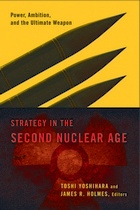 Strategy in the Second Nuclear Age: Power, Ambition, and the Ultimate Weapon
Toshi Yoshihara and James R. Holmes, Editors
Georgetown University Press, 2012 A “second nuclear age” has begun in the post-Cold War world. Created by the expansion of nuclear arsenals and new proliferation in Asia, it has changed the familiar nuclear geometry of the Cold War. Increasing potency of nuclear arsenals in China, India, and Pakistan, the nuclear breakout in North Korea, and the potential for more states to cross the nuclear-weapons threshold from Iran to Japan suggest that the second nuclear age of many competing nuclear powers has the potential to be even less stable than the first. Strategy in the Second Nuclear Age assembles a group of distinguished scholars to grapple with the matter of how the United States, its allies, and its friends must size up the strategies, doctrines, and force structures currently taking shape if they are to design responses that reinforce deterrence amid vastly more complex strategic circumstances. By focusing sharply on strategy—that is, on how states use doomsday weaponry for political gain—the book distinguishes itself from familiar net assessments emphasizing quantifiable factors like hardware, technical characteristics, and manpower. While the emphasis varies from chapter to chapter, contributors pay special heed to the logistical, technological, and social dimensions of strategy alongside the specifics of force structure and operations. They never lose sight of the human factor—the pivotal factor in diplomacy, strategy, and war.
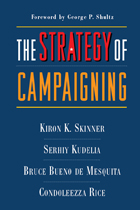 The Strategy of Campaigning: Lessons from Ronald Reagan and Boris Yeltsin
Kiron K. Skinner, Serhiy Kudelia, Bruce Bueno de Mesquita, and Condoleezza Rice
University of Michigan Press, 2010 The Strategy of Campaigning explores the political careers of Ronald Reagan and Boris Yeltsin, two of the most galvanizing and often controversial political figures of our time. Both men overcame defeat early in their political careers and rose to the highest elected offices in their respective countries. The authors demonstrate how and why Reagan and Yeltsin succeeded in their political aspirations, despite—or perhaps because of—their apparent “policy extremism”: that is, their advocacy of policy positions far from the mainstream. The book analyzes the viability of policy extremism as a political strategy that enables candidates to forge new coalitions and outflank conventional political allegiances. Kiron K. Skinner is Associate Professor of International Relations and Political Science at Carnegie Mellon University, a Research Fellow at the Hoover Institution, and a member of the Chief of Naval Operations Executive Panel and the National Security Education Board. Serhiy Kudelia is Lecturer of Politics at Kyiv-Mohyla Academy, Ukraine and advisor to Deputy Prime Minister of Ukraine. Bruce Bueno de Mesquita is Julius Silver Professor and Director of the Alexander Hamilton Center for Political Economy at New York University and a Senior Fellow at the Hoover Institution. Condoleezza Rice is on a leave of absence from Stanford University, where she was a Professor of Political Science and a Senior Fellow at the Hoover Institution. She is currently serving as U.S. Secretary of State.
The Strategy of Conflict
Thomas C. Schelling
Harvard University Press A series of closely interrelated essays on game theory, this book deals with an area in which progress has been least satisfactory—the situations where there is a common interest as well as conflict between adversaries: negotiations, war and threats of war, criminal deterrence, extortion, tacit bargaining
The Strategy of Conflict: With a New Preface by the Author
Thomas C. Schelling
Harvard University Press, 1981 A series of closely interrelated essays on game theory, this book deals with an area in which progress has been least satisfactory—the situations where there is a common interest as well as conflict between adversaries: negotiations, war and threats of war, criminal deterrence, extortion, tacit bargaining. It proposes enlightening similarities between, for instance, maneuvering in limited war and in a traffic jam; deterring the Russians and one’s own children; the modern strategy of terror and the ancient institution of hostages.
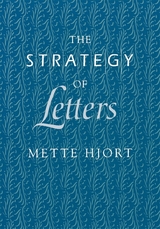 The Strategy of Letters
Mette Hjort
Harvard University Press, 1993 Although literary theories describe a world of strategies—textual, discursive, interpretive, and political—what is missing is the strategist. Poststructuralists try to explain agency as the effect of large-scale systems or formations; as a result, intuitions about individual action and responsibility are expressed in terms of impersonal strategies. Mette Hjort's book responds to this situation by proposing an alternative account of strategic action, one that brings the strategist back into the picture.
Hjort analyzes influential statements made by Derrida, Foucault, and others to show how proposed conceptions of strategy are contradictory, underdeveloped, and at odds with the actual use of the term. Why, then, has the term acquired such rhetorical force? Since “strategy” evokes conflict, Hjort suggests, its very use calls into question various pieties of idealism and humanism, and emphasizes a desired break between modernism and postmodernism. It follows that a theory of strategy must explore some of the psychological implications of conflict, and Hjort pursues these implications through traditions as diverse as game theory, discourse ethics, and the philosophy of war. Unstable frames, self deception, promiscuous pragmatism, and social emotion are some of the phenomena she explores as she develops her account of strategic action in the highly competitive domain of letters.
In her reflection on strategy, Hjort draws on such literary examples as Troilus and Cressida, Tartuffe, the autobiographical writings of Holberg, and early modern French and English treatises on theater. For its well-informed and incisive arguments and literary historical case studies, this book will be invaluable to literary theorists and will appeal to readers interested in drama, philosophy and literature, aesthetics, and theories of agency and rationality.
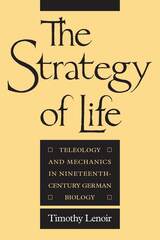 The Strategy of Life: Teleology and Mechanics in Nineteenth-Century German Biology
Timothy Lenoir
University of Chicago Press, 1989 In the early nineteenth century, a group of German biologists led by Johann Friedrich Blumenbach and Karl Friedrich Kielmeyer initiated a search for laws of biological organization that would explain the phenomena of form and function and establish foundations for a unified theory of life. The tradition spawned by these efforts found its most important spokesman in Karl Ernst von Baer. Timothy Lenoir chronicles the hitherto unexplored achievements of the practitioners of this research tradition as they aimed to place functional morphology at the heart of a new science, which they called "biology."
Strongly influenced by Immanuel Kant, the biologists' approach combined a sophisticated teleology with mechanistic theories and sparked bitter controversies with the rival programs, mechanistic reductionism and Darwinism. Although temporarily eclipsed by these two approaches, the morphological tradition, Lenoir argues, was not vanquished in the field of scientific debate. It contributed to pathbreaking research in areas such as comparative anatomy, embryology, paleontology, and biogeography.
A Strategy of Peace in a Changing World
Arthur N. Holcombe
Harvard University Press One of America's most distinguished political scientists presents a collection of articles, papers, and lectures on the subject of world peace. The book is divided into five parts: prologue; three major sections (each with an introductory essay) entitled “American Government and World Order,” “Organizing Peace within a Federal Union,” and “Organizing International Peace”; and an epilogue. The United Nations is thoroughly examined: its structure, achievements, present shortcomings, and potentialities. Holcombe concludes that the U.N. could—with certain changes, which he specifies—become the body of organized world government needed to end the cold war and maintain the peace.
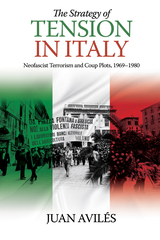 The Strategy of Tension in Italy: Neofascist Terrorism and Coup Plots, 1969–1980
Juan Avilés
Sussex Academic Press, 2022 The third wave of terrorism in Europe has been the subject of numerous studies after David Rapoport's theoretical classification, especially as it relates to "New Left/Marxist/Socialist" activity. But one of its components has not hitherto been subject to scholarly investigation: the Italian neo-fascist terrorism that committed indiscriminate massacres as part of an alleged strategy of stoking political tension. There is evidence that members of the intelligence services and security forces contributed to cover-ups and indeed the neo-fascist murders that took place may have been aimed at creating an atmosphere favourable to a coup d'tat. While conspiracy theories abound there is little in-depth academic research on the circumstances despite the many sources available to researchers: court rulings, evidence gathered by various parliamentary commissions of enquiry, and recently declassified official documents.
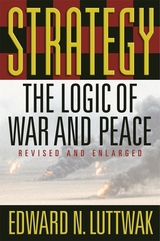 Strategy: The Logic of War and Peace, Revised and Enlarged Edition
Edward N. Luttwak
Harvard University Press, 2001 “If you want peace, prepare for war.” “A buildup of offensive weapons can be purely defensive.” “The worst road may be the best route to battle.” Strategy is made of such seemingly self-contradictory propositions, Edward Luttwak shows—they exemplify the paradoxical logic that pervades the entire realm of conflict.In this widely acclaimed work, now revised and expanded, Luttwak unveils the peculiar logic of strategy level by level, from grand strategy down to combat tactics. Having participated in its planning, Luttwak examines the role of air power in the 1991 Gulf War, then detects the emergence of “post-heroic” war in Kosovo in 1999—an American war in which not a single American soldier was killed.In the tradition of Carl von Clausewitz, Strategy goes beyond paradox to expose the dynamics of reversal at work in the crucible of conflict. As victory is turned into defeat by over-extension, as war brings peace by exhaustion, ordinary linear logic is overthrown. Citing examples from ancient Rome to our own days, from Barbarossa and Pearl Harbor down to minor combat affrays, from the strategy of peace to the latest operational methods of war, this book by one of the world’s foremost authorities reveals the ultimate logic of military failure and success, of war and peace.
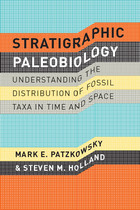 Stratigraphic Paleobiology: Understanding the Distribution of Fossil Taxa in Time and Space
Mark E. Patzkowsky and Steven M. Holland
University of Chicago Press, 2012 Whether the fossil record should be read at face value or whether it presents a distorted view of the history of life is an argument seemingly as old as many fossils themselves. In the late 1700s, Georges Cuvier argued for a literal interpretation, but in the early 1800s, Charles Lyell’s gradualist view of the earth’s history required a more nuanced interpretation of that same record. To this day, the tension between literal and interpretive readings lies at the heart of paleontological research, influencing the way scientists view extinction patterns and their causes, ecosystem persistence and turnover, and the pattern of morphologic change and mode of speciation. With Stratigraphic Paleobiology, Mark E. Patzkowsky and Steven M. Holland present a critical framework for assessing the fossil record, one based on a modern understanding of the principles of sediment accumulation. Patzkowsky and Holland argue that the distribution of fossil taxa in time and space is controlled not only by processes of ecology, evolution, and environmental change, but also by the stratigraphic processes that govern where and when sediment that might contain fossils is deposited and preserved. The authors explore the exciting possibilities of stratigraphic paleobiology, and along the way demonstrate its great potential to answer some of the most critical questions about the history of life: How and why do environmental niches change over time? What is the tempo and mode of evolutionary change and what processes drive this change? How has the diversity of life changed through time, and what processes control this change? And, finally, what is the tempo and mode of change in ecosystems over time?
The Stratigraphy and Archaeology of Ventana Cave
Emil W. Haury
University of Arizona Press, 1975 Re-issue, with new Preface offering recent insights, of the classic archaeological study which produced valuable findings on Hohokam perishable culture.
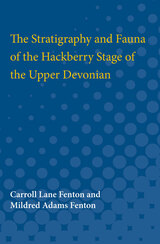 The Stratigraphy and Fauna of the Hackberry Stage of the Upper Devonian
By Carroll Lane Fenton and Mildred Adams Fenton
University of Michigan Press, 1925 The Stratigraphy and Fauna of the Hackberry Stage of the Upper Devonian looks at the rocks of the Hackberry stage, which are exposed throughout a narrow belt in north central Iowa and constitute the uppermost member of the Devonian section. Although limited in area and in thickness, the Hackberry contains an abundant fauna, preserved with unusual excellence. A number of the species were described and illustrated in the publications of Hall, Hall and Whitfield, Hall and Clarke, Calvin, Webster, and others, but, at the time of this publication, most of them remained undescribed or erroneously identified with eastern species. Here Carroll Lane Fenton and Mildred Adams Fenton furnish a detailed account of the Hackberry strata, with sections accompanied by an adequate—though not complete—discussion of the fauna. Most of the typical species of fauna are described, as well as many rarer ones. In a few cases, detailed treatments of varieties, evolution, and association have been possible. Lack of time has prevented description of the Protozoa and the Stromatoporoidea, of which there are numerous species, most of which are undescribed.
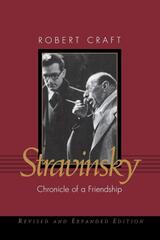 Stravinsky: Chronicle of a Friendship
Robert Craft
Vanderbilt University Press, 1994 The standard biographical source for the last decades of Stravinsky's life and a unique trove of primary material on twentieth-century cultural and intellectual history, now again available, in expanded form.
For nearly the last twenty-five years of Igor Stravinsky's incredibly full life, the noted musician, conductor, and writer Robert Craft was his closest colleague and friend, a trusted member of his household, and an important part of all of the composer's activities. Throughout these years, Craft kept a detailed diary, impressive in its powers of observation and characterization. That diary forms the basis for Stravinsky: Chronicle of a Friendship, now released in a substantially revised and expanded new edition.
This edition includes nearly twice as many illustrations and more than 35% entirely new textual material. In addition, Craft adds an evocative "Postlude" in which he summarily brings matters forward to the death of Vera Stravinsky, several years after that of the Maestro.
 Straw in the Sun: A Memoir
Charlie May Simon
University of Arkansas Press, 2025 “Last spring I went to Rocky Crossing again. New green grass was sprouting on the high ridge of the road that led there, and now and then there grew a persimmon shoot, or a small hickory, where a nut had fallen and opened deep in the untrampled earth. But the ruts made long ago by passing wagons were still there, guiding the wheels of our car through the dense forest, around the boulders and between the tall trees. I was like a ghost returning to a place once loved.”
These opening lines of Charlie May Simon’s Straw in the Sun invite readers on a personal journey of remembrance as Simon recounts her homesteading experiment in Depression-era Arkansas. Years before she established herself as a regional author of national renown, she chose a spot near Cove Creek, now part of Ouachita National Forest, to forge a home from rugged land, meeting both a backbreaking series of challenges and a vivid cast of characters in the process.
Nationally popular upon its release in 1945, Simon’s lyrical memoir was praised from the outset for its warmth and charm. At once an ethnographic narrative of a hill community and an accessible portrait of Ozarks memories at their most idyllic, Straw in the Sun, offered here with a robust introduction from Simon scholar Aleshia O’Neal, is a classic ready for rediscovery by a new generation of readers.
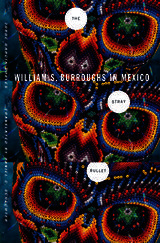 The Stray Bullet: William S. Burroughs in Mexico
Jorge García-Robles
University of Minnesota Press, 2013
William S. Burroughs arrived in Mexico City in 1949, having slipped out of New Orleans while awaiting trial on drug and weapons charges that would almost certainly have resulted in a lengthy prison sentence. Still uncertain about being a writer, he had left behind a series of failed business ventures—including a scheme to grow marijuana in Texas and sell it in New York—and an already long history of drug use and arrests. He would remain in Mexico for three years, a period that culminated in the defining incident of his life: Burroughs shot his common-law wife, Joan Vollmer, while playing William Tell with a loaded pistol. (He would be tried and convicted of murder in absentia after fleeing Mexico.)
First published in 1995 in Mexico, where it received the Malcolm Lowry literary essay award, The Stray Bullet is an imaginative and riveting account of Burroughs’s formative experiences in Mexico, his fascination with Mexico City’s demimonde, his acquaintances and friendships there, and his contradictory attitudes toward the country and its culture. Mexico, Jorge García-Robles makes clear, was the place in which Burroughs embarked on his “fatal vocation as a writer.” Through meticulous research and interviews with those who knew Burroughs and his circle in Mexico City, García-Robles brilliantly portrays a time in Burroughs’s life that has been overshadowed by the tragedy of Joan Vollmer’s death. He re-creates the bohemian Roma neighborhood where Burroughs resided with Joan and their children, the streets of postwar Mexico City that Burroughs explored, and such infamous figures as Lola la Chata, queen of the city’s drug trade. This compelling book also offers a contribution by Burroughs himself—an evocative sketch of his shady Mexican attorney, Bernabé Jurado.
Stray Home
Amy M. Clark
University of North Texas Press, 2010
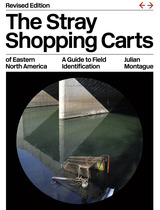 The Stray Shopping Carts of Eastern North America: A Guide to Field Identification
Julian Montague
University of Chicago Press, 2023 A taxonomy we didn’t know we needed for identifying and cataloging stray shopping carts by artist and photographer Julian Montague.
Abandoned shopping carts are everywhere, and yet we know so little about them. Where do they come from? Why are they there? Their complexity and history baffle even the most careful urban explorer.
Thankfully, artist Julian Montague has created a comprehensive and well-documented taxonomy with The Stray Shopping Carts of Eastern North America. Spanning thirty-three categories from damaged, fragment, and plow crush to plaza drift and bus stop discard, it is a tonic for times defined increasingly by rhetoric and media and less by the plain objects and facts of the real world. Montague’s incomparable documentation of this common feature of the urban landscape helps us see the natural and man-made worlds—and perhaps even ourselves—anew.
First published in 2006 to great perplexity and acclaim alike, Montague’s book now appears in refreshed and expanded form. Told in an exceedingly dry voice, with full-color illustrations and photographs throughout, it is both rigorous and absurd, offering a strangely compelling vision of how we approach, classify, and understand the environments around us. A new afterword sheds light on the origins of the project.
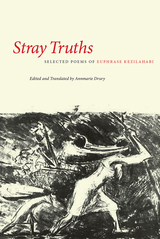 Stray Truths: Selected Poems of Euphrase Kezilahabi
Annmarie Drury
Michigan State University Press, 2015 Stray Truths is a stirring introduction to the poetry of Euphrase Kezilahabi, one of Africa’s major living authors, published here for the first time in English. Born in 1944 on Ukerewe Island in Tanzania (then the Territory of Tanganyika), Kezilahabi came of age in the newly independent nation. His poetry confronts the task of postcolonial nation building and its conundrums, and explores personal loss in parallel with nationwide disappointments. Kezilahabi sparked controversy when he published his first poetry collection in 1974, introducing free verse into Swahili. His next two volumes of poetry (published in 1988 and 2008) confirmed his status as a pioneering and modernizing literary force. Stray Truths draws on each of those landmark collections, allowing readers to encounter the myriad forms and themes significant to this poet over a span of more than three decades. Even as these poems jettison the constraints of traditional Swahili forms, their use of metaphor connects them to traditional Swahili poetics, and their representational strategies link them to indigenous African arts more broadly. To date, translations of Swahili poetry have been focused on scholarly interpretations. This literary translation, in contrast, invites a wide audience of readers to appreciate the verbal art of this seminal modernist writer.
Streaming Analytics: Concepts, architectures, platforms, use cases and applications
Pethuru Raj
The Institution of Engineering and Technology, 2022 When digitized entities, connected devices and microservices interact purposefully, we end up with a massive amount of multi-structured streaming (real-time) data that is continuously generated by different sources at high speed. Streaming analytics allows the management, monitoring, and real-time analytics of live streaming data. The topic has grown in importance due to the emergence of online analytics and edge and IoT platforms. A real digital transformation is being achieved across industry verticals through meticulous data collection, cleansing and crunching in real time. Capturing and subjecting those value-adding events is considered to be the prime task for achieving trustworthy and timely insights.
 Streaming Music, Streaming Capital
Eric Drott
Duke University Press, 2024 In Streaming Music, Streaming Capital, Eric Drott analyzes the political economy of online music streaming platforms. Attentive to the way streaming has reordered the production, circulation, and consumption of music, Drott examines key features of this new musical economy, including the roles played by data collection, playlisting, new methods of copyright enforcement, and the calculation of listening metrics. Yet because streaming underscores how uneasily music sits within existing regimes of private property, its rise calls for a broader reconsideration of music’s complex and contradictory relation to capitalism. Drott's analysis is not simply a matter of how music is formatted in line with dominant measures of economic value; equally important is how music eludes such measures, a situation that threatens to reduce music to a cheap, abundant resource. By interrogating the tensions between streaming’s benefits and pitfalls, Drott sheds light on music’s situation within digital capitalism, from growing concentrations of monopoly power and music’s use in corporate surveillance to issues of musical value, labor, and artist pay.
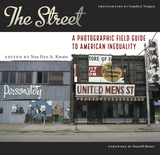 The Street: A Photographic Field Guide to American Inequality
Naa Oyo A. Kwate
Rutgers University Press, 2021 Vacant lots. Historic buildings overgrown with weeds. Walls and alleyways covered with graffiti. These are sights associated with countless inner-city neighborhoods in America, and yet many viewers have trouble getting beyond the surface of such images, whether they are denigrating them as signs of a dangerous ghetto or romanticizing them as traits of a beautiful ruined landscape. The Street: A Field Guide to Inequality provides readers with the critical tools they need to go beyond such superficial interpretations of urban decay.
Using MacArthur fellow Camilo José Vergara’s intimate street photographs of Camden, New Jersey as reference points, the essays in this collection analyze these images within the context of troubled histories and misguided policies that have exacerbated racial and economic inequalities. Rather than blaming Camden’s residents for the blighted urban landscape, the multidisciplinary array of scholars contributing to this guide reveal the oppressive structures and institutional failures that have led the city to this condition. Tackling topics such as race and law enforcement, gentrification, food deserts, urban aesthetics, credit markets, health care, childcare, and schooling, the contributors challenge conventional thinking about what we should observe when looking at neighborhoods.
Street Addicts in the Political Economy
Alisse Waterston
Temple University Press, 1997 In this book, Alisse Waterston reveals the economic, political, and ideological forces that shape the nature of street-addict life. Disputing the view that hard-core, low-income drug users are social marginals situated in deviant subcultures, the author dispels popular images of the mythic, dark dope fiend haunting our city streets. Using dramatic, first-person accounts from New York City addicts, Waterston analyzes their position in the social structure, the kind of work -- both legal and illegal -- they perform, and their relations with family, friends, and lovers. She presents a moving account of daily life from the addict's point of view and demonstrates how addicts are structurally vulnerable to the larger sociocultural system within which they live.
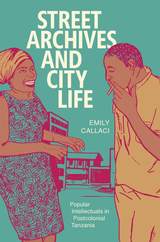 Street Archives and City Life: Popular Intellectuals in Postcolonial Tanzania
Emily Callaci
Duke University Press, 2017 In Street Archives and City Life Emily Callaci maps a new terrain of political and cultural production in mid- to late twentieth-century Tanzanian urban landscapes. While the postcolonial Tanzanian ruling party (TANU) adopted a policy of rural socialism known as Ujamaa between 1967 and 1985, an influx of youth migrants to the city of Dar es Salaam generated innovative forms of urbanism through the production and circulation of what Callaci calls street archives. These urban intellectuals neither supported nor contested the ruling party's anti-city philosophy; rather, they navigated the complexities of inhabiting unplanned African cities during economic crisis and social transformation through various forms of popular texts that included women's Christian advice literature, newspaper columns, self-published pulp fiction novellas, and song lyrics. Through these textual networks, Callaci shows how youth migrants and urban intellectuals in Dar es Salaam fashioned a collective ethos of postcolonial African citizenship. This spirit ushered in a revolution rooted in the city and its networks—an urban revolution that arose in spite of the nation-state's pro-rural ideology.
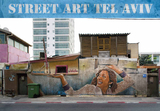 Street Art Tel Aviv: In a Time of Transition. Curated, photographed and introduced by Lord K2 and Lois Stavsky
Lord K2
Sussex Academic Press, 2022 Distinctly unique, Tel Aviv's street art represents a wide spectrum of cultural backgrounds and aesthetic sensibilities. Echoing the uncertainty that permeates Israel's daily existence, it possesses a rawness and energy found in few modern cities. Through more than 250 images, 14 artist profiles, and comprehensive research, Street Art Tel Aviv ;introduces the reader to an alternative visual culture that has developed and thrived at a time when the city's building exteriors are plentiful, and living and work spaces are still available to emerging artists. At the turn of the 21st century, Tel Aviv's gritty streets, particularly those in southern industrial neighborhoods, began to host a motley array of spectral faces, uncanny figures, and curious characters. Herewith the opportunity to explore this vibrant city's visual landscape at a time of transition for both the city itself and for this new visual art genre.
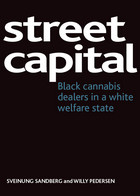 Street capital: Black cannabis dealers in a white welfare state
Sveinung Sandberg and Willy Pedersen
Bristol University Press, 2011 'Street capital' introduces the worlds of young black men dealing cannabis at a drug scene called The River in Oslo, Norway. The lives of these men are structured by a huge and complex cannabis economy and they are involved in fights, robberies and substance abuse. They lack jobs and education, and many of them do not have family or close friends, yet they do have 'street capital': the knowledge, skills and competence necessary to manage life on the streets.Centred on this concept of 'street capital', this unique book presents a new theoretical framework - inspired by and expanding on the work of Pierre Bourdieu, the French sociologist - for understanding street cultures. It is based on extensive fieldwork and repeated in-depth interviews with dealers aged between 15 and 30, which explore themes including marginalisation, discrimination, cannabis dealing and drug use, violence, masculinity, hip-hop culture, experiences with the welfare system, and issues of immigration and racism. The book also analyses the discursive practice of marginalised people on the street and identifies the narratives by which these young men live.
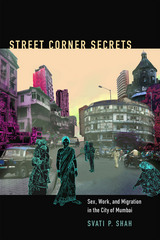 Street Corner Secrets: Sex, Work, and Migration in the City of Mumbai
Svati P. Shah
Duke University Press, 2014 Street Corner Secrets challenges widespread notions of sex work in India by examining solicitation in three spaces within the city of Mumbai that are seldom placed within the same analytic frame—brothels, streets, and public day-wage labor markets (nakas), where sexual commerce may be solicited discretely alongside other income-generating activities. Focusing on women who migrated to Mumbai from rural, economically underdeveloped areas within India, Svati P. Shah argues that selling sexual services is one of a number of ways women working as laborers may earn a living, demonstrating that sex work, like day labor, is a part of India's vast informal economy. Here, various means of earning—legitimized or stigmatized, legal or illegal—overlap or exist in close proximity to one another, shaping a narrow field of livelihood options that women navigate daily. In the course of this rich ethnography, Shah discusses policing practices, migrants' access to housing and water, the idea of public space, critiques of states and citizenship, and the discursive location of violence within debates on sexual commerce. Throughout, the book analyzes the epistemology of prostitution, and the silences and secrets that constitute the discourse of sexual commerce on Mumbai's streets.
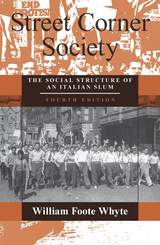 Street Corner Society: The Social Structure of an Italian Slum
William Foote Whyte
University of Chicago Press, 1993 Street Corner Society is one of a handful of works that can justifiably be called classics of sociological research. William Foote Whyte's account of the Italian American slum he called "Cornerville"—Boston's North End—has been the model for urban ethnography for fifty years.
By mapping the intricate social worlds of street gangs and "corner boys," Whyte was among the first to demonstrate that a poor community need not be socially disorganized. His writing set a standard for vivid portrayals of real people in real situations. And his frank discussion of his methodology—participant observation—has served as an essential casebook in field research for generations of students and scholars.
This fiftieth anniversary edition includes a new preface and revisions to the methodological appendix. In a new section on the book's legacy, Whyte responds to recent challenges to the validity, interpretation, and uses of his data. "The Whyte Impact on the Underdog," the moving statement by a gang leader who became the author's first research assistant, is preserved.
"Street Corner Society broke new ground and set a standard for field research in American cities that remains a source of intellectual challenge."—Robert Washington, Reviews in Anthropology
Street Fashion Moscow
Elena Siemens
Intellect Books, 2017 Few cities in the world offer the diversity of stunning visuals that can be found on the streets of Moscow, from famous landmarks like Red Square to the Boulevard Ring and Kamergersky Lane and the residential areas beyond the Garden Ring. For this book, former Moscow resident Elena Siemens traveled them all as an urban flâneur, taking photographs of contemporary fashion in action and setting it alongside explorations of modern and historic representations of fashion and beauty as seen in a wide variety of products of Russian culture. Through her photos and analysis, Siemens considers the question of how contemporary Russians understand their post-Soviet identity and express it through the ways they present themselves in public.
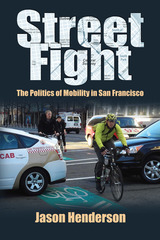 Street Fight: The Politics of Mobility in San Francisco
Jason Henderson
University of Massachusetts Press, 2013 Faced with intolerable congestion and noxious pollution, cities around the world are rethinking their reliance on automobiles. In the United States a loosely organized livability movement seeks to reduce car use by reconfiguring urban space into denser, transit-oriented, walkable forms, a development pattern also associated with smart growth and new urbanism. Through a detailed case study of San Francisco, Jason Henderson examines how this is not just a struggle over what type of transportation is best for the city, but a series of ideologically charged political fights over issues of street space, public policy, and social justice.
Historically San Francisco has hosted many activist demonstrations over its streets, from the freeway revolts of the 1960s to the first Critical Mass bicycle rides decades later. Today the city's planning and advocacy establishment is changing zoning laws to limit the number of parking spaces, encouraging new car-free housing near transit stations, and applying "transit first" policies, such as restricted bus lanes. Yet Henderson warns that the city's accomplishments should not be romanticized. Despite significant gains by livability advocates, automobiles continue to dominate the streets, and the city's financially strained bus system is slow and often unreliable.
Both optimistic and cautionary, Henderson argues that ideology must be understood as part of the struggle for sustainable cities and that three competing points of view—progressive, neoliberal, and conservative—have come to dominate the contemporary discourse about urban mobility. Consistent with its iconic role as an incubator of environmental, labor, civil rights, and peace movements, San Francisco offers a compelling example of how the debate over sustainable urban transportation may unfold both in the United States and globally.
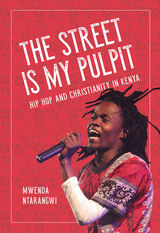 The Street Is My Pulpit: Hip Hop and Christianity in Kenya
Mwenda Ntarangwi
University of Illinois Press, 2016 To some, Christianity and hip hop seem antithetical. Not so in Kenya. There, the music of Julius Owino, aka Juliani, blends faith and beats into a potent hip hop gospel aimed at a youth culture hungry for answers spiritual, material, and otherwise. Mwenda Ntarangwi explores the Kenyan hip hop scene through the lens of Juliani's life and career. A born-again Christian, Juliani produces work highlighting the tensions between hip hop's forceful self-expression and a pious approach to public life, even while contesting the basic presumptions of both. In The Street Is My Pulpit, Ntarangwi forges an uncommon collaboration with his subject that offers insights into Juliani's art and goals even as Ntarangwi explores his own religious experience and subjective identity as an ethnographer. What emerges is an original contribution to the scholarship on hip hop's global impact and a passionate study of the music's role in shaping new ways of being Christian in Africa.
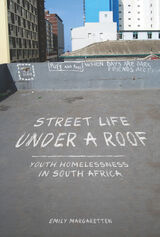 Street Life under a Roof: Youth Homelessness in South Africa
Emily Margaretten
University of Illinois Press, 2015 Point Place stands near the city center of Durban, South Africa. Condemned and off the grid, the five-story apartment building is nonetheless home to a hundred-plus teenagers and young adults marginalized by poverty and chronic unemployment. In Street Life under a Roof, Emily Margaretten draws on ten years of up-close fieldwork to explore the distinct cultural universe of the Point Place community. Margaretten's sensitive investigations reveal how young men and women draw on customary notions of respect and support to forge an ethos of connection and care that allows them to live far richer lives than ordinarily assumed. Her discussion of gender dynamics highlights terms like nakana--to care about or take notice of another--that young women and men use to construct "outside" and "inside" boyfriends and girlfriends and to communicate notions of trust. Margaretten exposes the structures of inequality at a local, regional, and global level that contribute to socioeconomic and political dislocation. But she also challenges the idea that Point Place's marginalized residents need "rehabilitation." As she argues, these young men and women want love, secure homes, and the means to provide for their dependents--in short, the same hopes and aspirations mirrored across South African society.
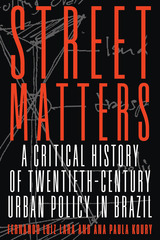 Street Matters: A Critical History of Twentieth-Century Urban Policy in Brazil
Fernando Lara and Ana Paula Koury
University of Pittsburgh Press, 2022 Street Matters links urban policy and planning with street protests in Brazil. It begins with the 2013 demonstrations that ostensibly began over public transportation fare increases but quickly grew to address larger questions of inequality. This inequality is physically manifested across Brazil, most visibly in its sprawling urban favelas. The authors propose an understanding of the social and spatial dynamics at play that is based on property, labor, and security. They stitch together the history of plans for urban space with the popular protests that Brazilians organized to fight for property and land. They embed the history of civil society within the history of urban planning and its institutionalization to show how urban and regional planning played a key role in the management of the social conflicts surrounding land ownership. If urban and regional planning at times benefited the expansion of civil rights, it also often worked on behalf of class exploitation, deepening spatial inequalities and conflicts embedded in different city spaces.
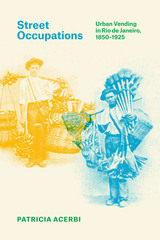 Street Occupations: Urban Vending in Rio de Janeiro, 1850–1925
By Patricia Acerbi
University of Texas Press, 2017 Winner, Warren Dean Memorial Prize, Conference on Latin American History (CLAH), 2018 Street vending has supplied the inhabitants of Rio de Janeiro with basic goods for several centuries. Once the province of African slaves and free blacks, street commerce became a site of expanded (mostly European) immigrant participation and shifting state regulations during the transition from enslaved to free labor and into the early post-abolition period. Street Occupations investigates how street vendors and state authorities negotiated this transition, during which vendors sought greater freedom to engage in commerce and authorities imposed new regulations in the name of modernity and progress. Examining ganhador (street worker) licenses, newspaper reports, and detention and court records, and considering the emergence of a protective association for vendors, Patricia Acerbi reveals that street sellers were not marginal urban dwellers in Rio but active participants in a debate over citizenship. In their struggles to sell freely throughout the Brazilian capital, vendors asserted their citizenship as urban participants with rights to the city and to the freedom of commerce. In tracing how vendors resisted efforts to police and repress their activities, Acerbi demonstrates the persistence of street commerce and vendors’ tireless activity in the city, which the law eventually accommodated through municipal street commerce regulation passed in 1924. A focused history of a crucial era of transition in Brazil, Street Occupations offers important new perspectives on patron-client relations, slavery and abolition, policing, the use of public space, the practice of free labor, the meaning of citizenship, and the formality and informality of work.
Street of Dreams: The Nature and Legacy of the 1960s
Douglas M. Knight
Duke University Press, 1989 The 1960s are well documented but not well understood; the rhetoric of and reaction to the decade continues to trouble American public discourse. This work by Douglas Knight, who served as president of Duke University from 1963 to 1969 during clashes on that campus, is not only an honest account of one institution’s experience, but draws parallels to the situations on other campuses and seeks to comprehend the time and its enduring influence.
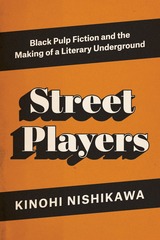 Street Players: Black Pulp Fiction and the Making of a Literary Underground
Kinohi Nishikawa
University of Chicago Press, 2018 The uncontested center of the black pulp fiction universe for more than four decades was the Los Angeles publisher Holloway House. From the late 1960s until it closed in 2008, Holloway House specialized in cheap paperbacks with page-turning narratives featuring black protagonists in crime stories, conspiracy thrillers, prison novels, and Westerns. From Iceberg Slim’s Pimp to Donald Goines’s Never Die Alone, the thread that tied all of these books together—and made them distinct from the majority of American pulp—was an unfailing veneration of black masculinity. Zeroing in on Holloway House, Street Players explores how this world of black pulp fiction was produced, received, and recreated over time and across different communities of readers.
Kinohi Nishikawa contends that black pulp fiction was built on white readers’ fears of the feminization of society—and the appeal of black masculinity as a way to counter it. In essence, it was the original form of blaxploitation: a strategy of mass-marketing race to suit the reactionary fantasies of a white audience. But while chauvinism and misogyny remained troubling yet constitutive aspects of this literature, from 1973 onward, Holloway House moved away from publishing sleaze for a white audience to publishing solely for black readers. The standard account of this literary phenomenon is based almost entirely on where this literature ended up: in the hands of black, male, working-class readers. When it closed, Holloway House was synonymous with genre fiction written by black authors for black readers—a field of cultural production that Nishikawa terms the black literary underground. But as Street Players demonstrates, this cultural authenticity had to be created, promoted, and in some cases made up, and there is a story of exploitation at the heart of black pulp fiction’s origins that cannot be ignored.
Street Politics in the Age of Austerity: From the Indignados to Occupy
Edited by Marcos Ancelovici, Pascale Dufour, and Héloïse Nez
Amsterdam University Press, 2016 The past few years have seen an unexpected resurgence of street-level protest movements around the world, from the uprisings of the Arab Spring to the rise of the anti-austerity Indignados in Spain and Greece to the global spread of the Occupy movement. This collection is designed to offer a comparative analysis of these movements, setting them in international, socio-economic, and cross-cultural perspective in order to help us understand why movements emerge, what they do, how they spread, and how they fit into both local and worldwide historical contexts. As the most significant wave of mass protests in decades continues apace, this book offers an authoritative analysis that could not be more timely.
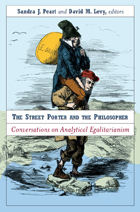 The Street Porter and the Philosopher: Conversations on Analytical Egalitarianism
Sandra J. Peart and David M. Levy, editors
University of Michigan Press, 2009 Adam Smith, asserting the common humanity of the street porter and the philosopher, articulated the classical economists' model of social interactions as exchanges among equals. This model had largely fallen out of favor until, recently, a number of scholars in the avant-garde of economic thought rediscovered it and rechristened it "analytical egalitarianism." In this volume, Sandra J. Peart and David M. Levy bring together an impressive array of authors to explore the ramifications of this analytical ideal and to discuss the ways in which an egalitarian theory of individuality can enable economists to reconcile ideas from opposite ends of the political spectrum. "The analytical egalitarianism project that Peart and Levy have advanced has come to occupy a prominent place in the current agenda of historians of economic thought."
---Ross Emmett, Associate Professor of Economics and Co-Director of the Michigan Center for Innovation and Economic Prosperity, Michigan State University "These essays and dialogs from the Summer Institute would make Adam Smith, economist and moral philosopher, proud."
---J. Daniel Hammond, Hultquist Family Professor of Economics, Wake Forest University With essays by: - James M. Buchanan, Alfred Nobel Memorial Prize in Economic Sciences recipient (1985) and Professor Emeritus, George Mason University and Virginia Polytechnic and State University
- Juan Pablo Couyoumdijian, Universidad del Desearrollo, Chile
- Tyler Cowen, George Mason University
- Eric Crampton, University of Canterbury, New Zealand
- Andrew Farrant, Dickinson College
- Samuel Hollander, Professor Emeritus, University of Toronto
- M. Ali Khan, Johns Hopkins University
- Thomas Leonard, Princeton University
- Deirdre McCloskey, University of Illinois, Chicago
- Leonidas Montes, Dean of School of Government, Universidad Adolfo Ibañez, Chile
- Maria Pia Paganelli, Yeshiva University and New York University
- Warren J. Samuels, Professor Emeritus, Michigan State University
- Eric Schliesser, VENI post-doctoral research fellow, Leiden University, and University of Amsterdam
- Gordon Tullock, George Mason University
Sandra J. Peart is Dean of the Jepson School of Leadership Studies, University of Richmond, Virginia. David M. Levy is Professor of Economics at George Mason University (GMU) and Research Associate at the Center for Study of Public Choice at GMU. They are Co-Directors of George Mason University's Summer Institute for the Preservation of the History of Economics.
|
|
